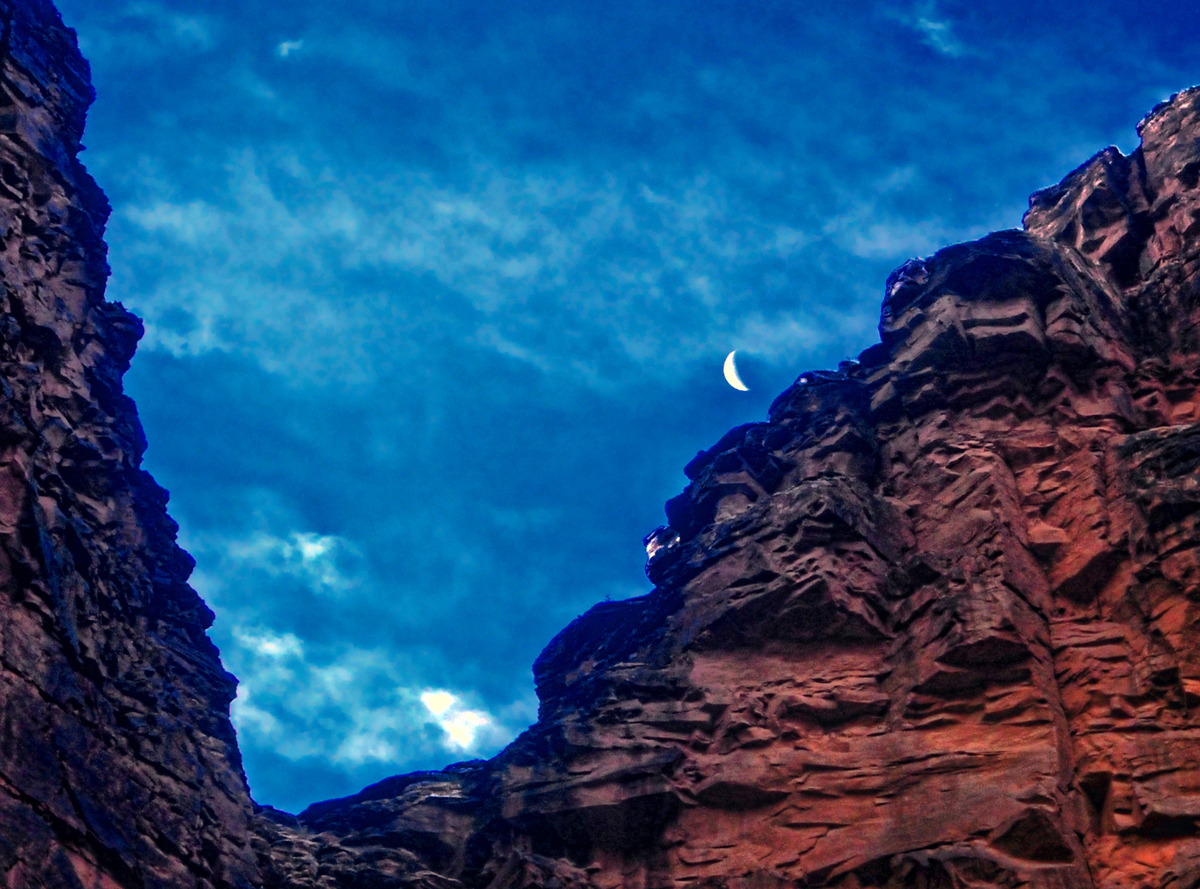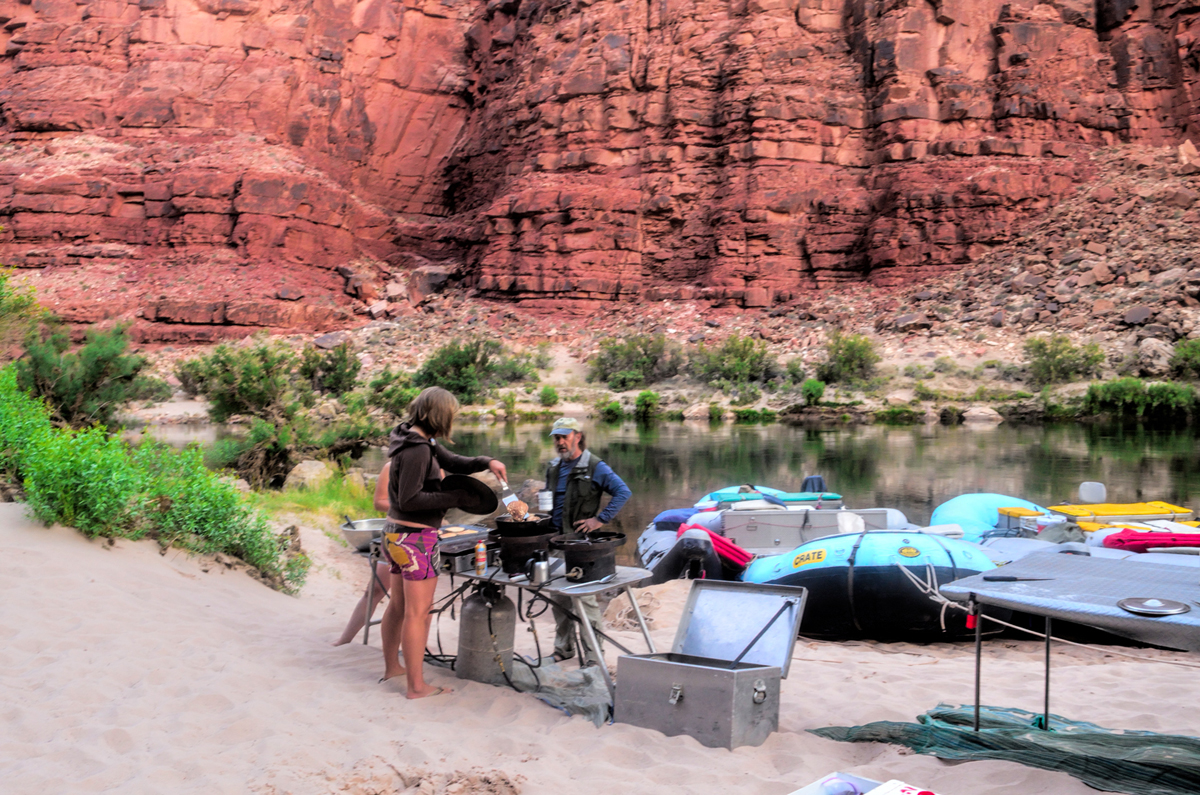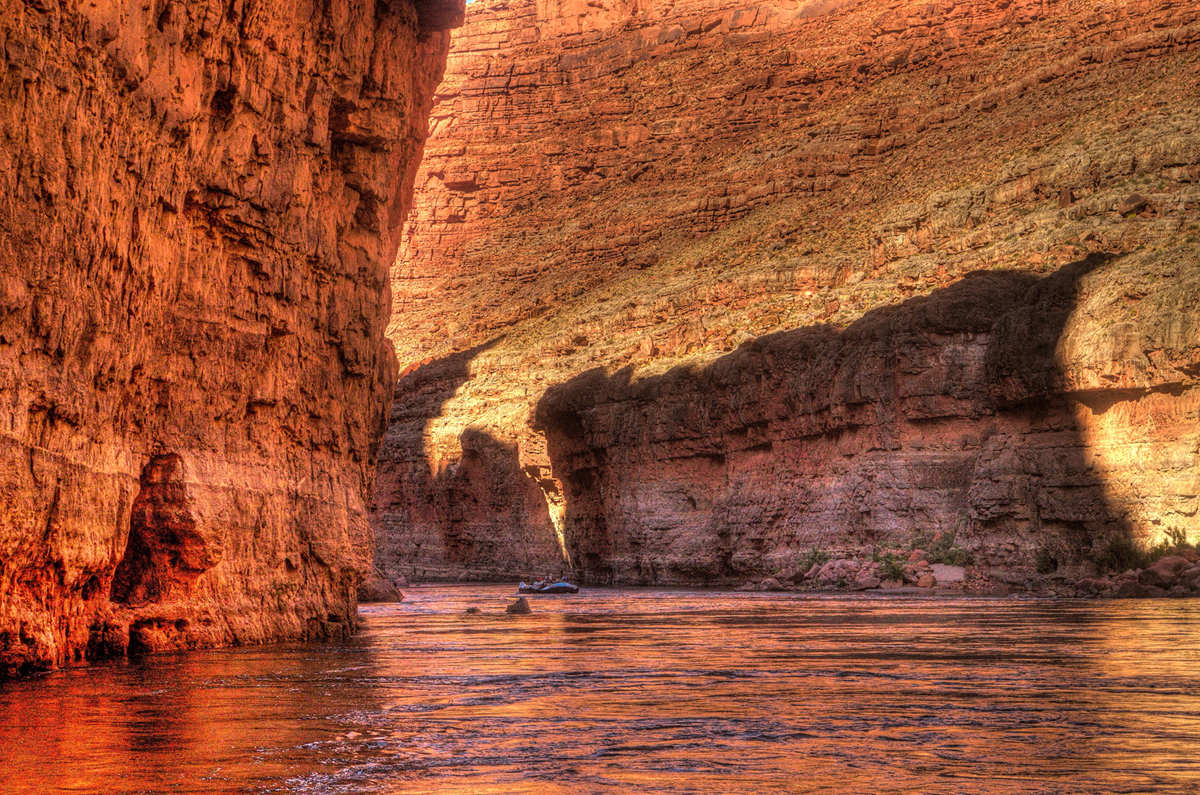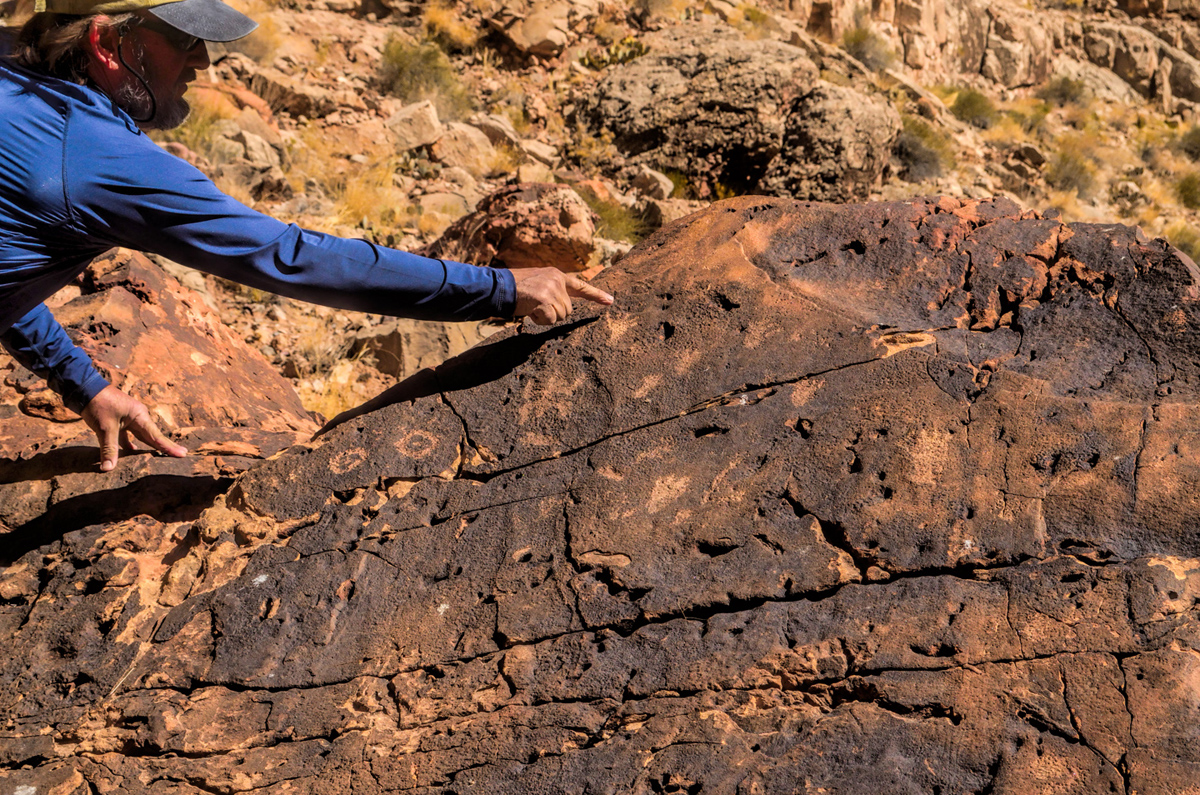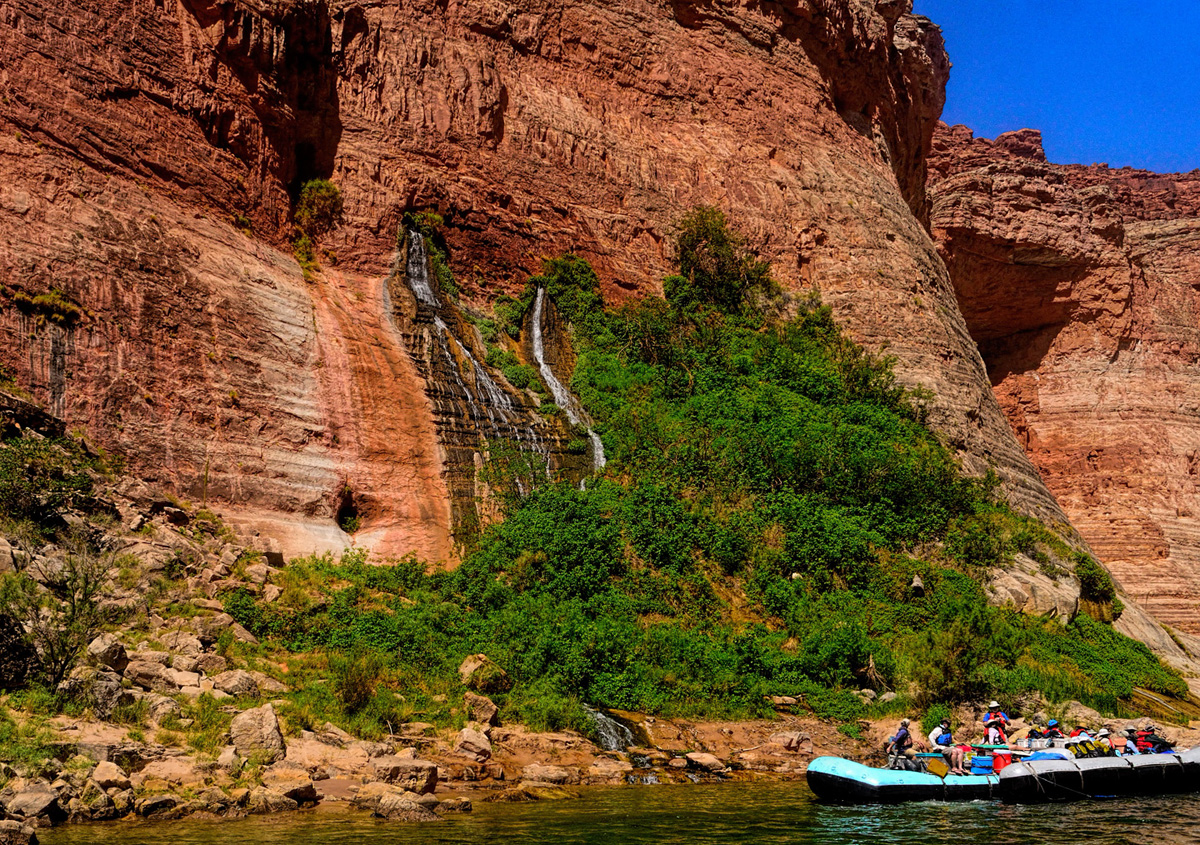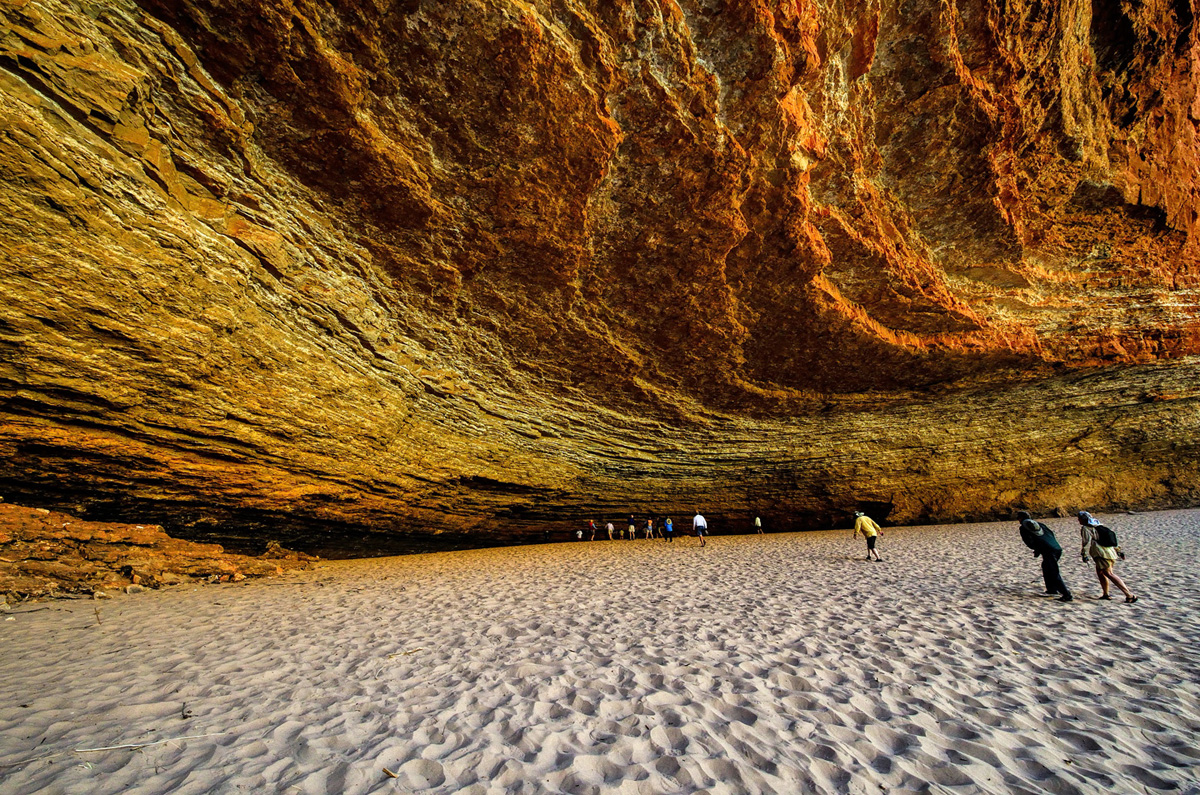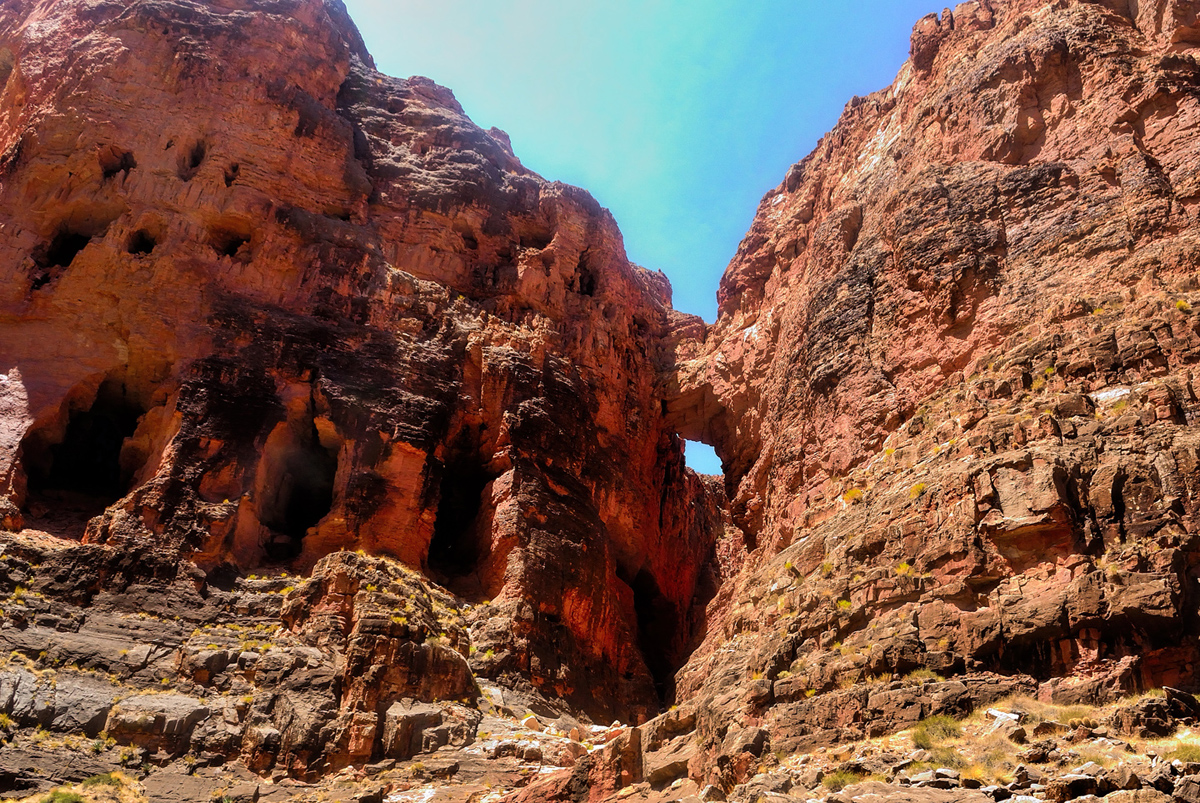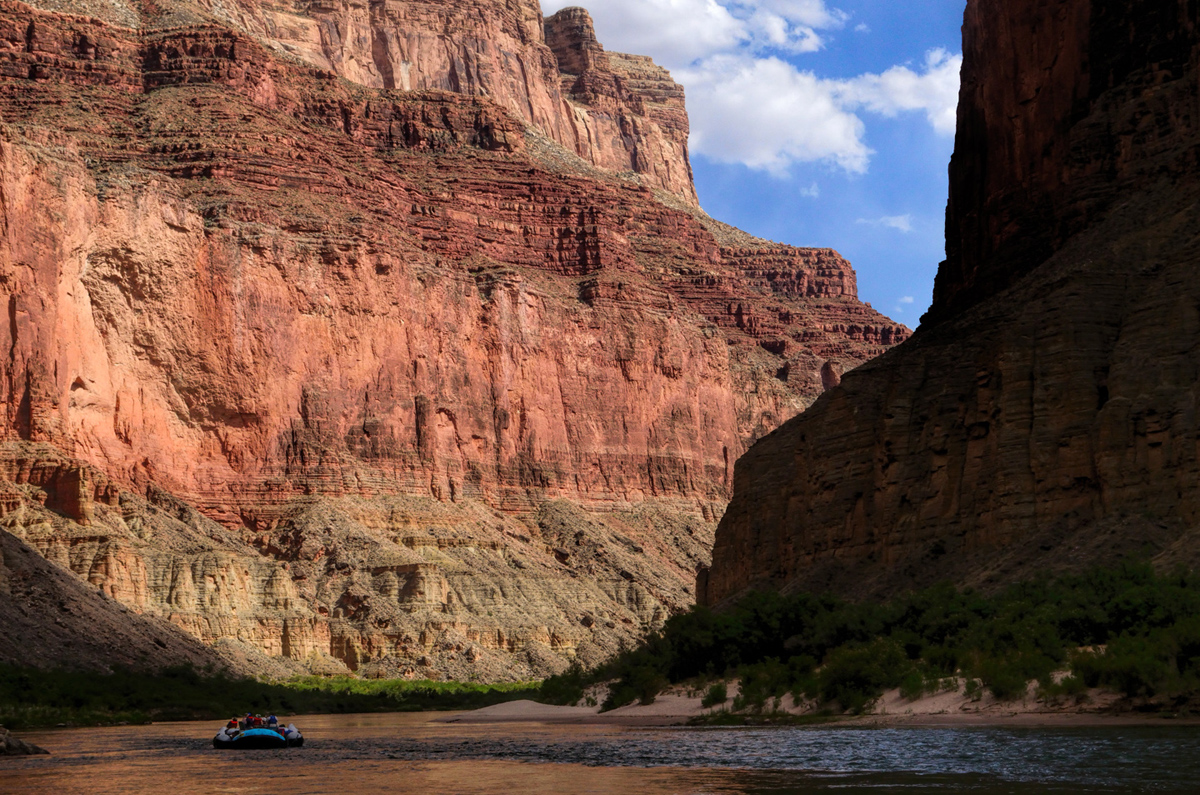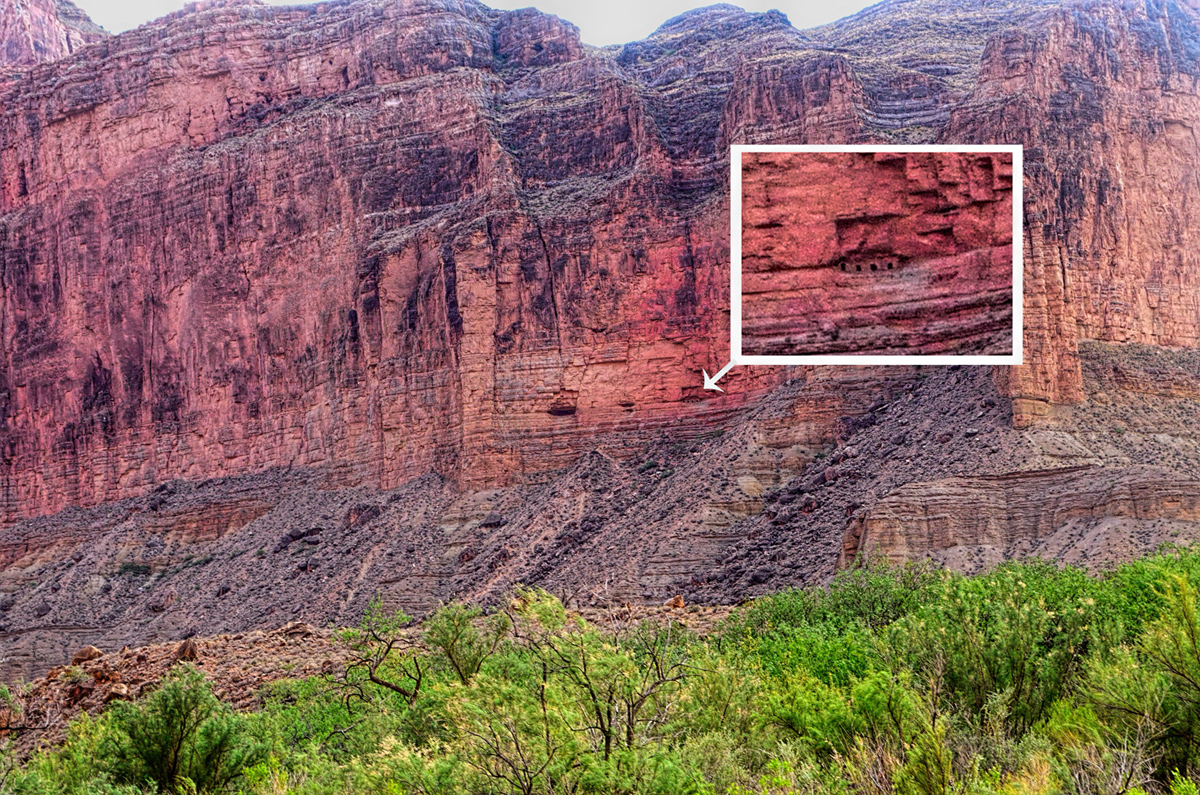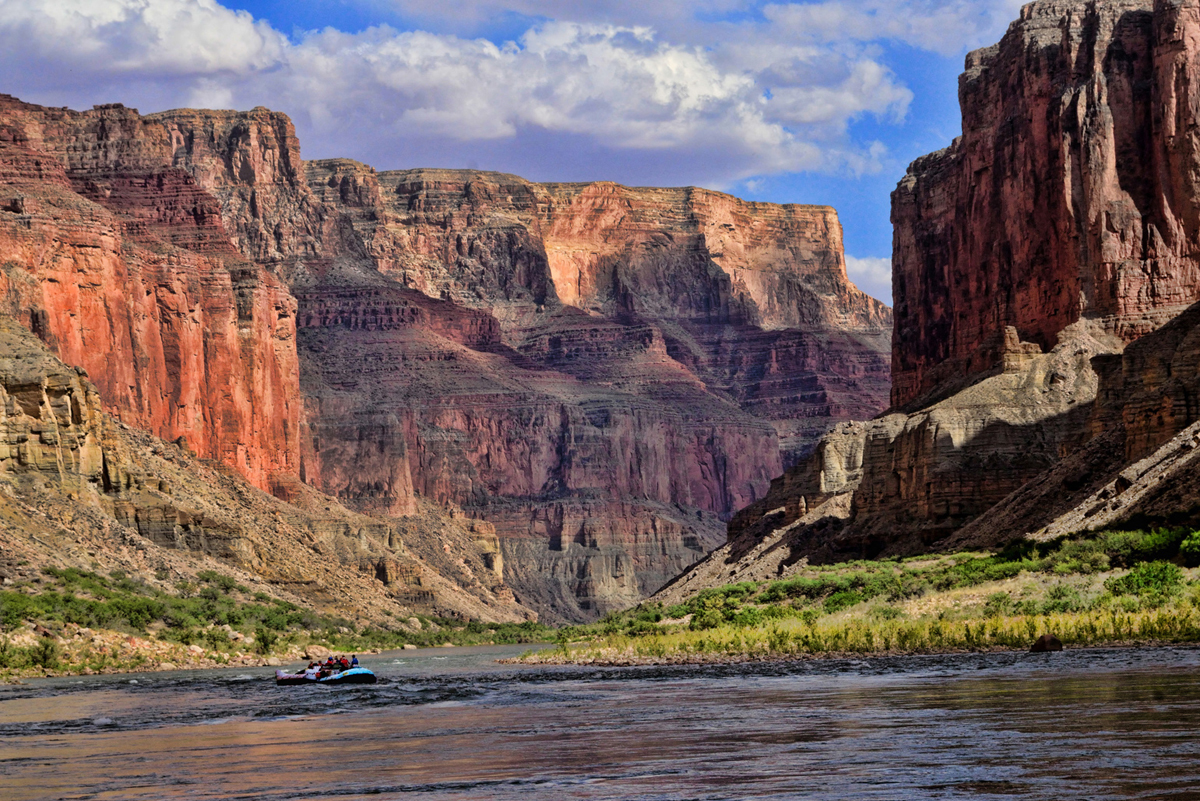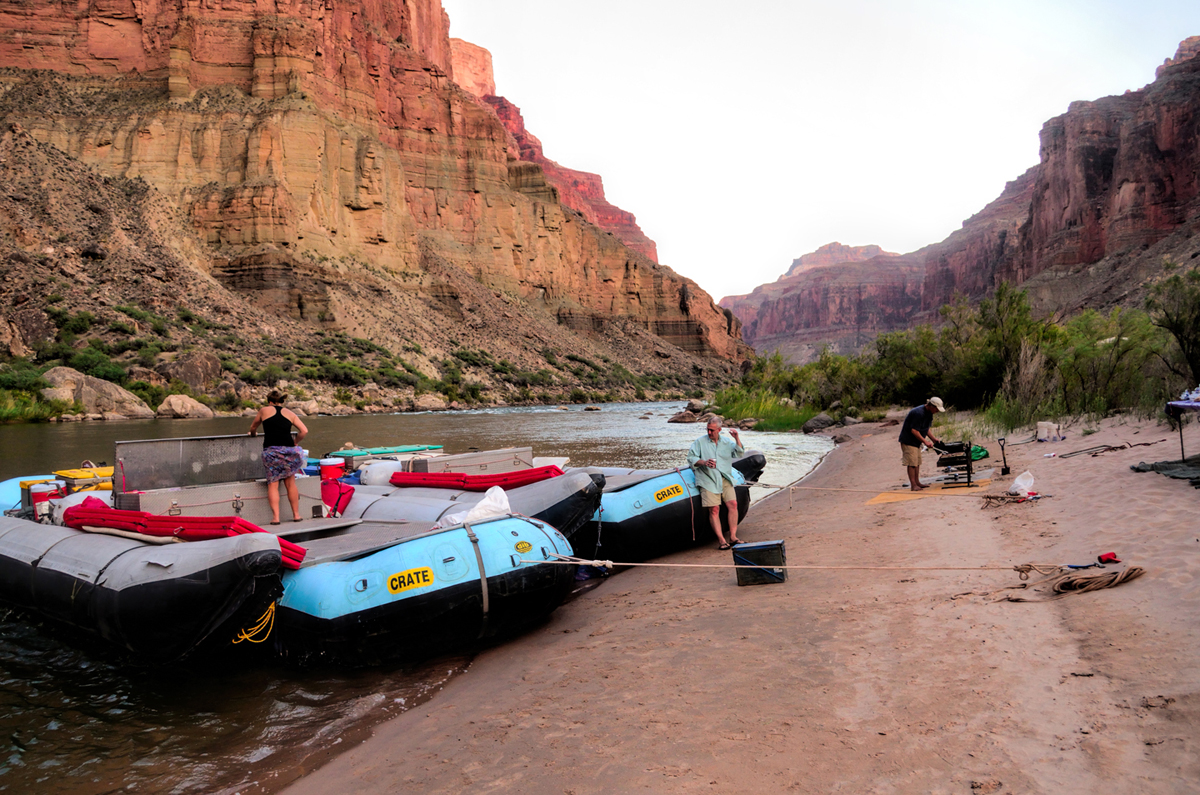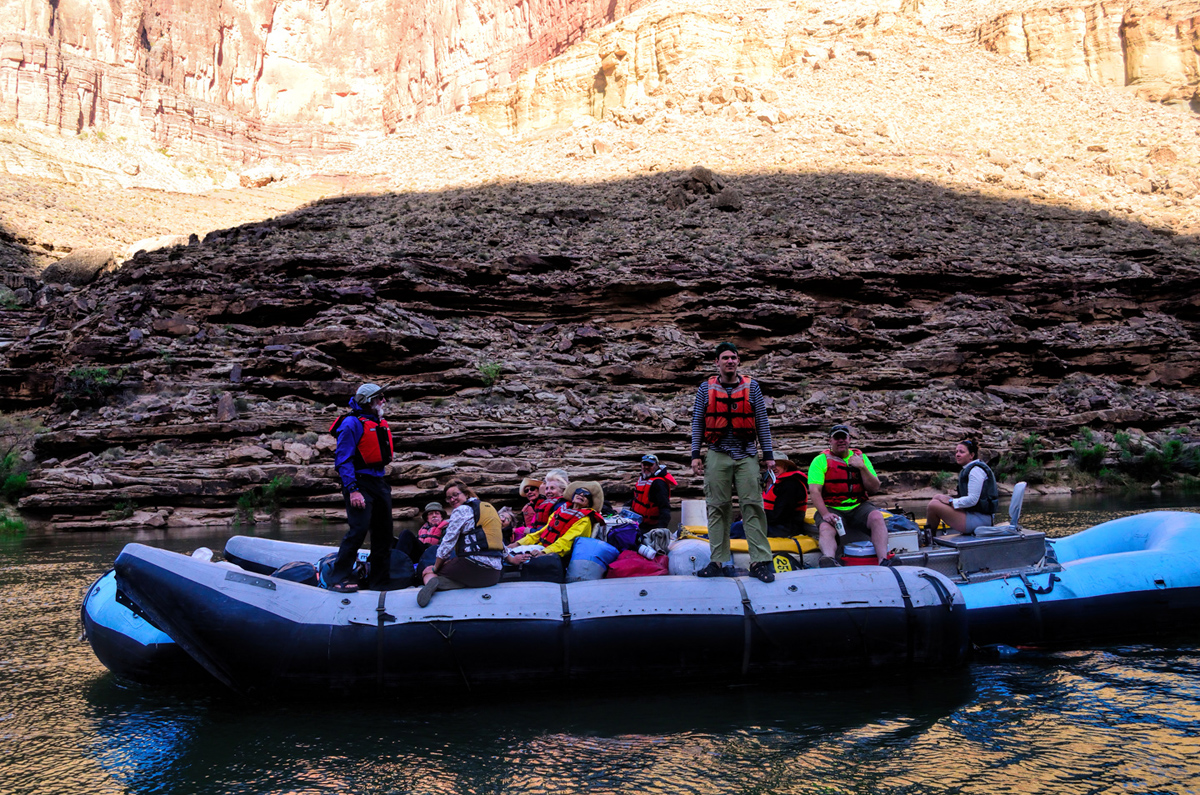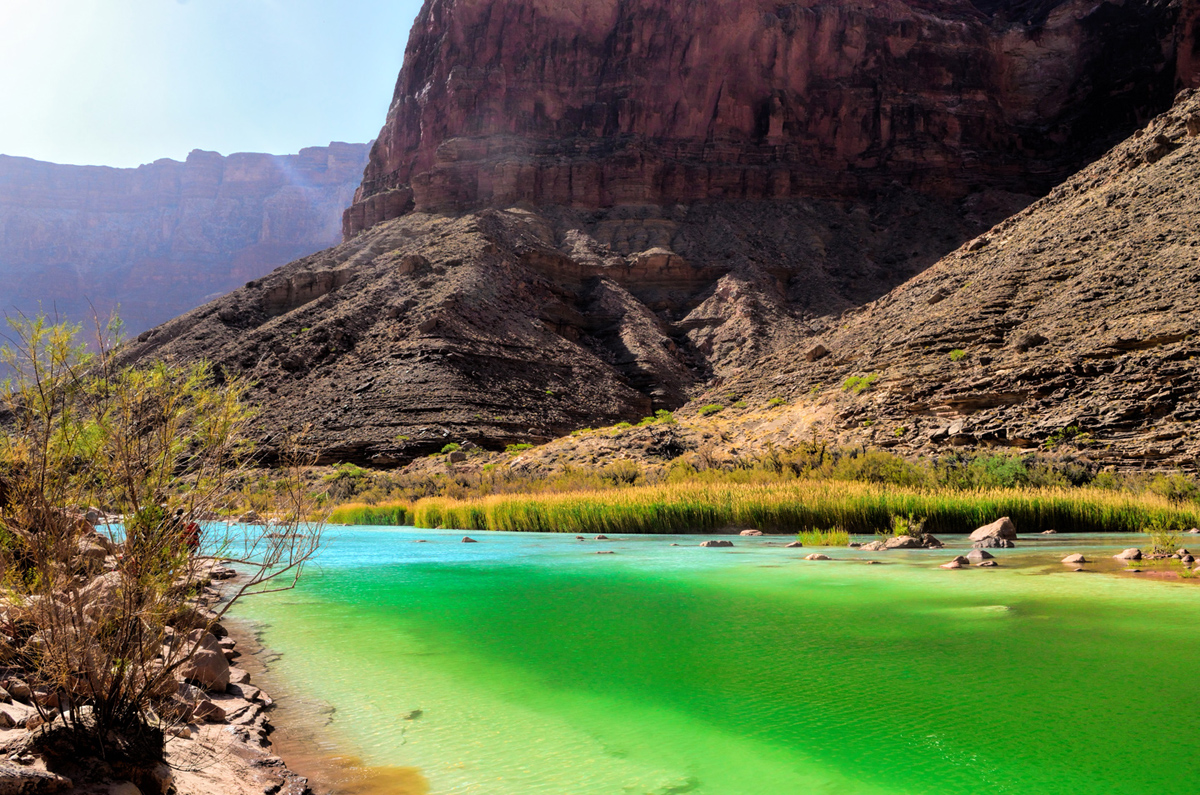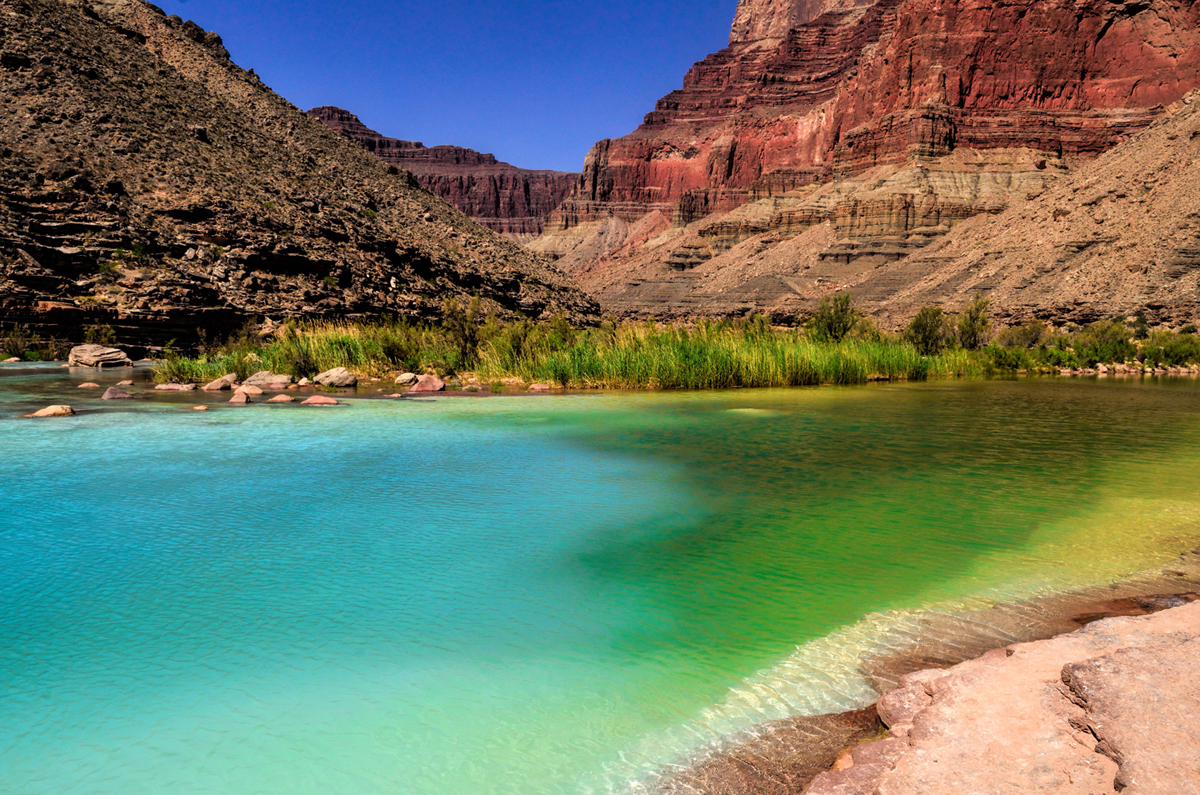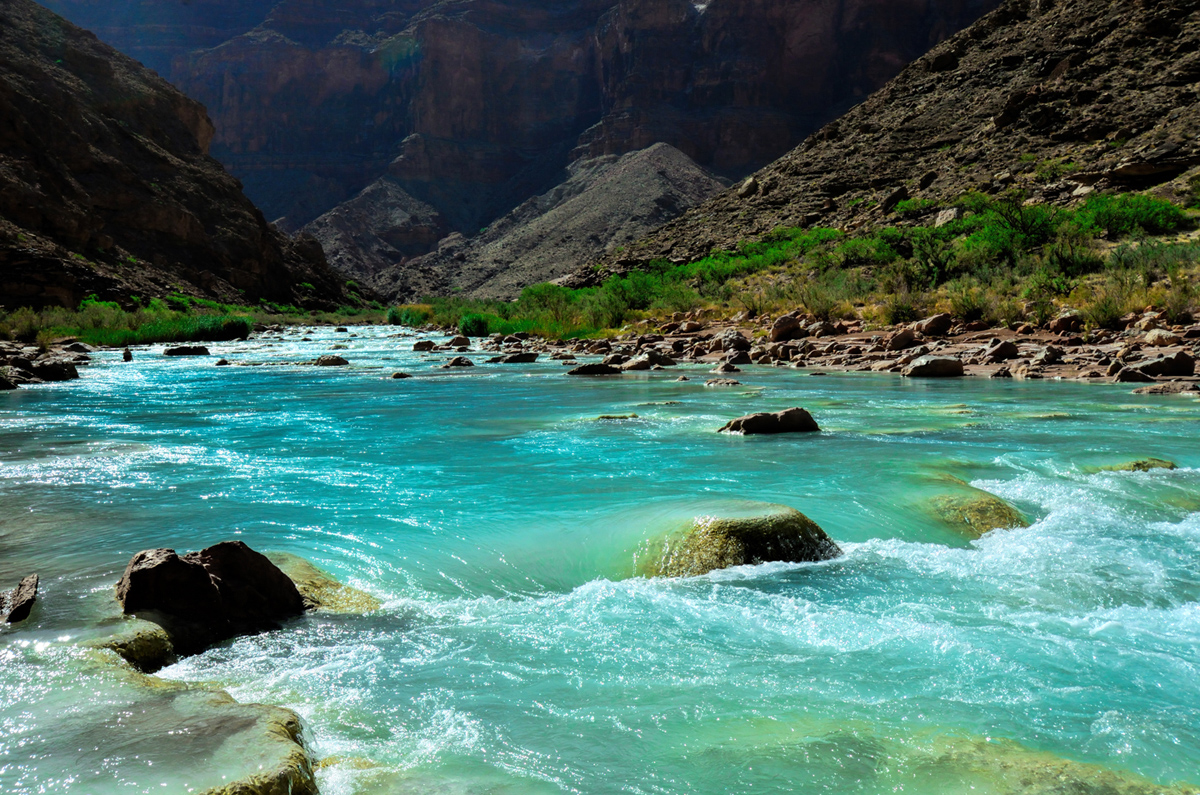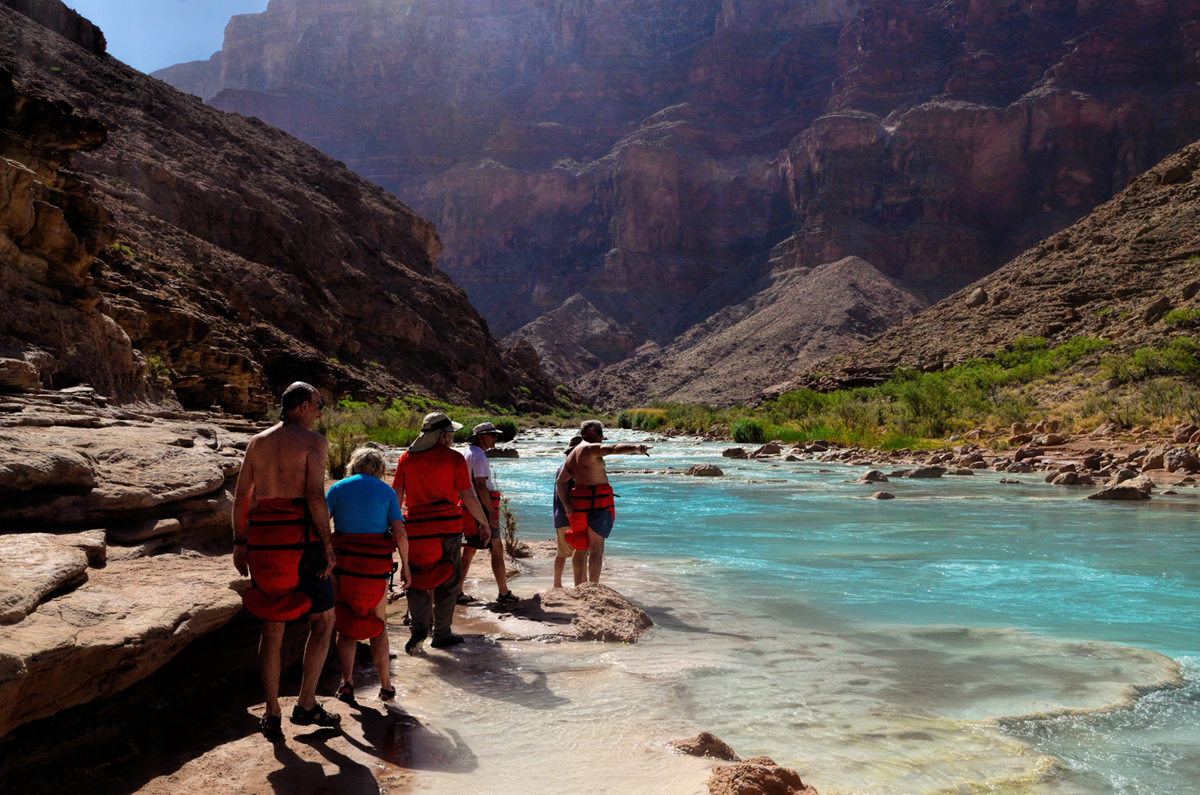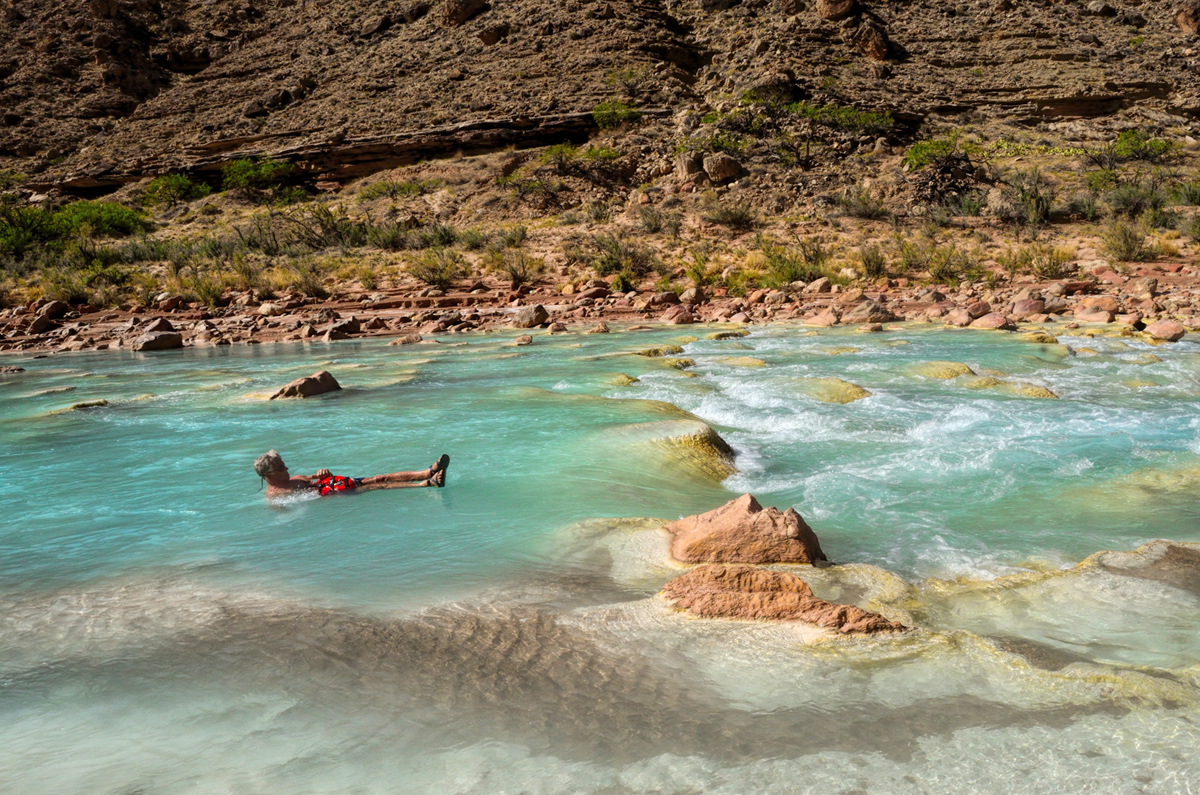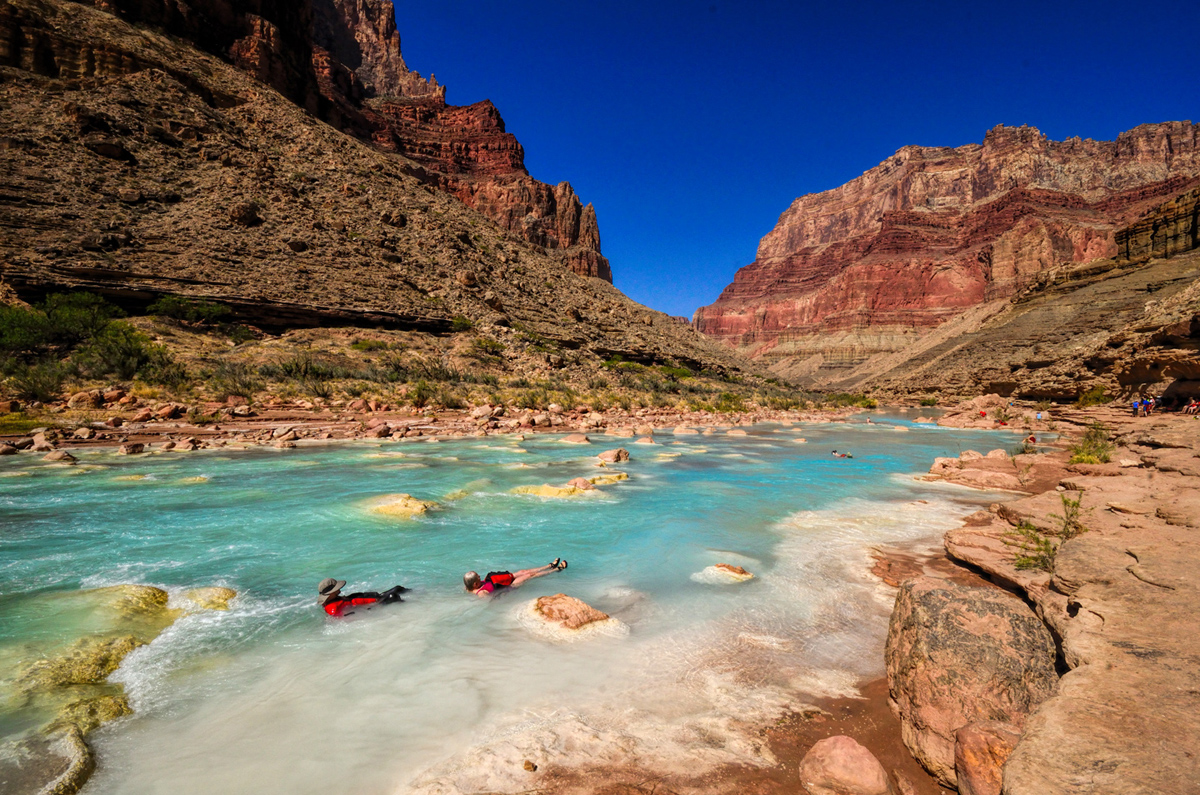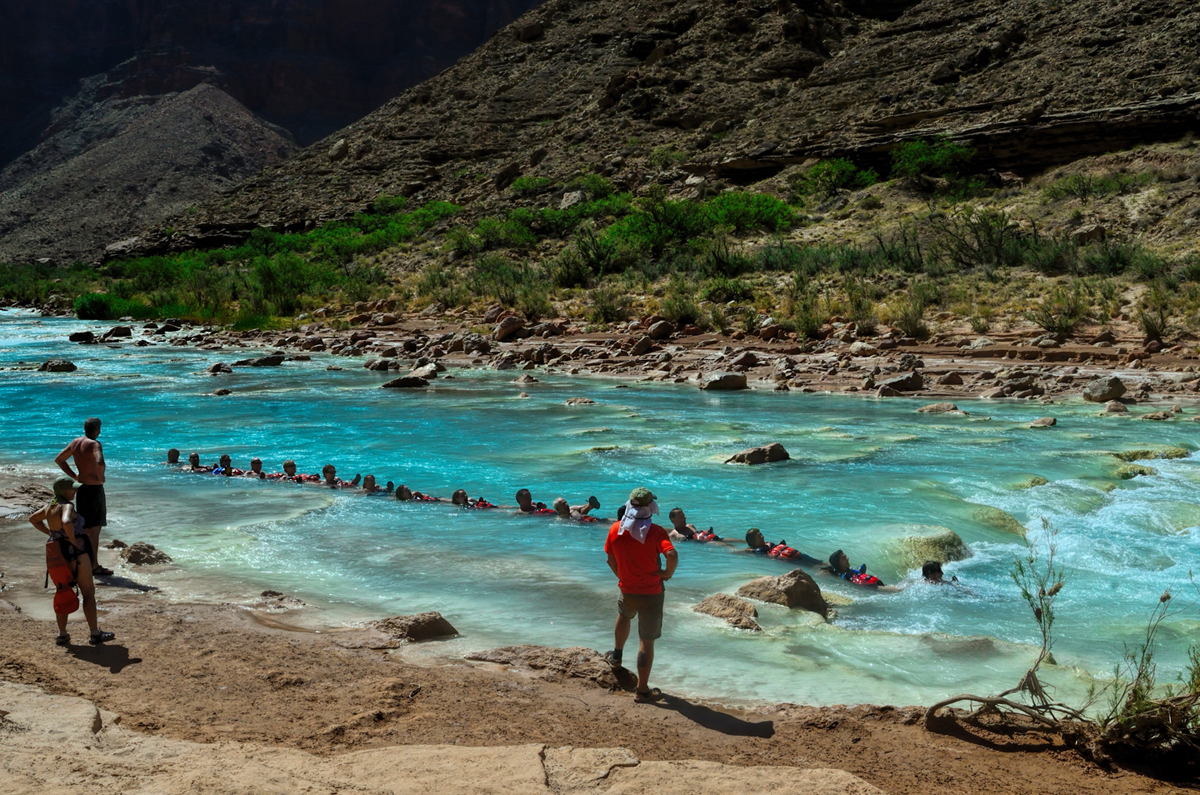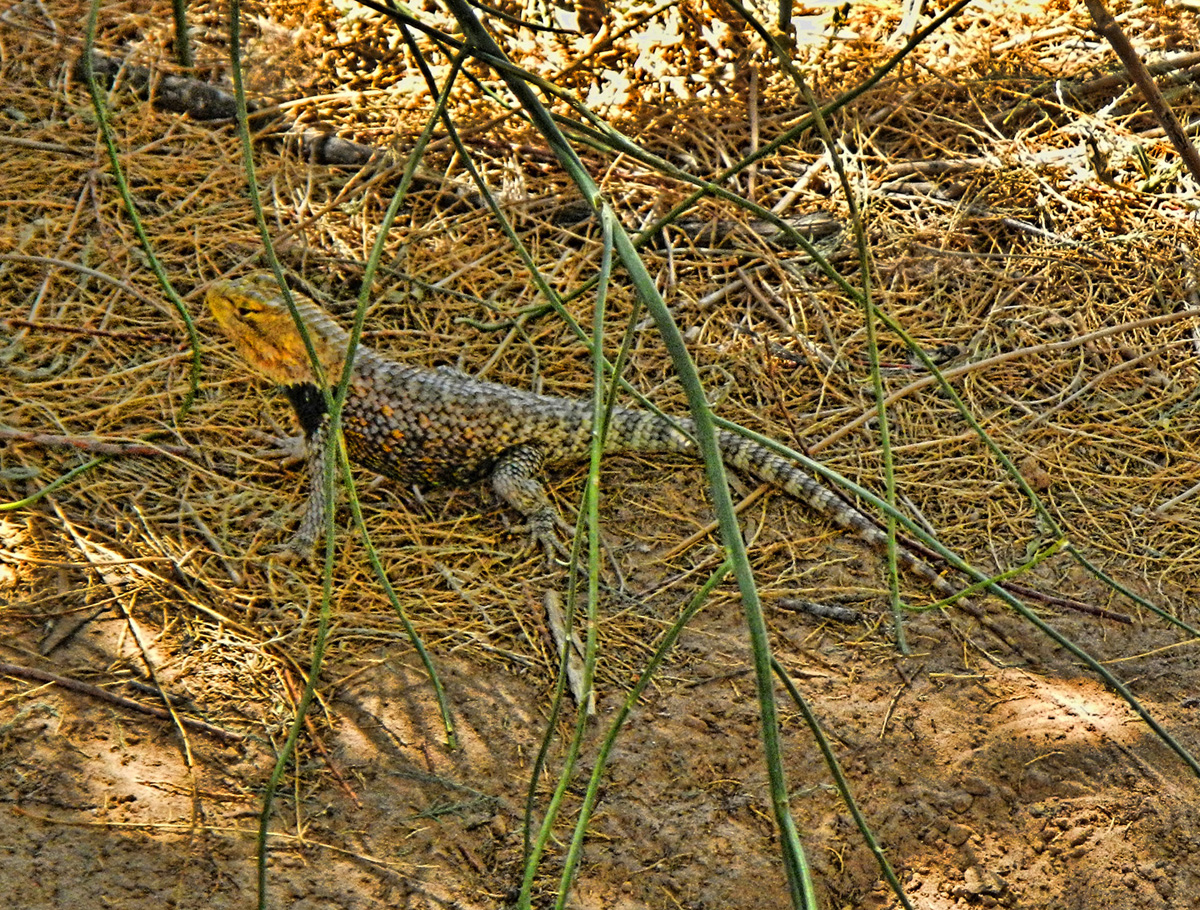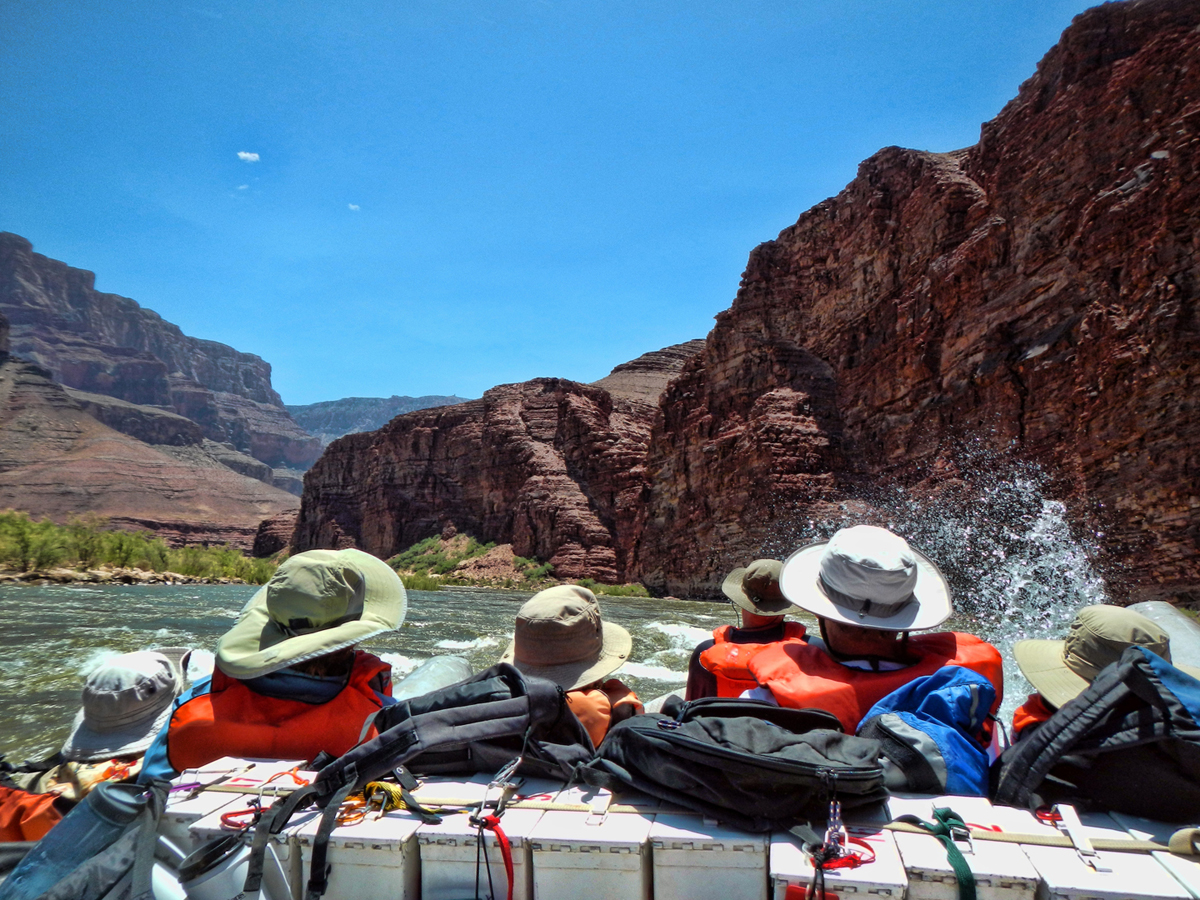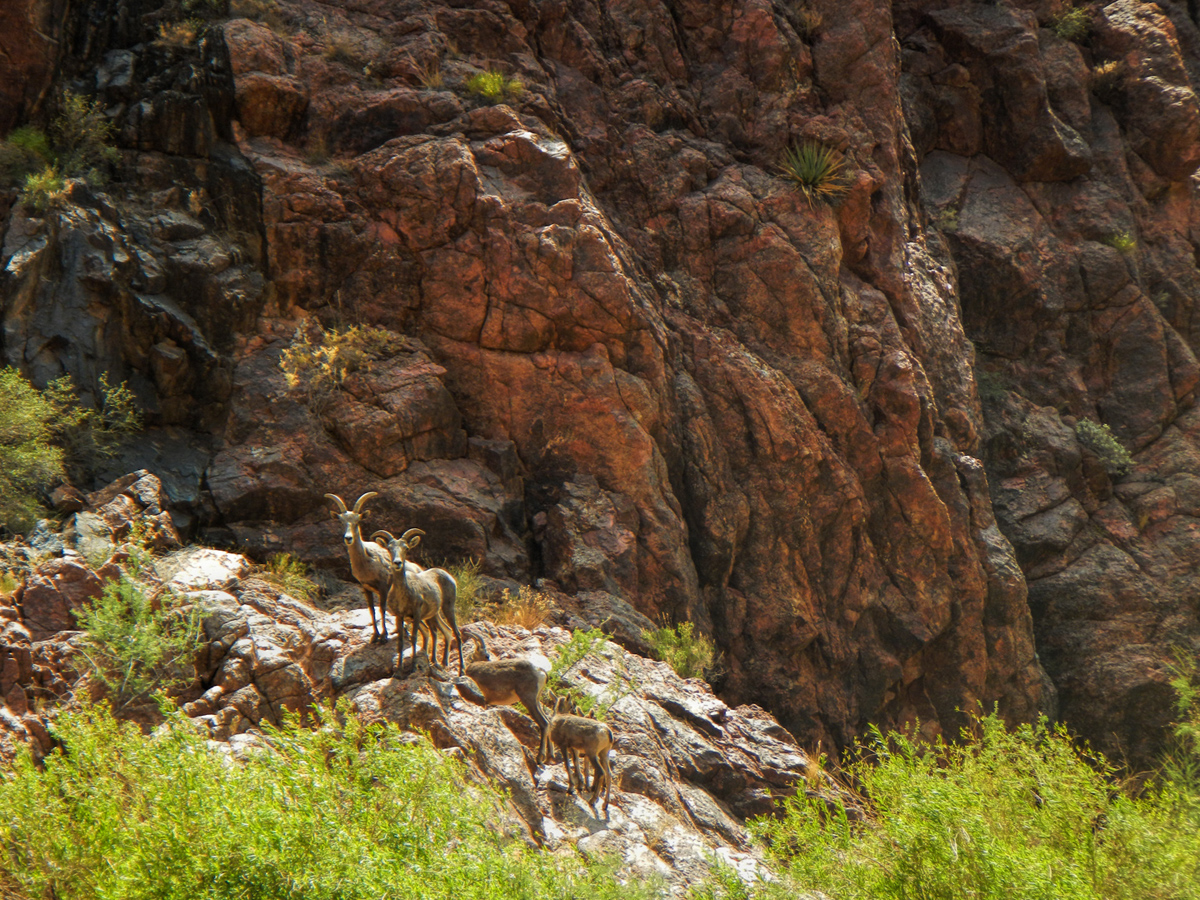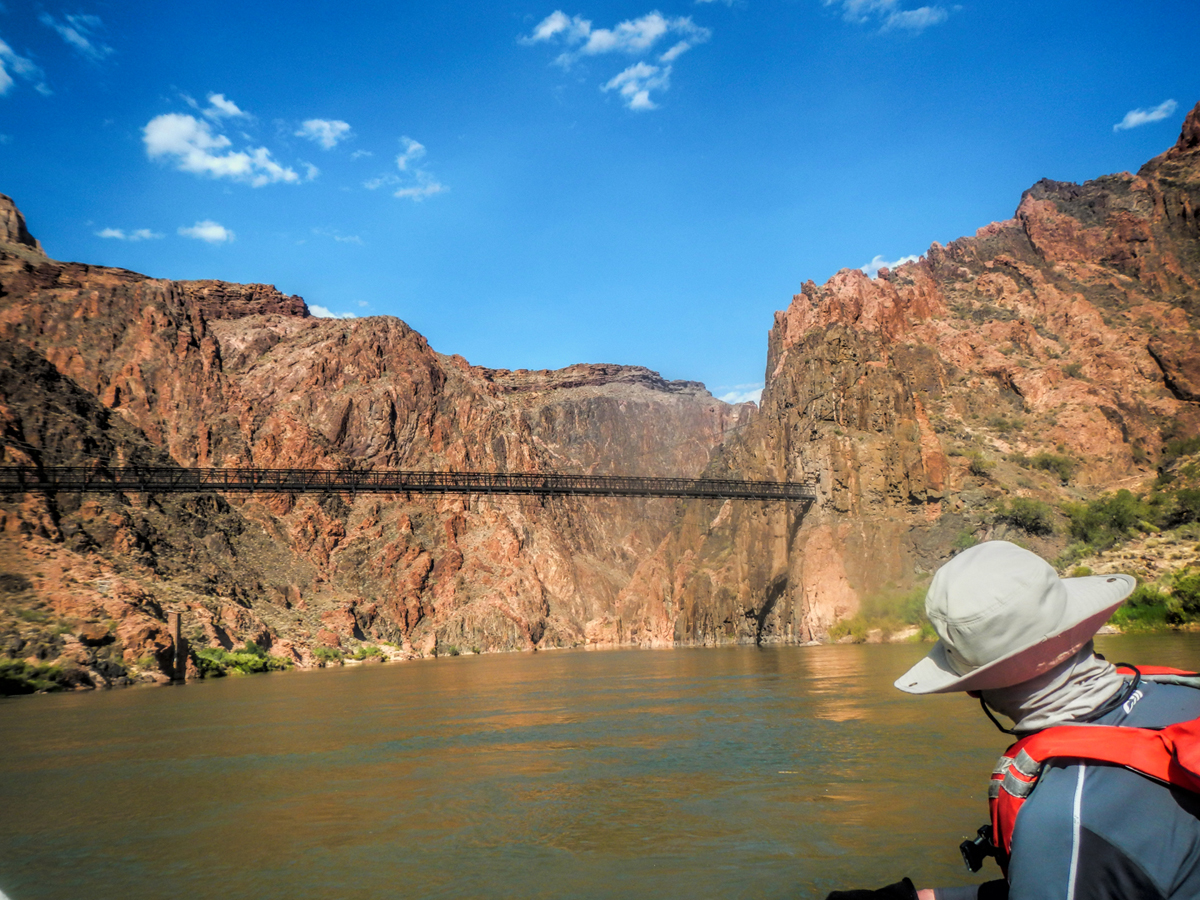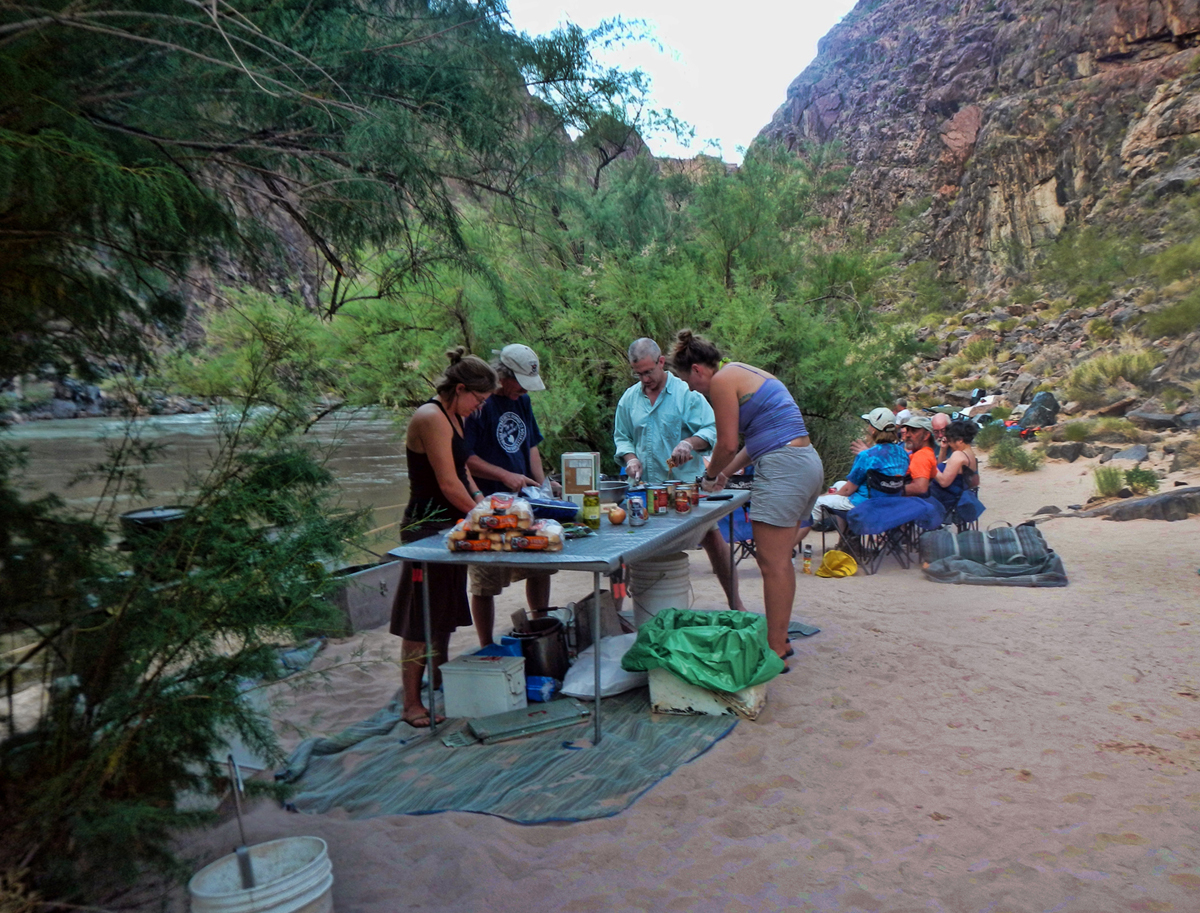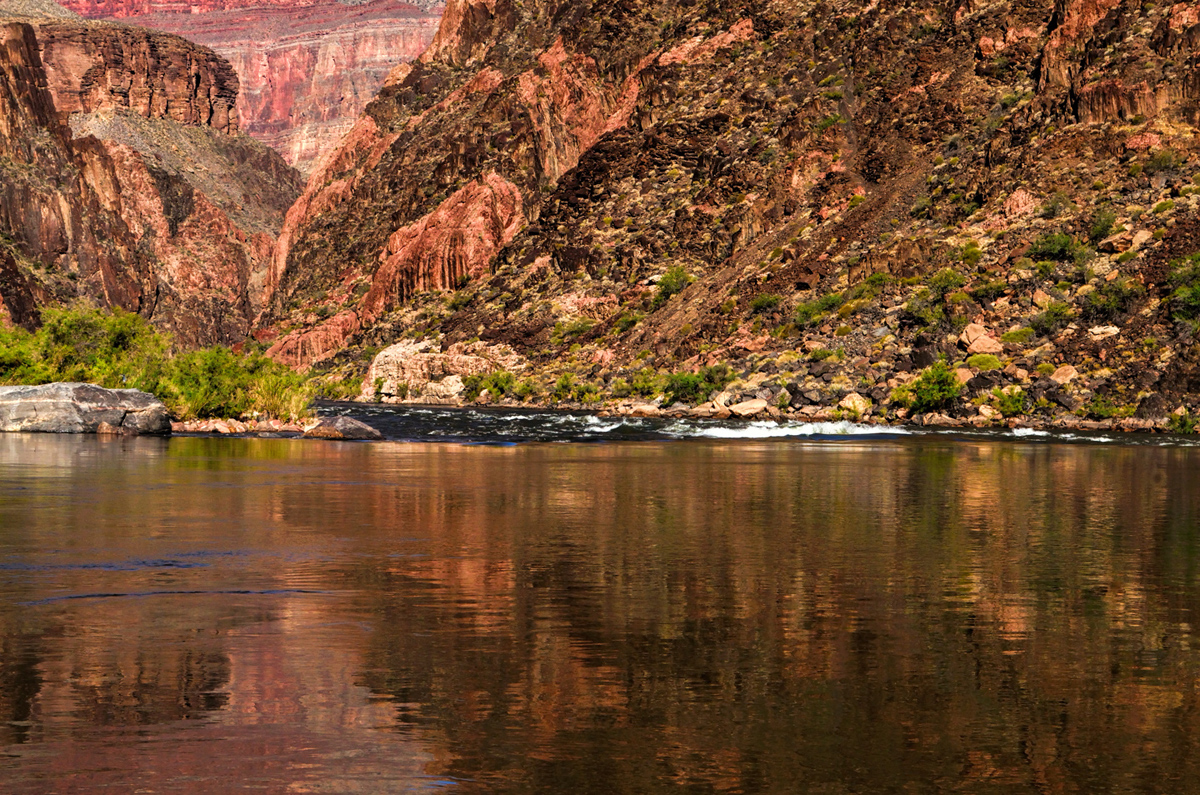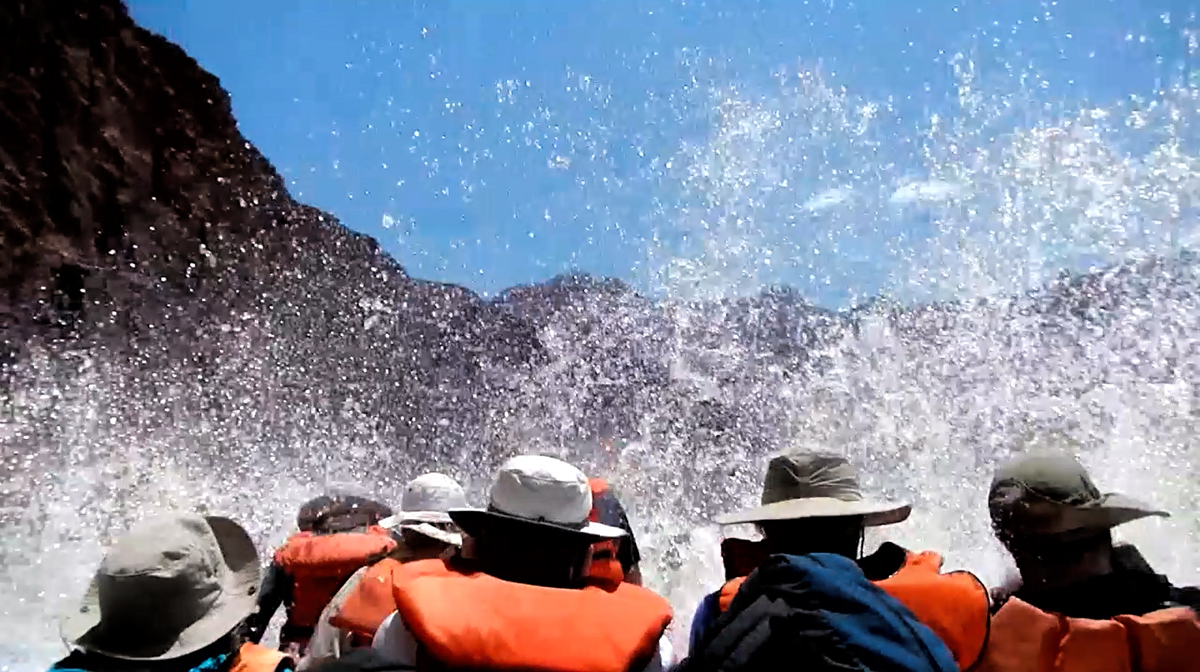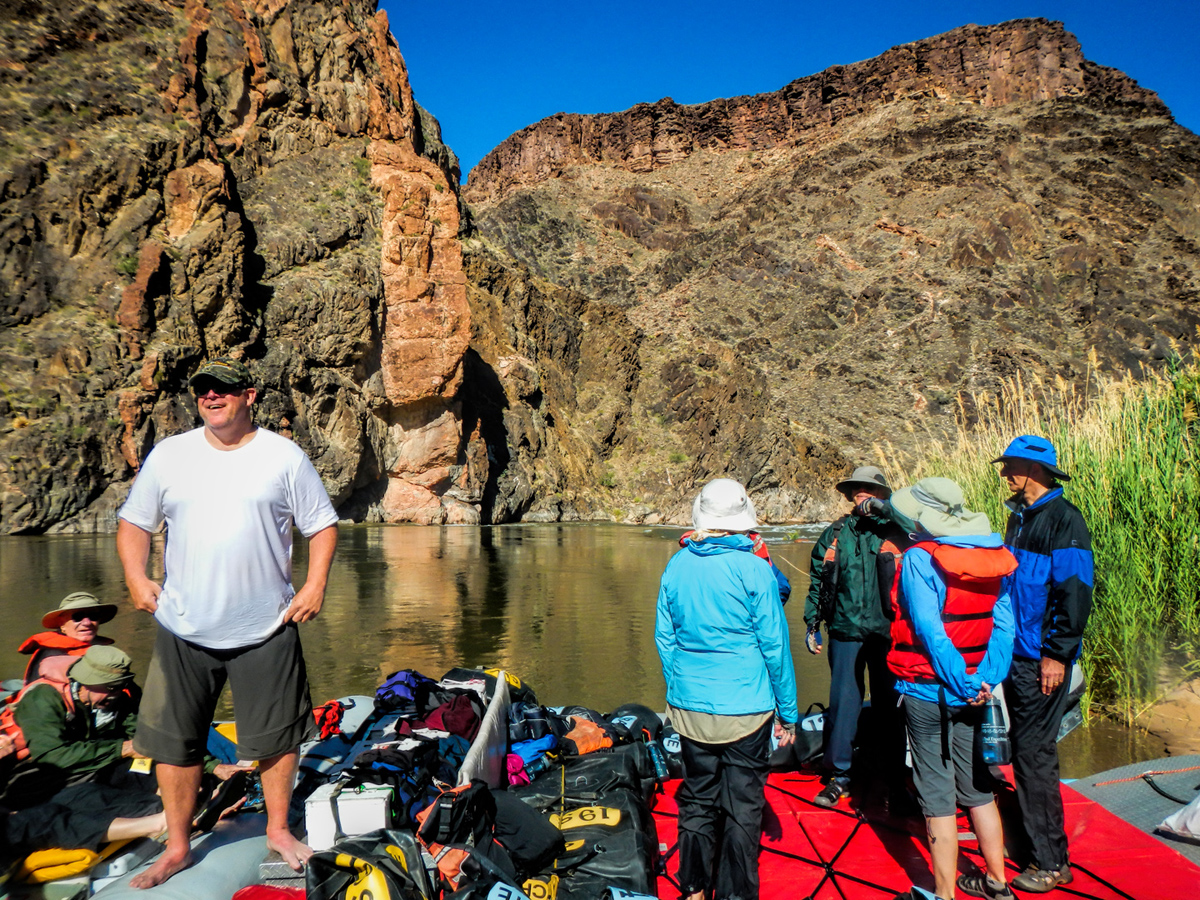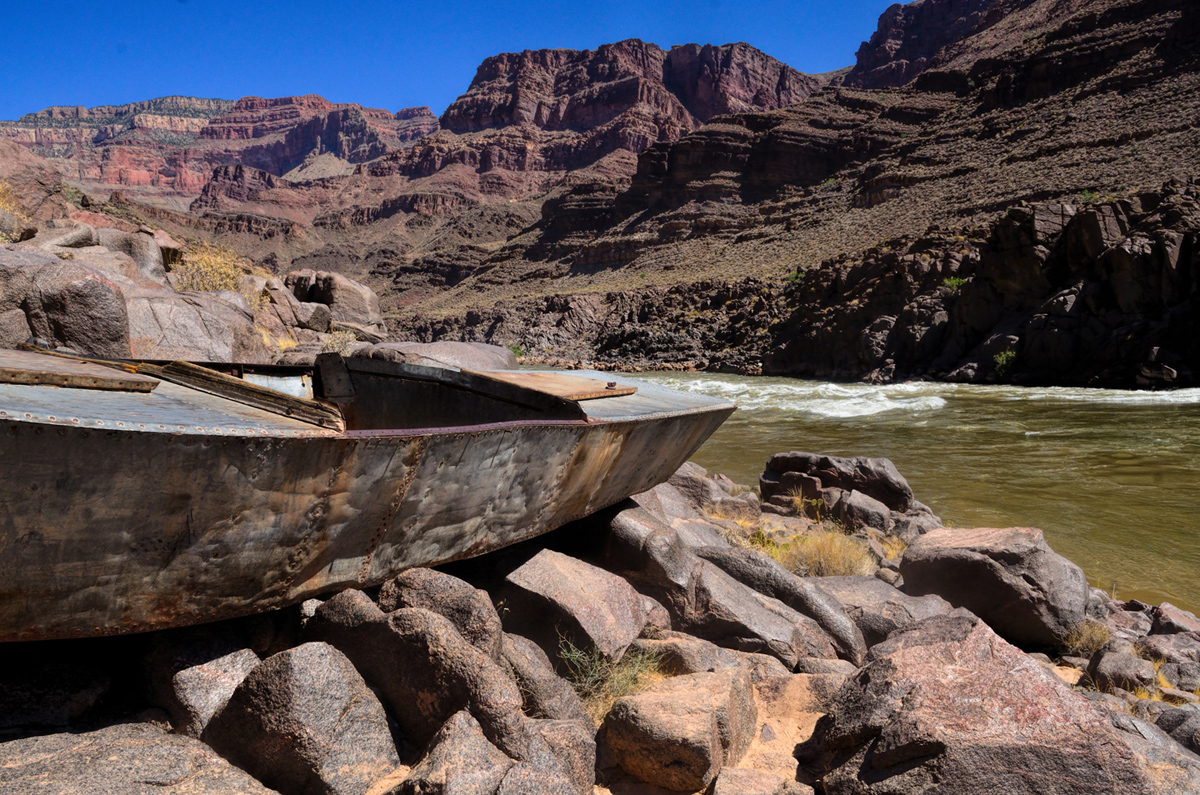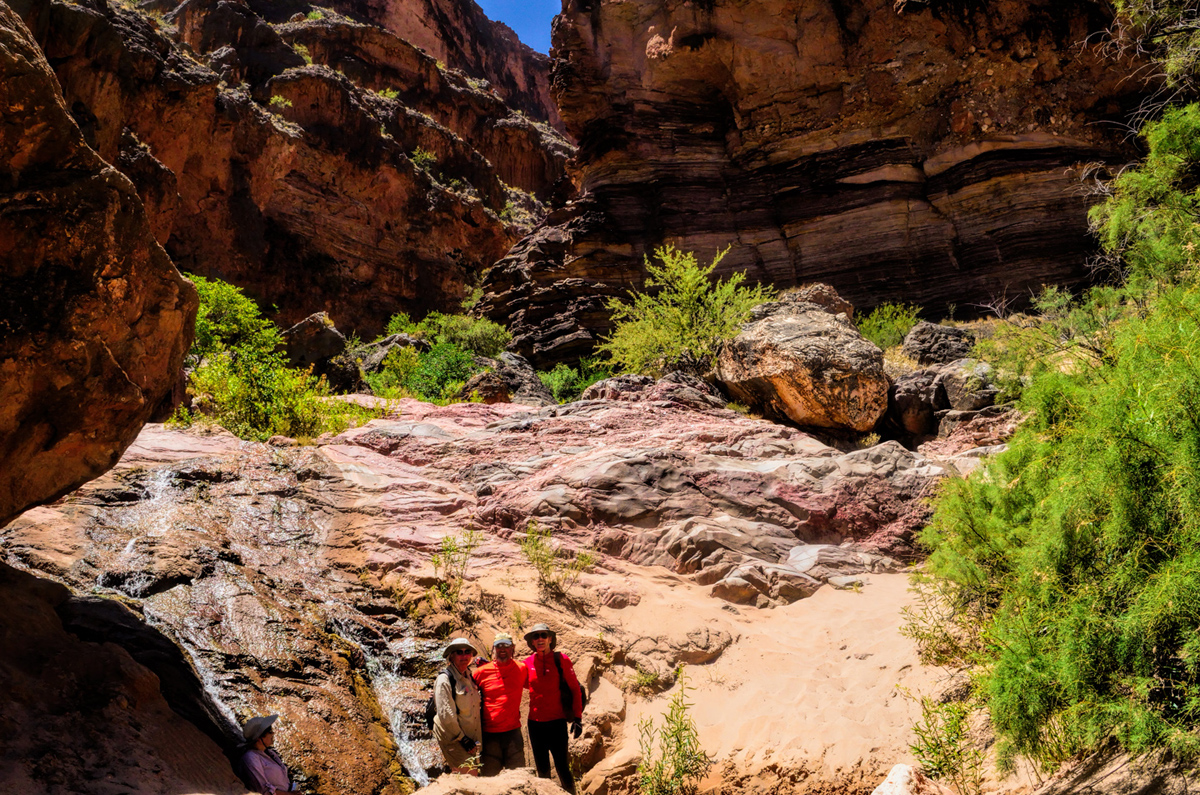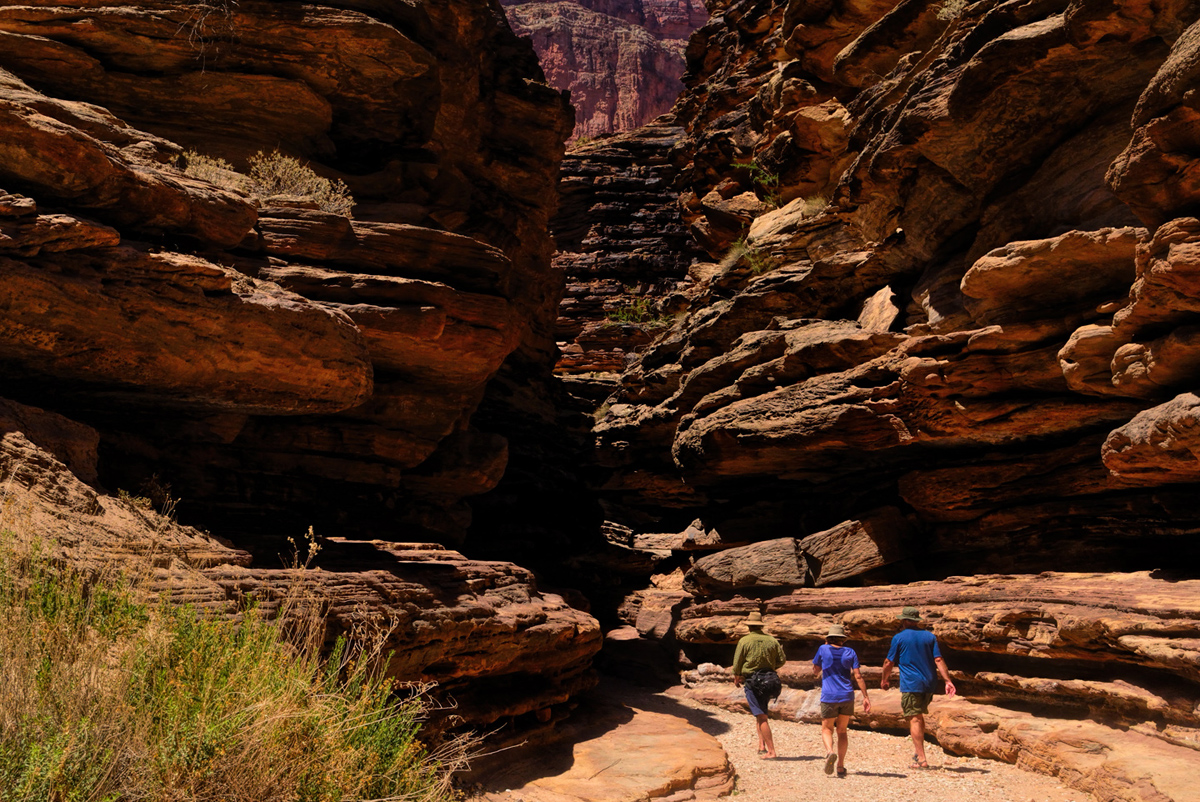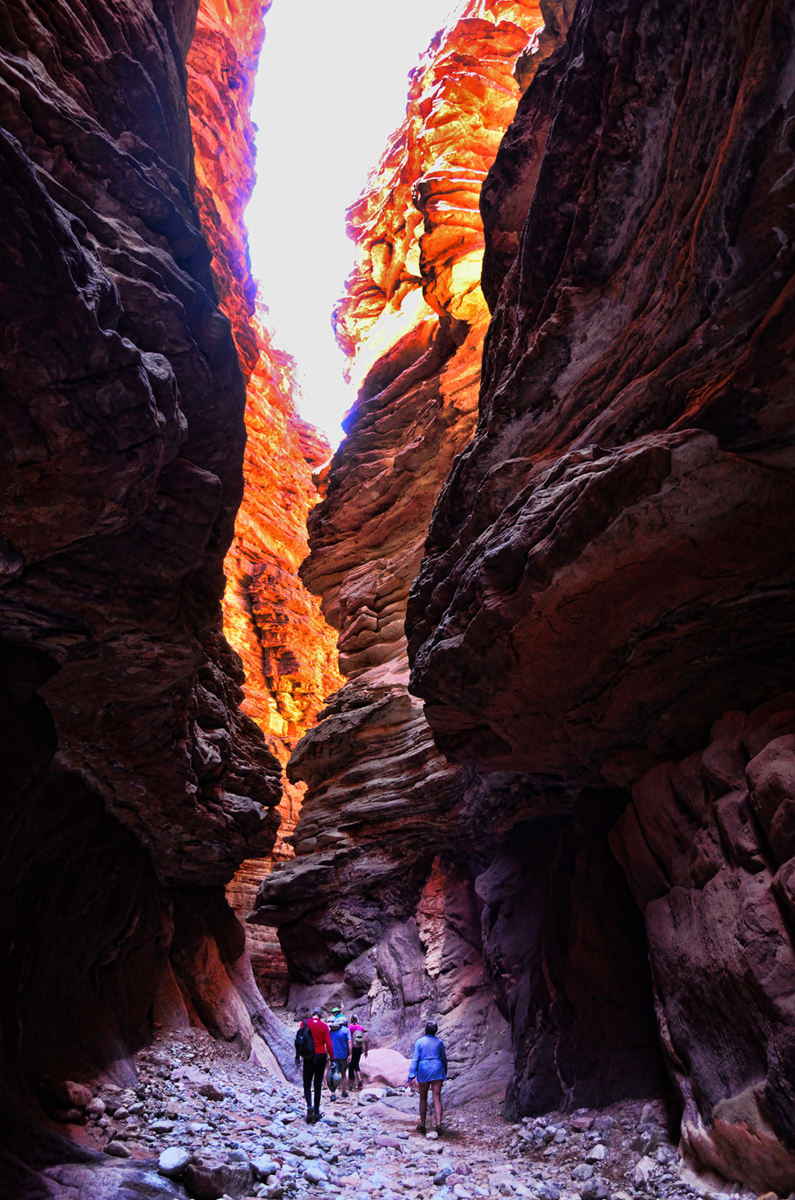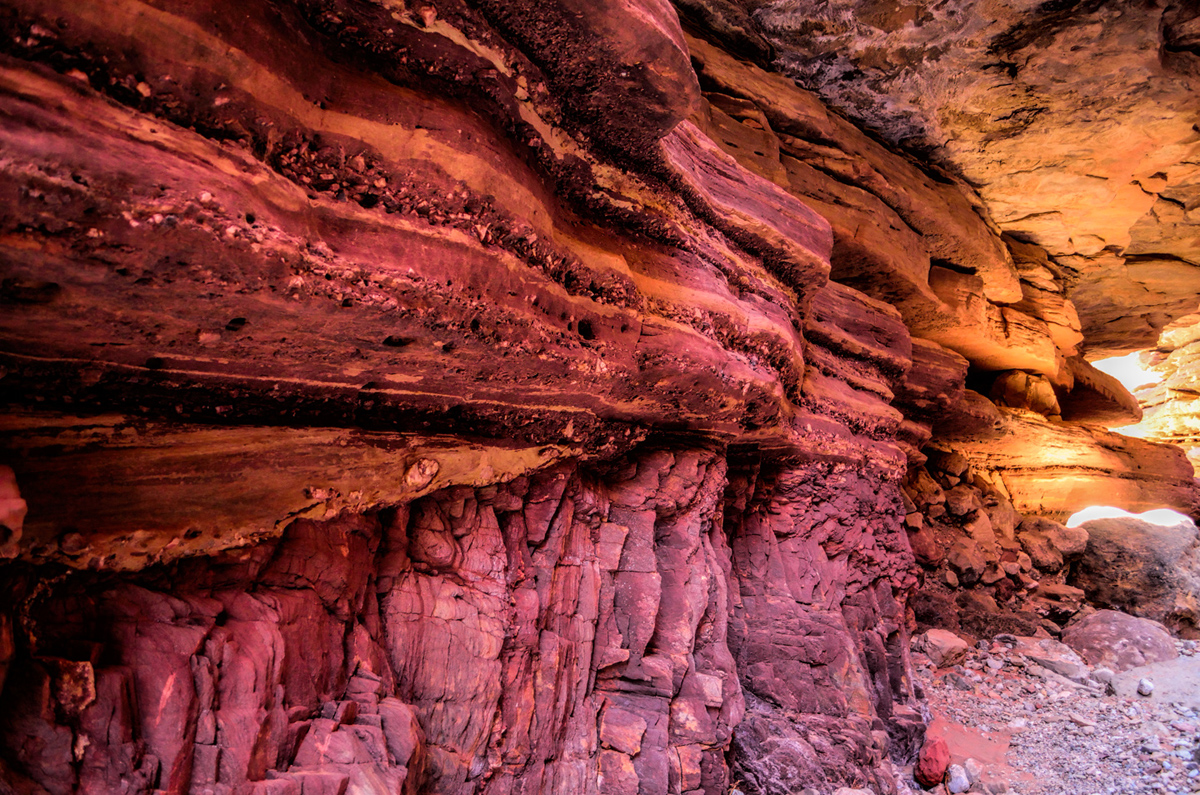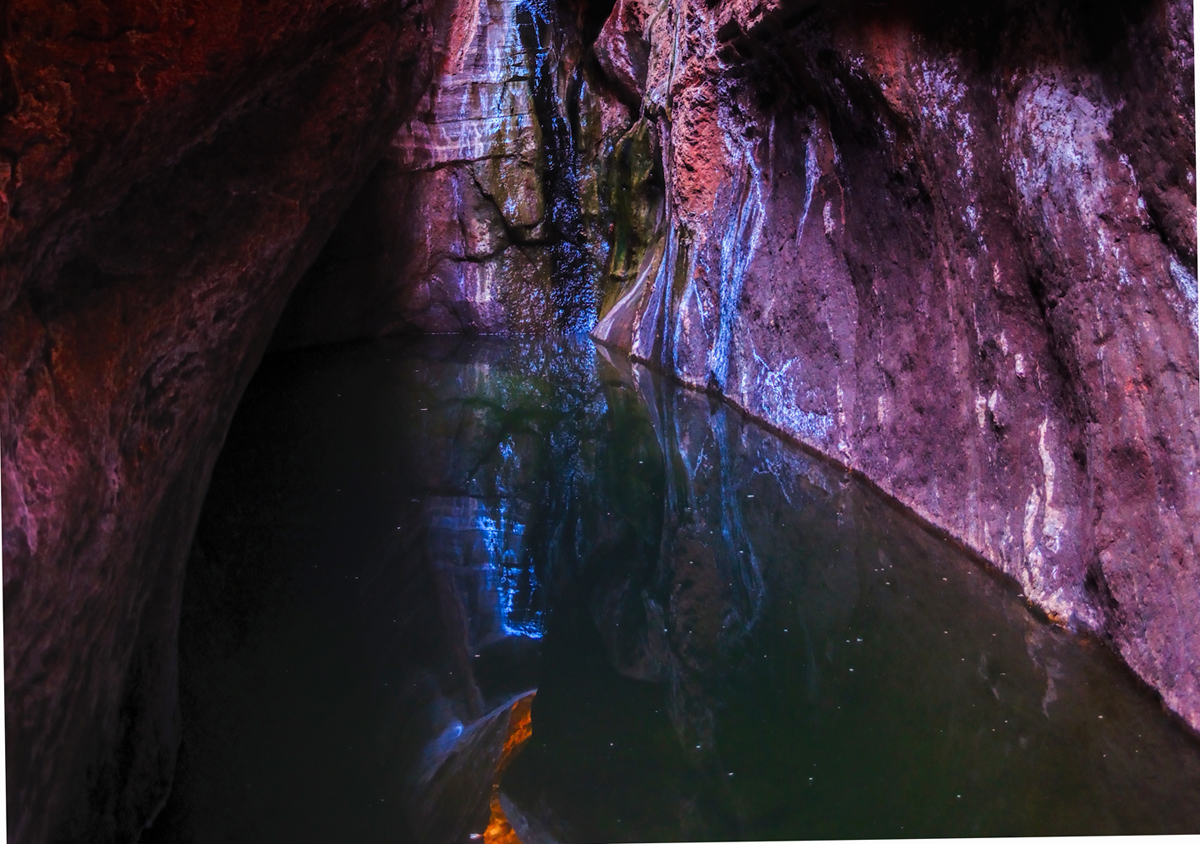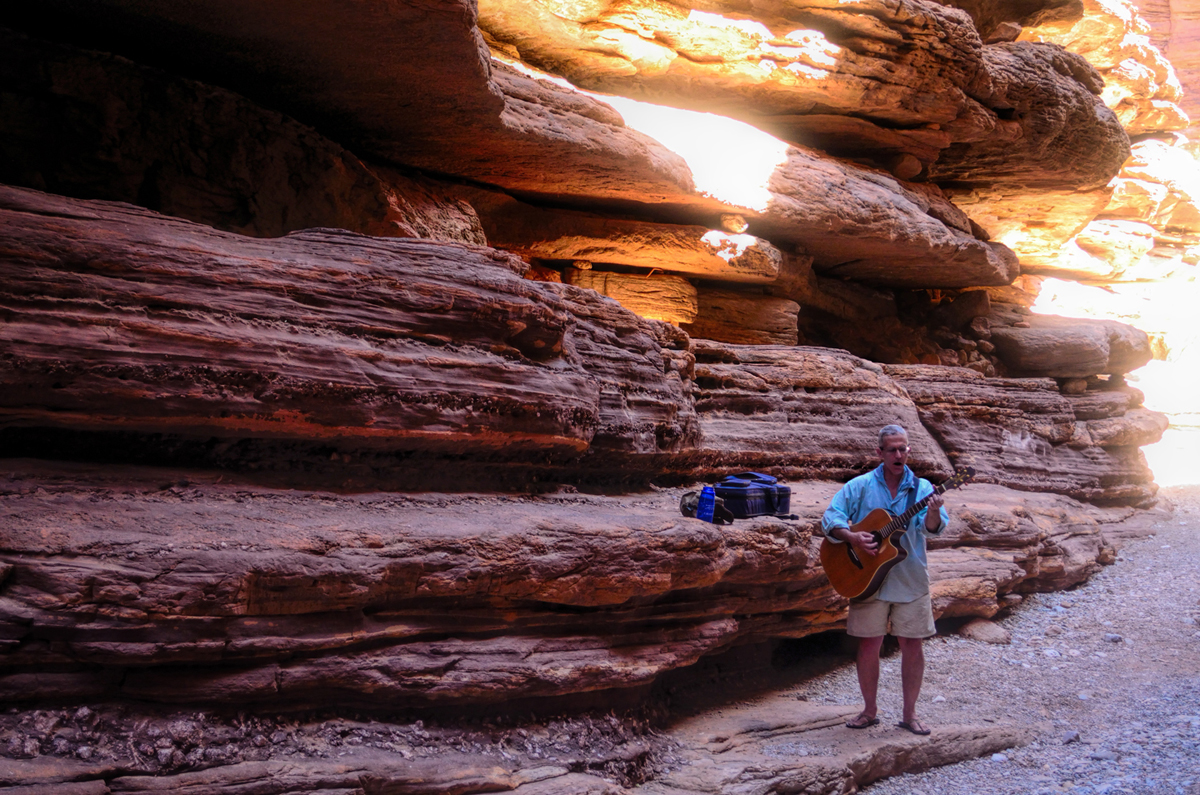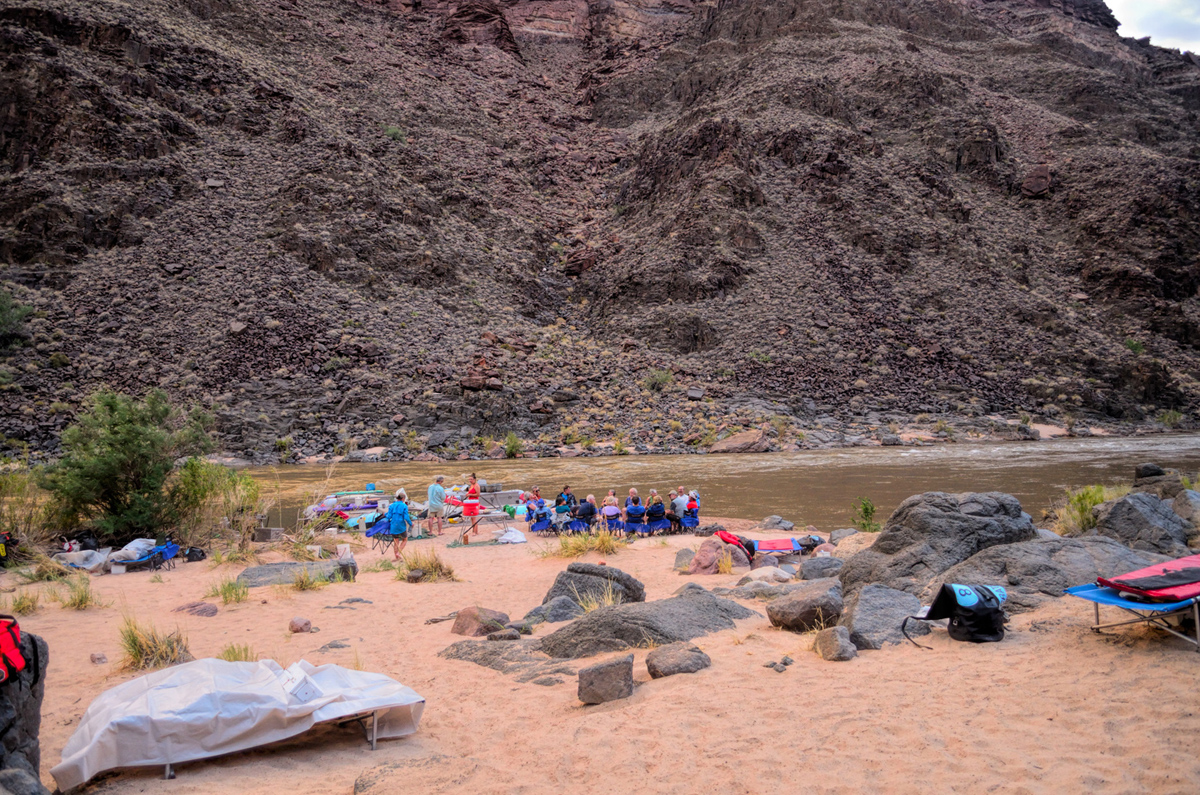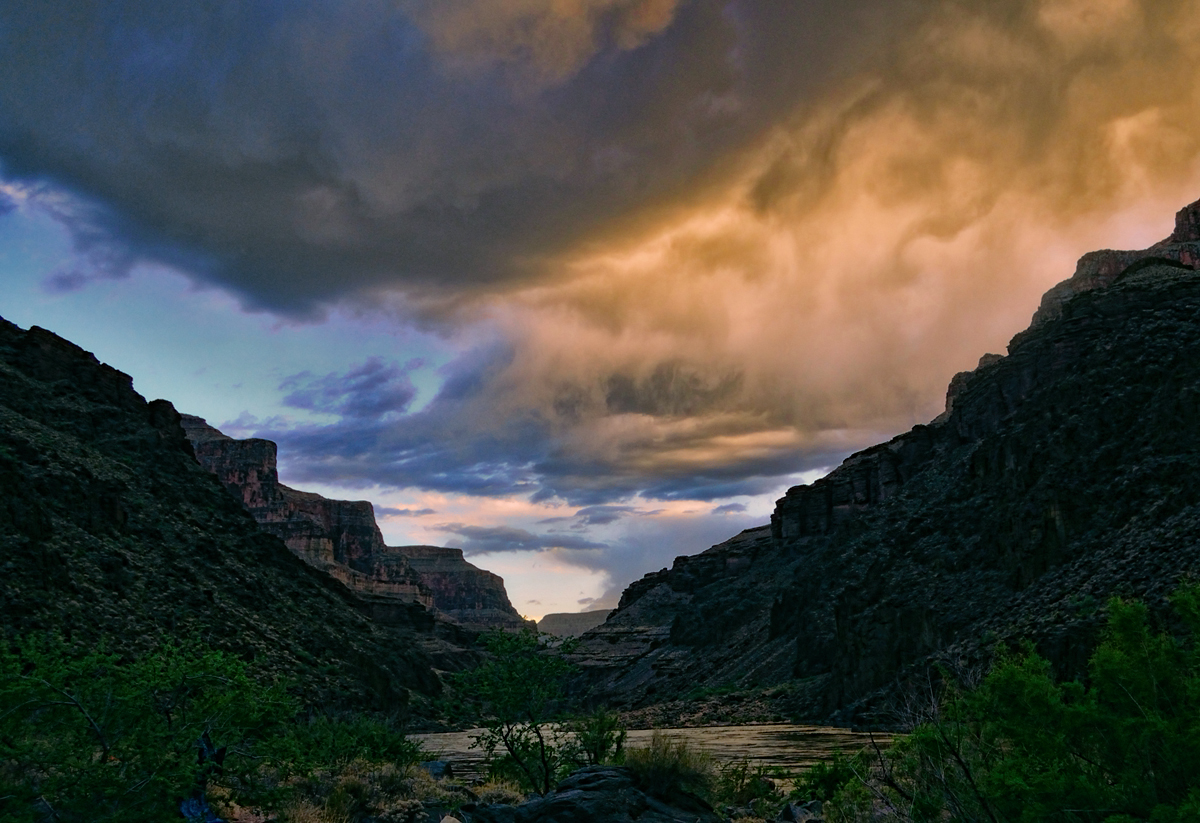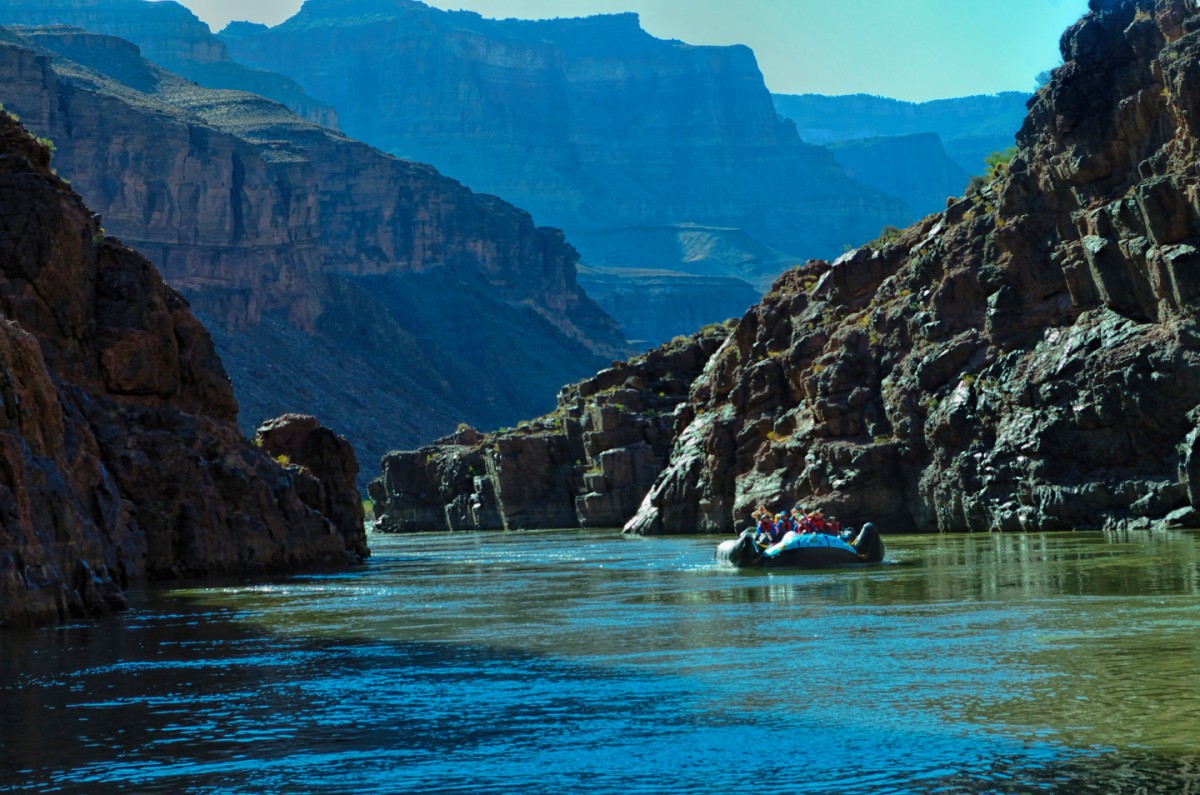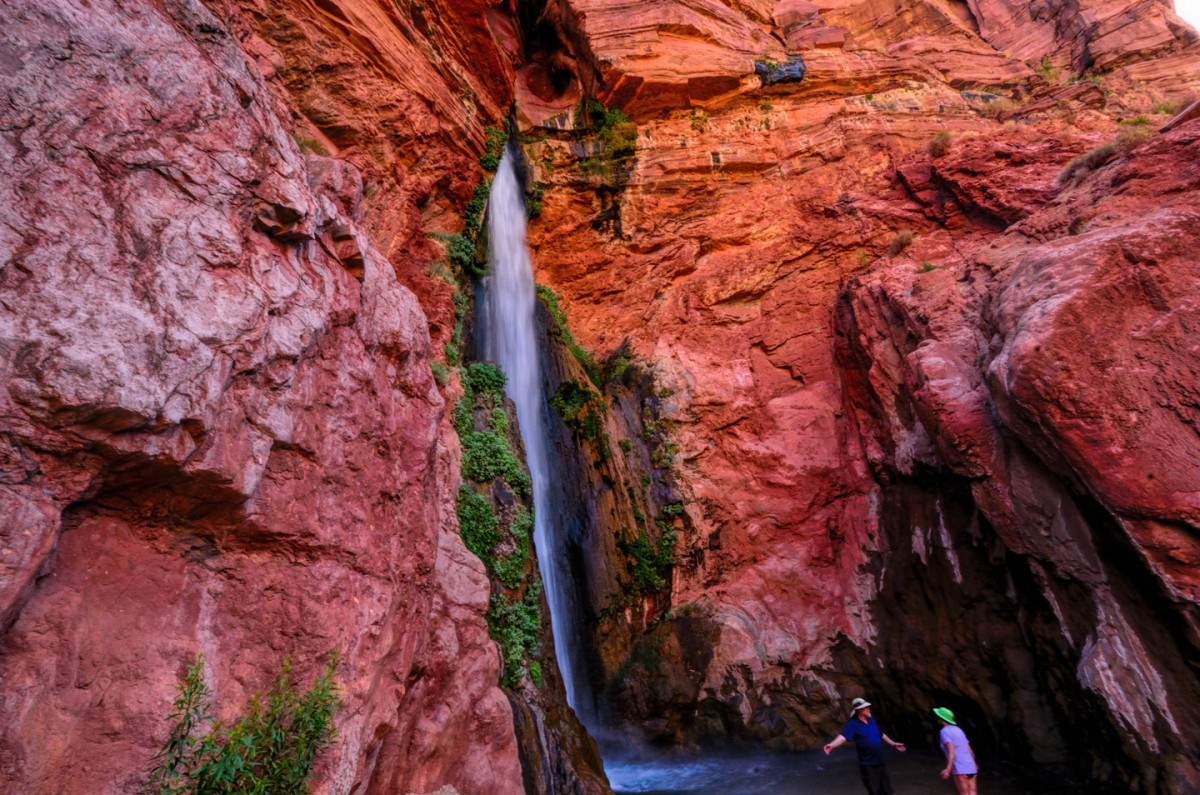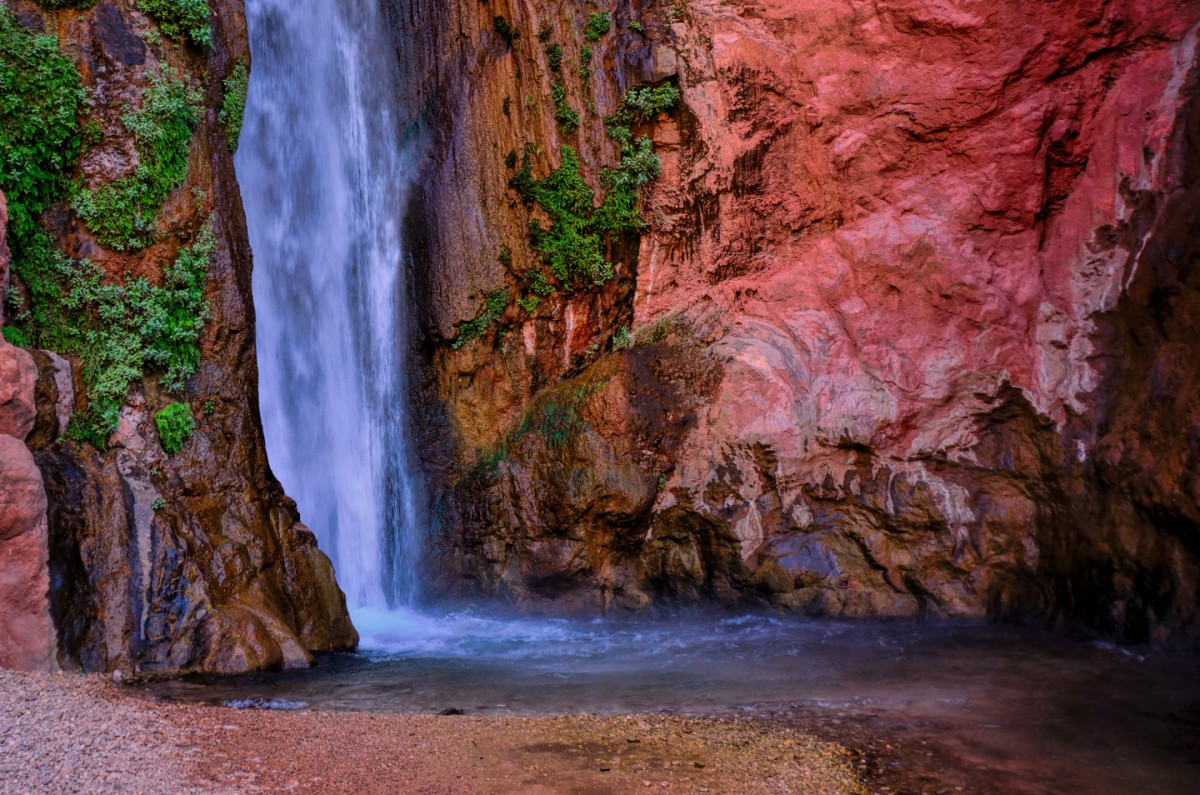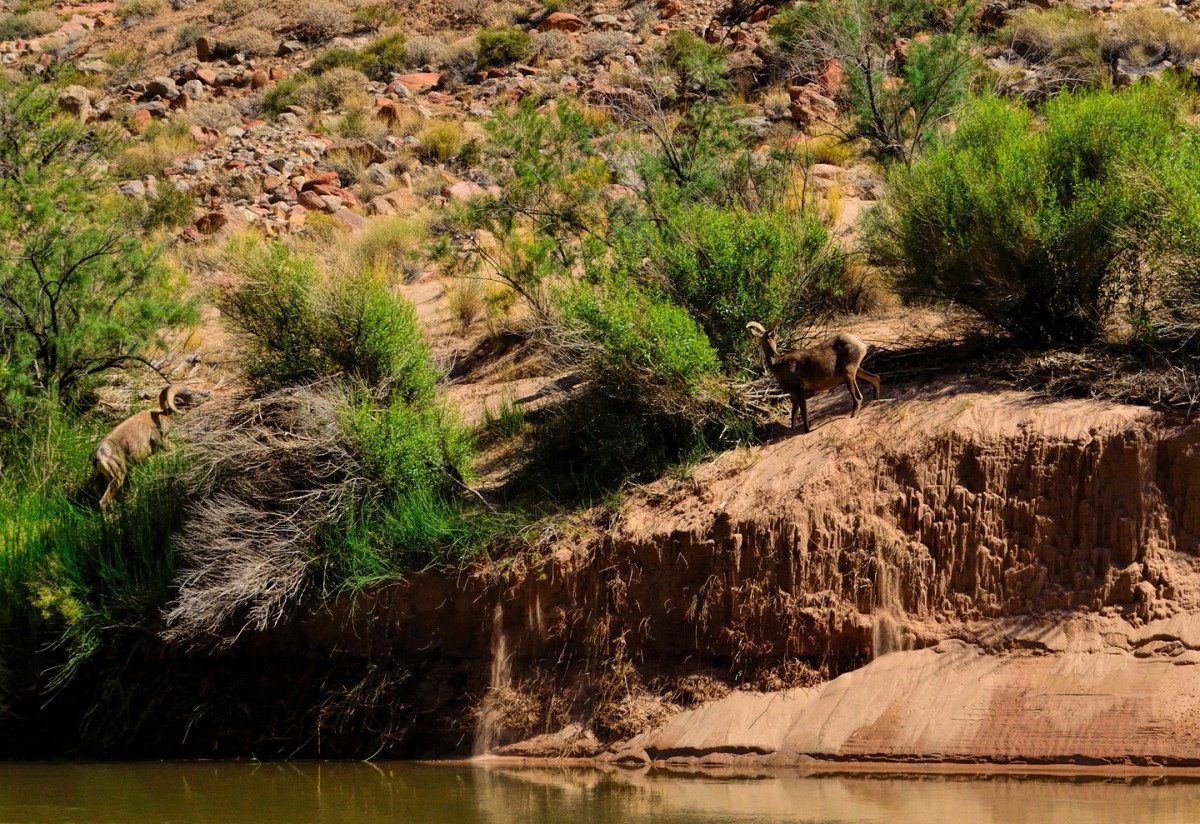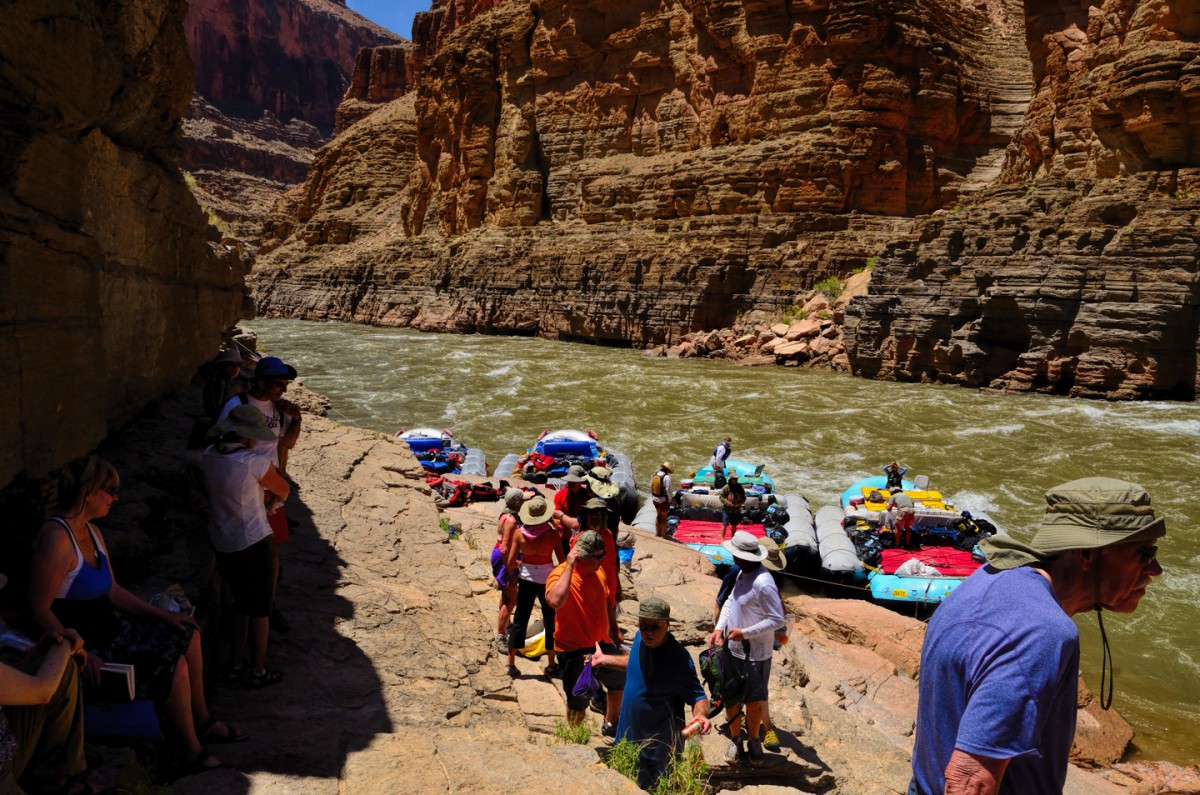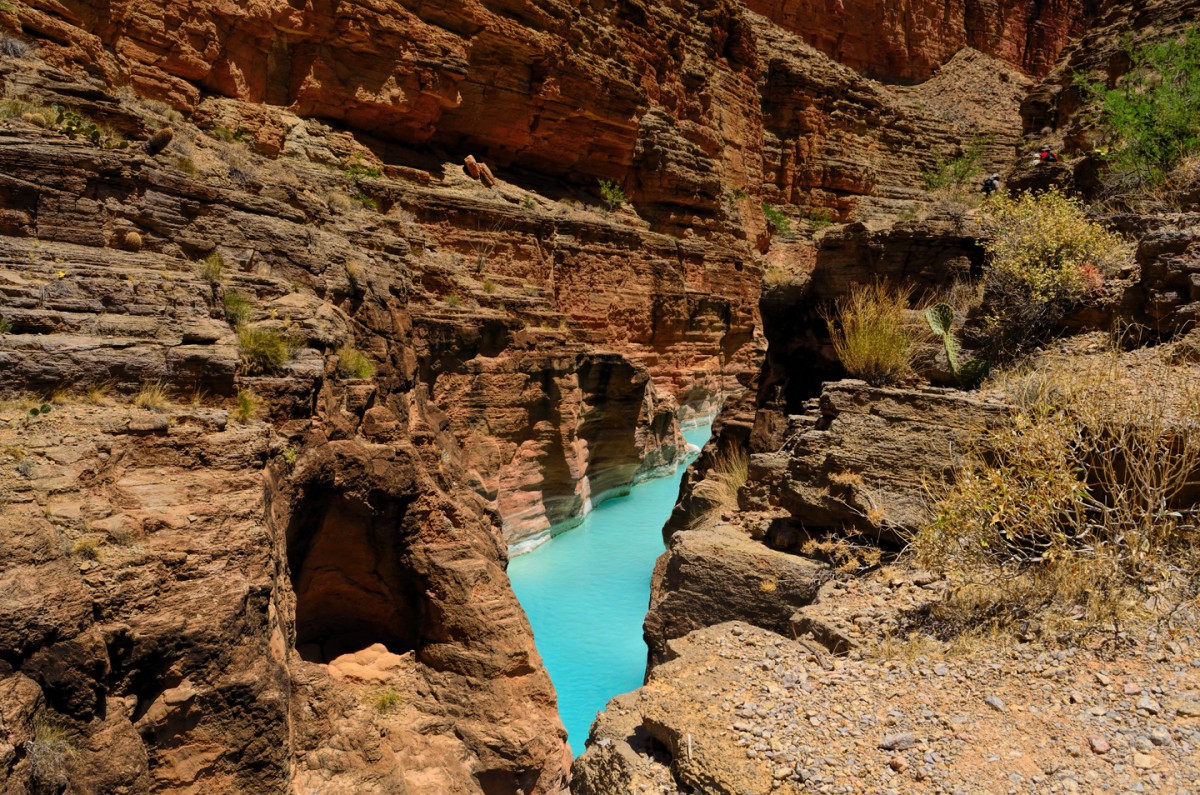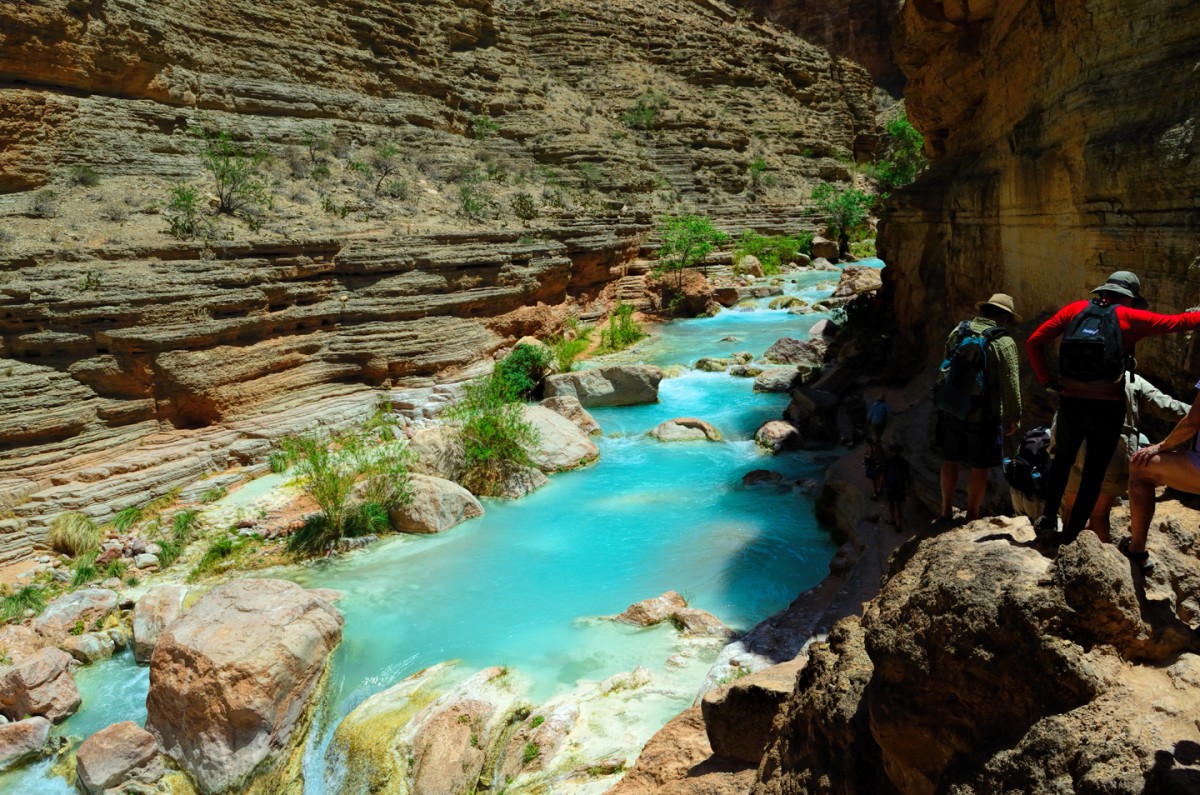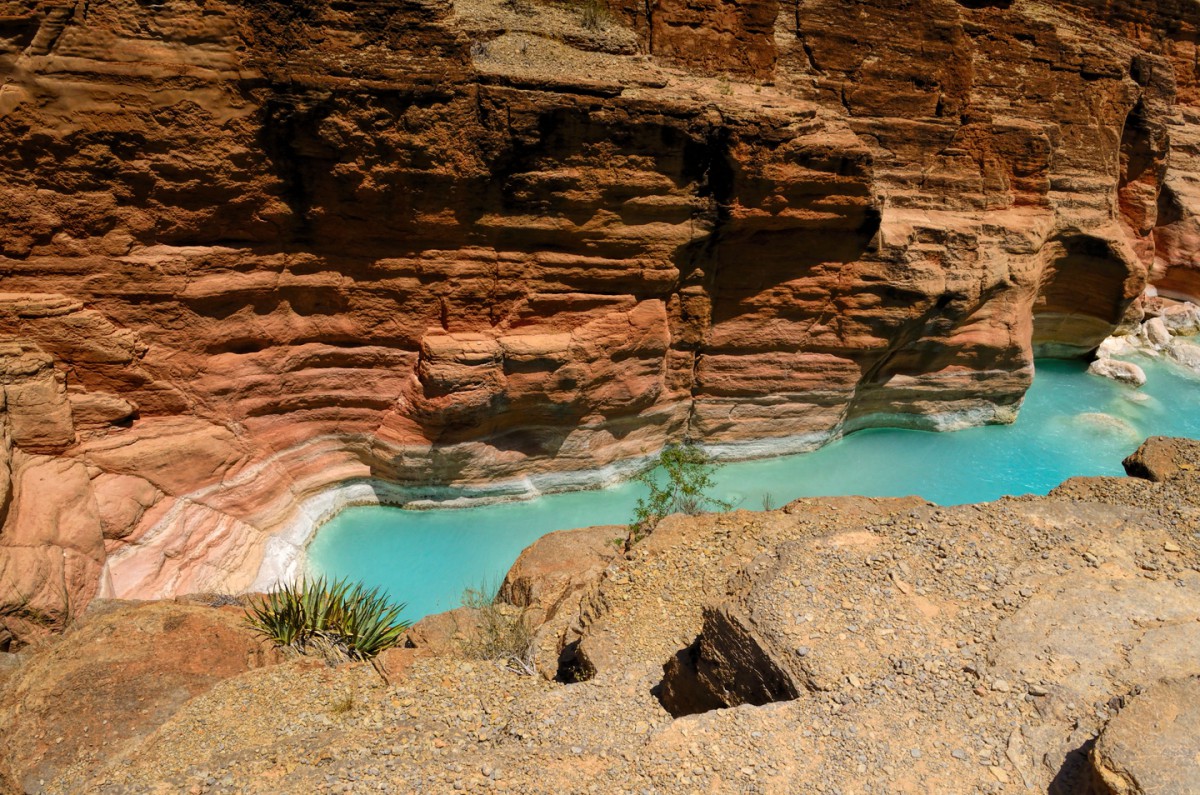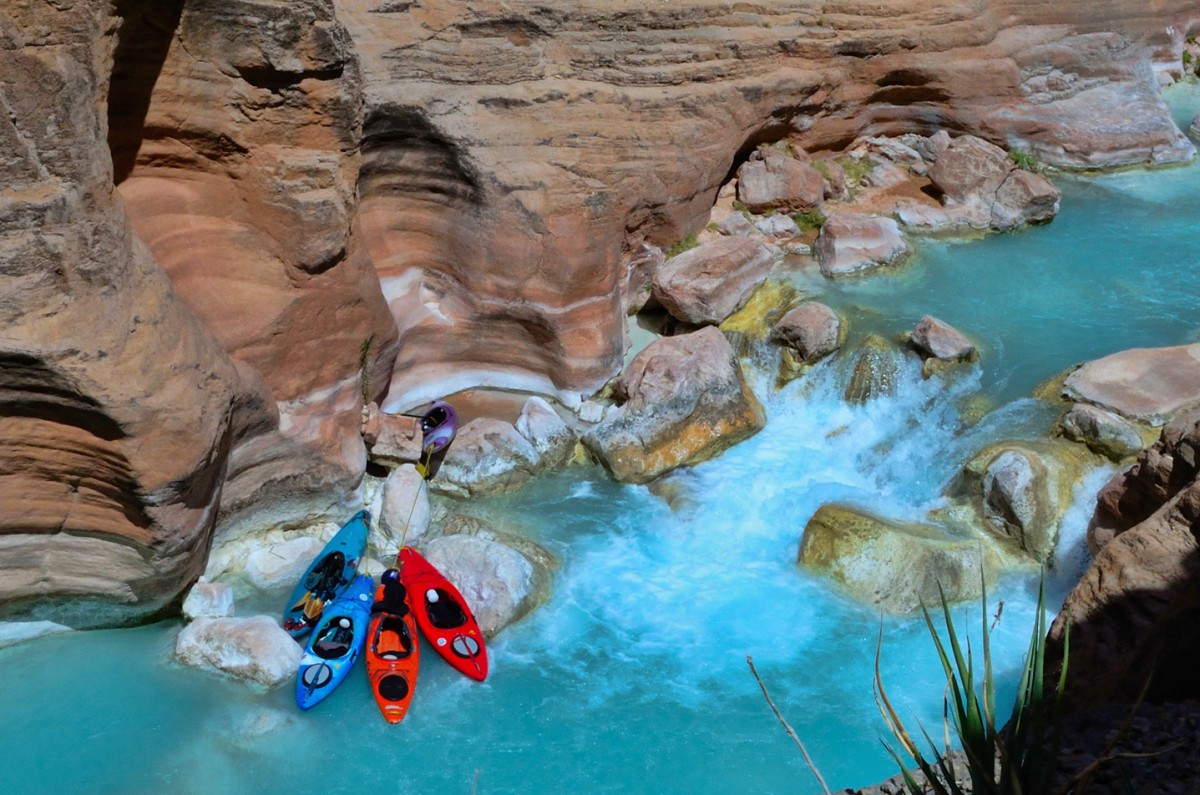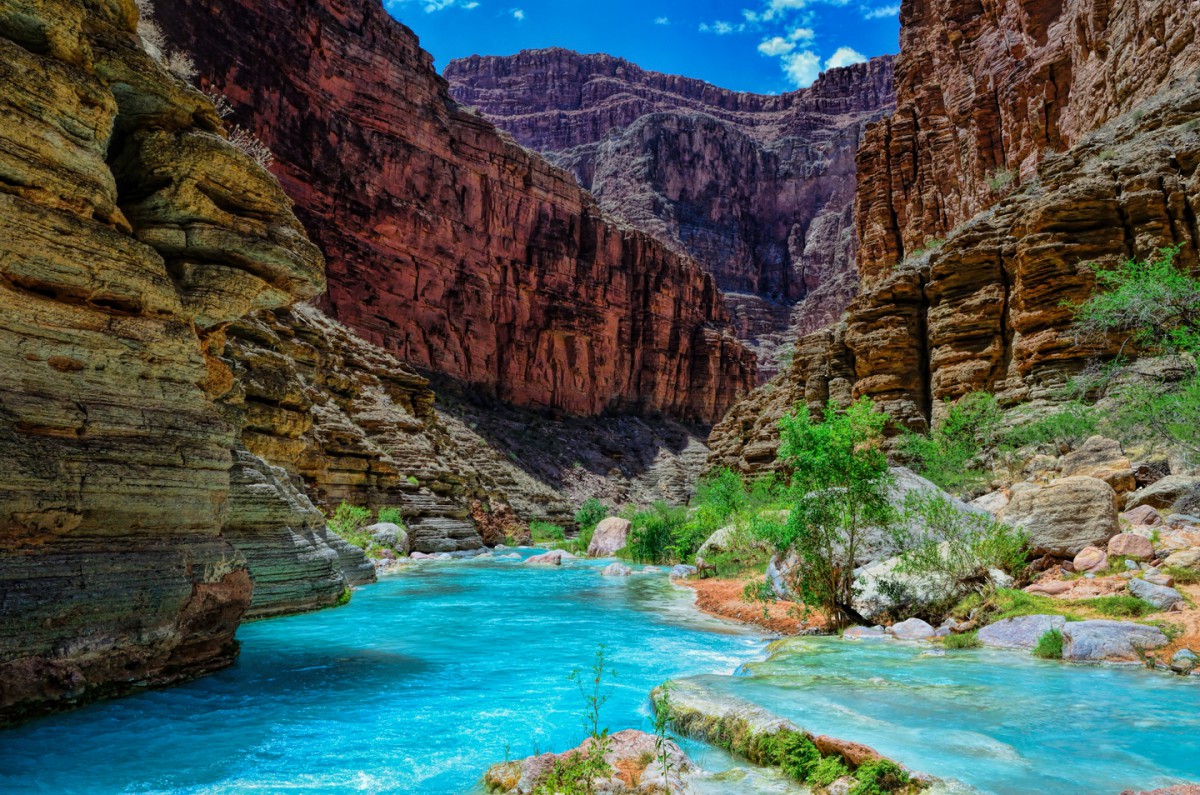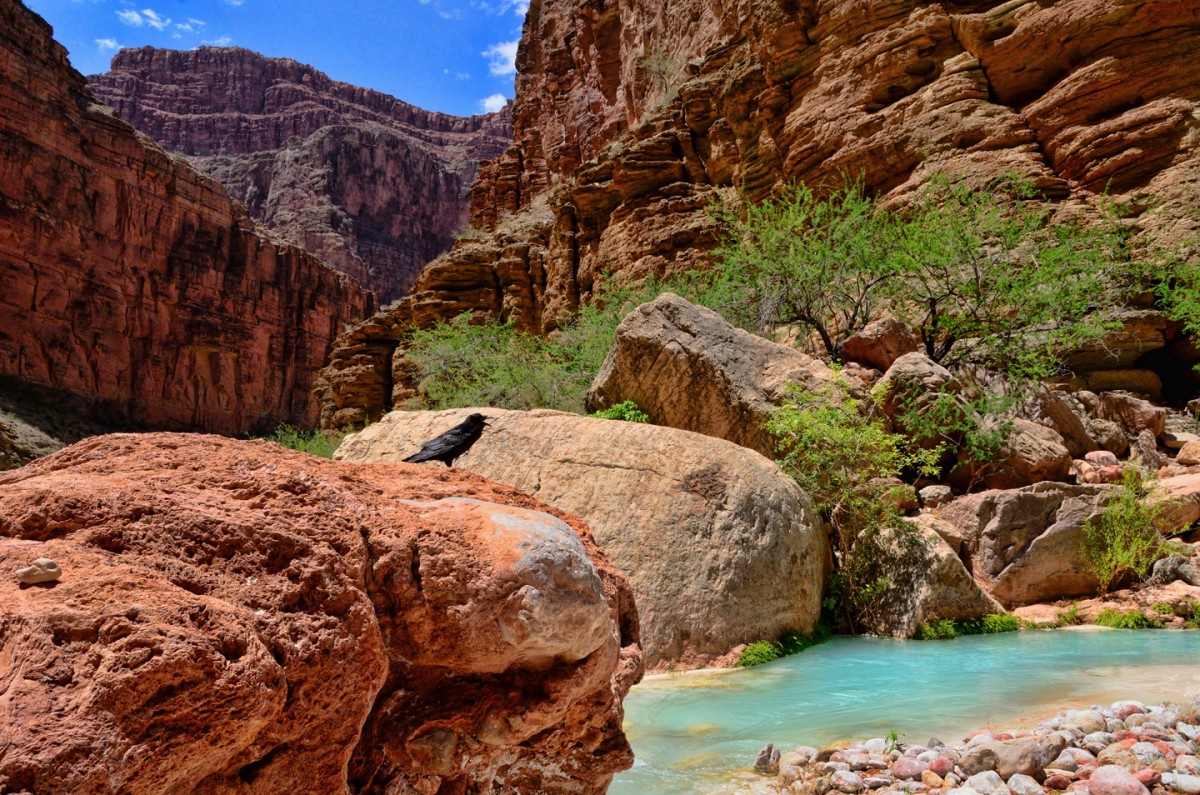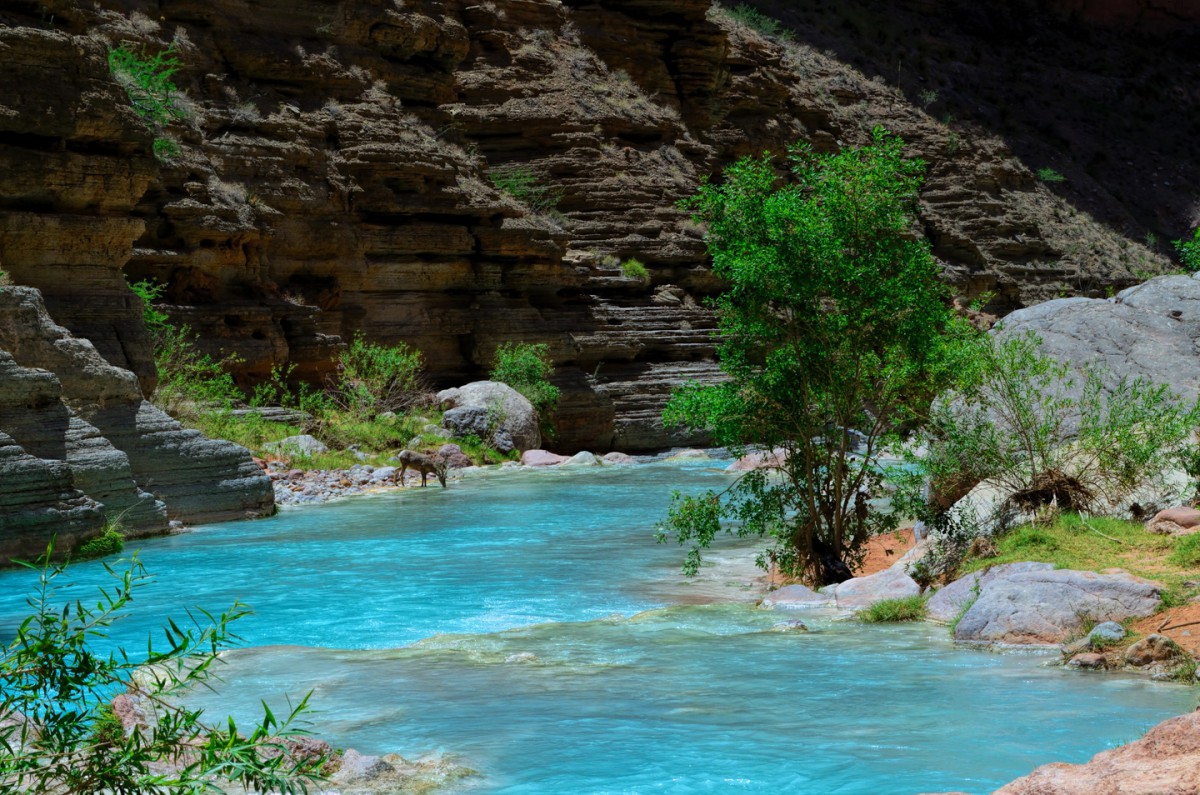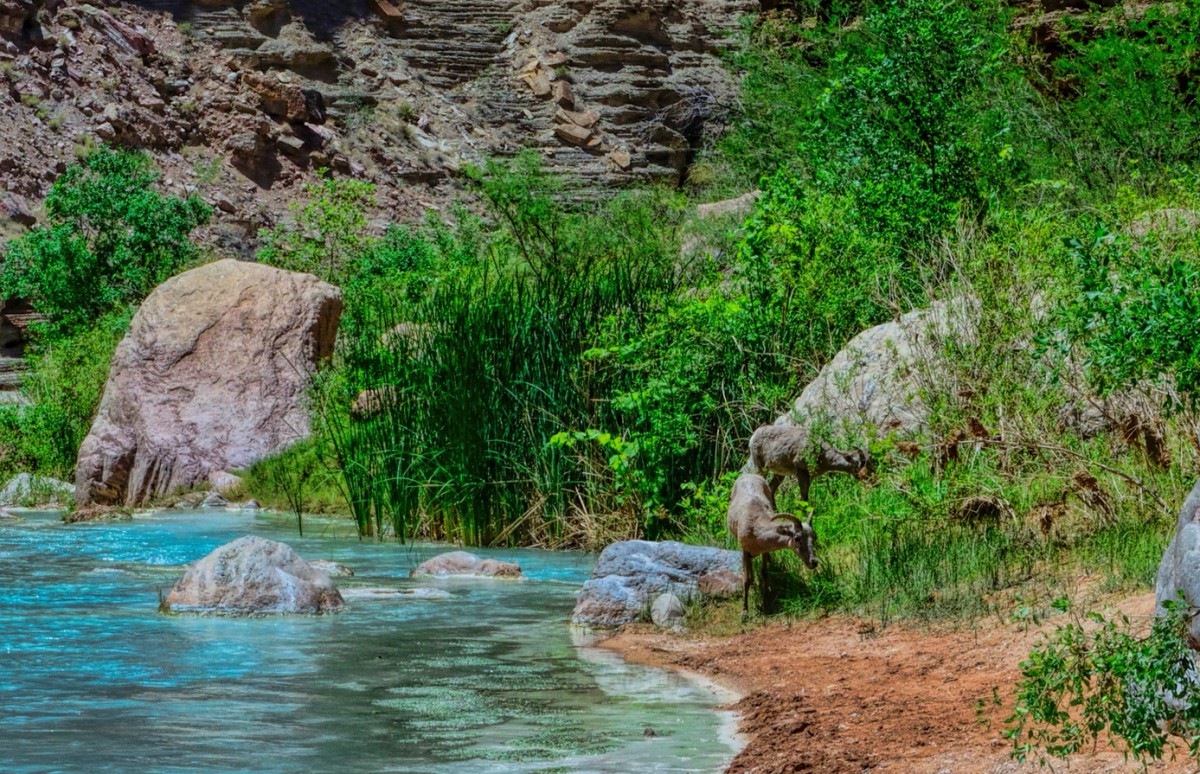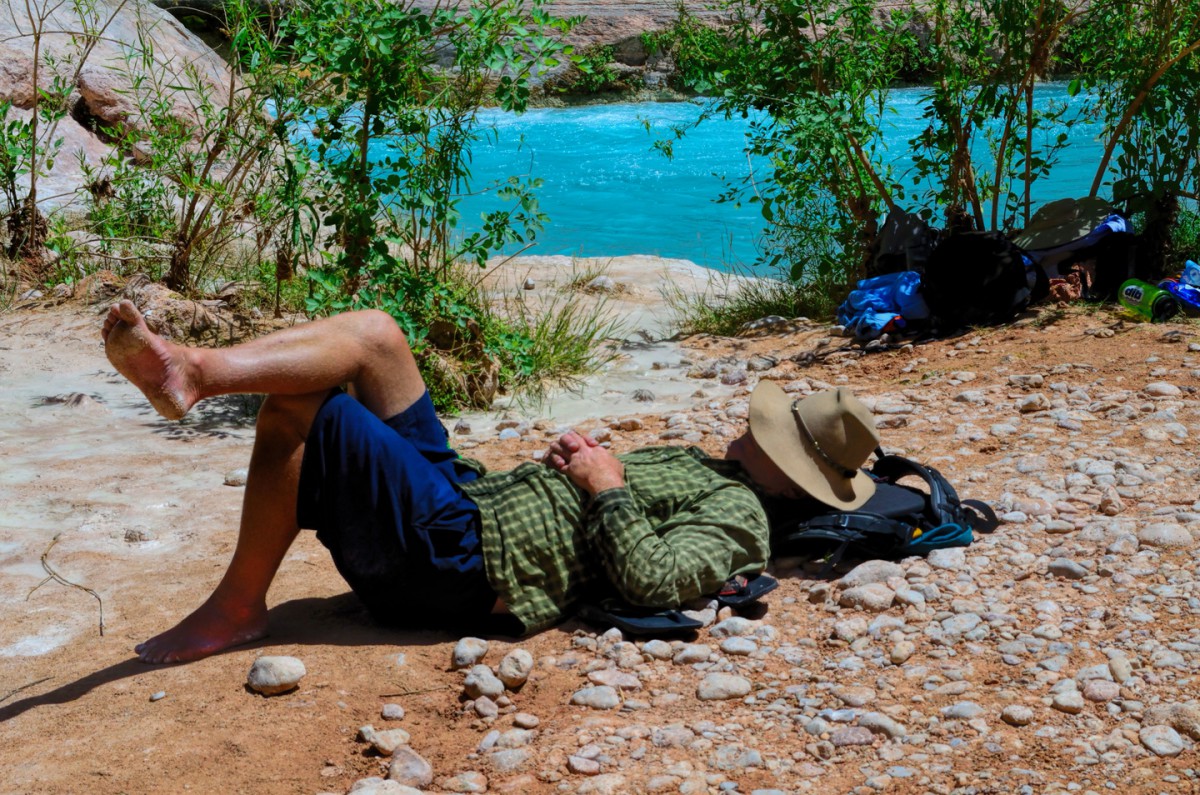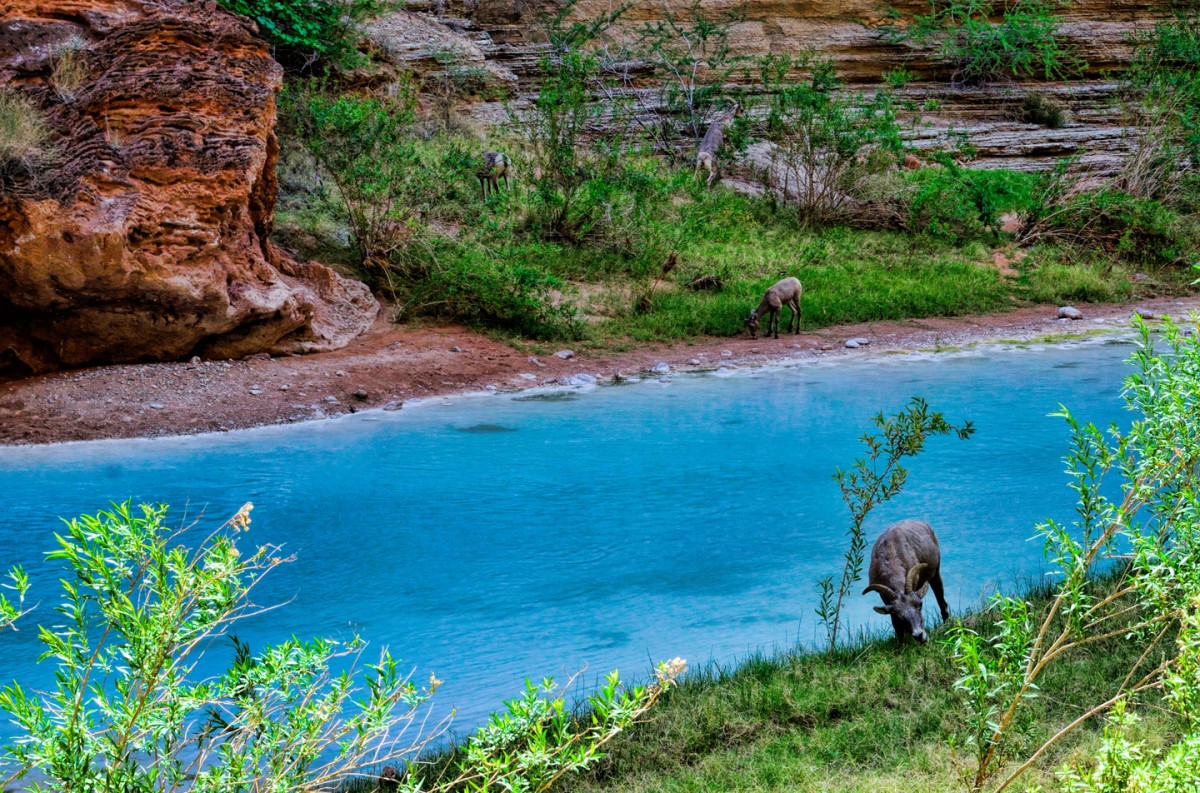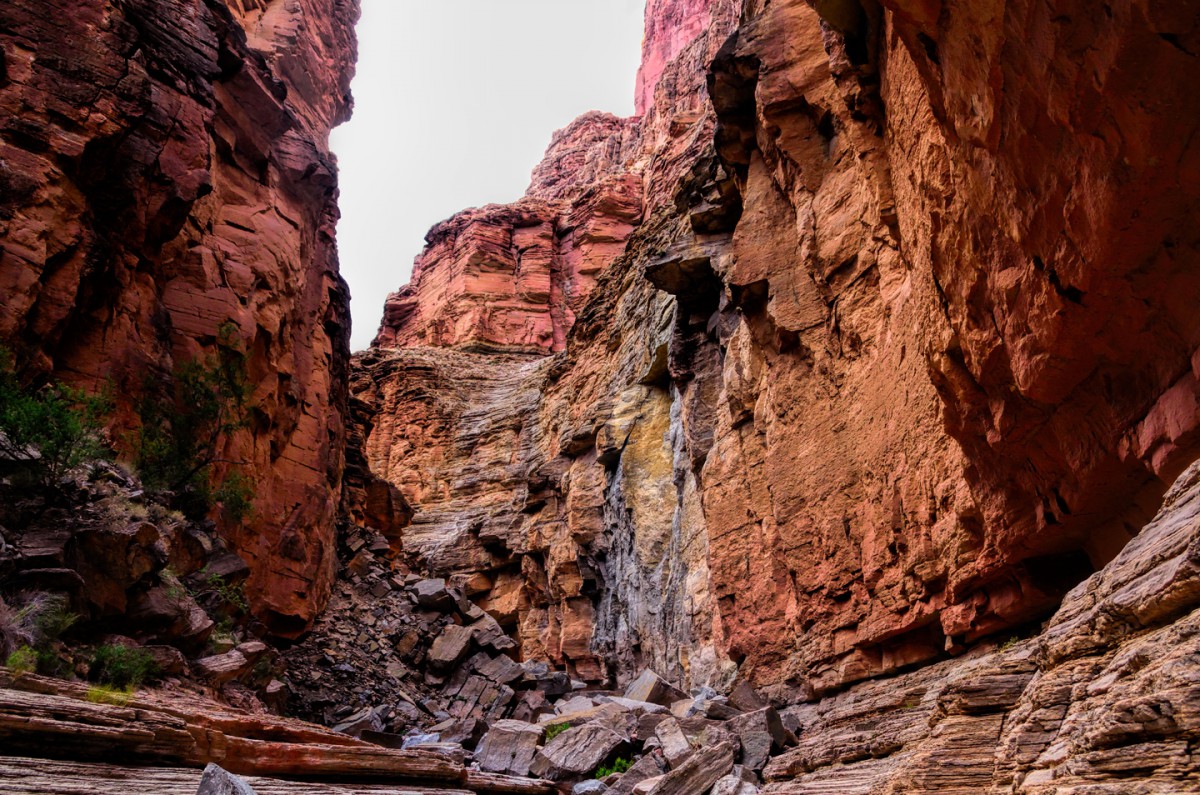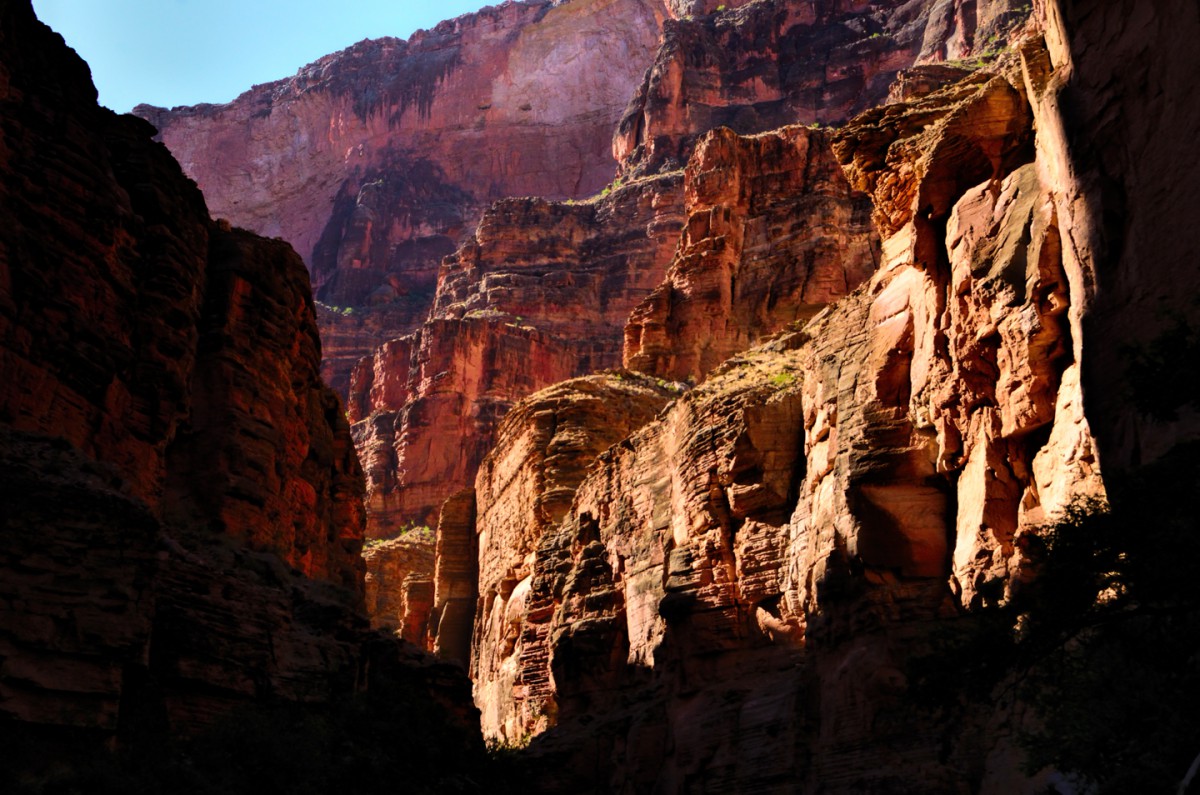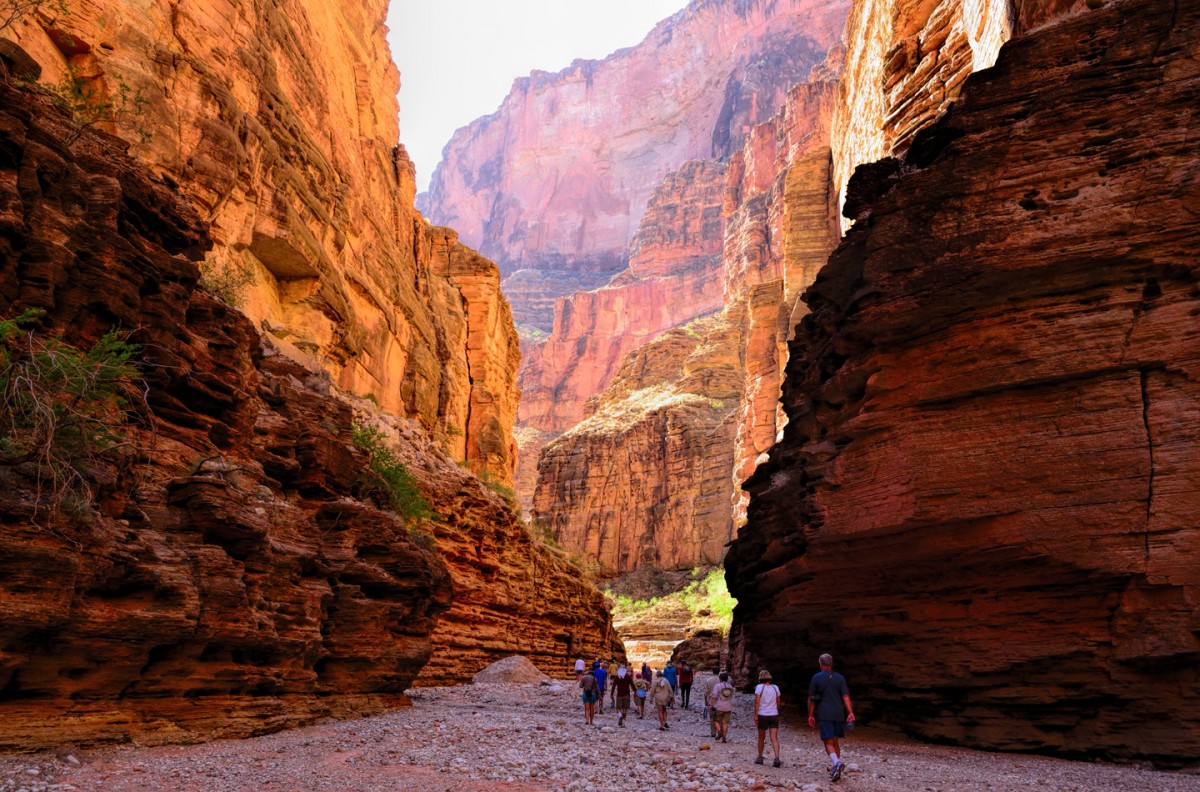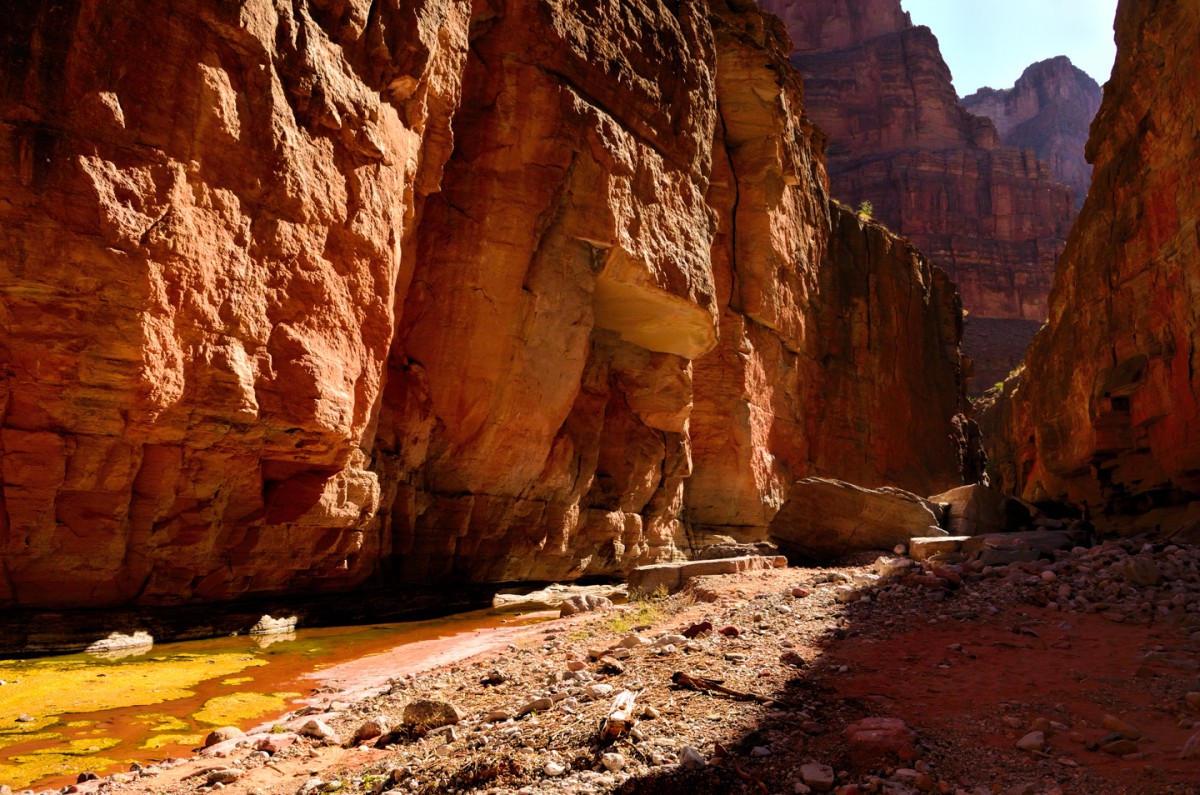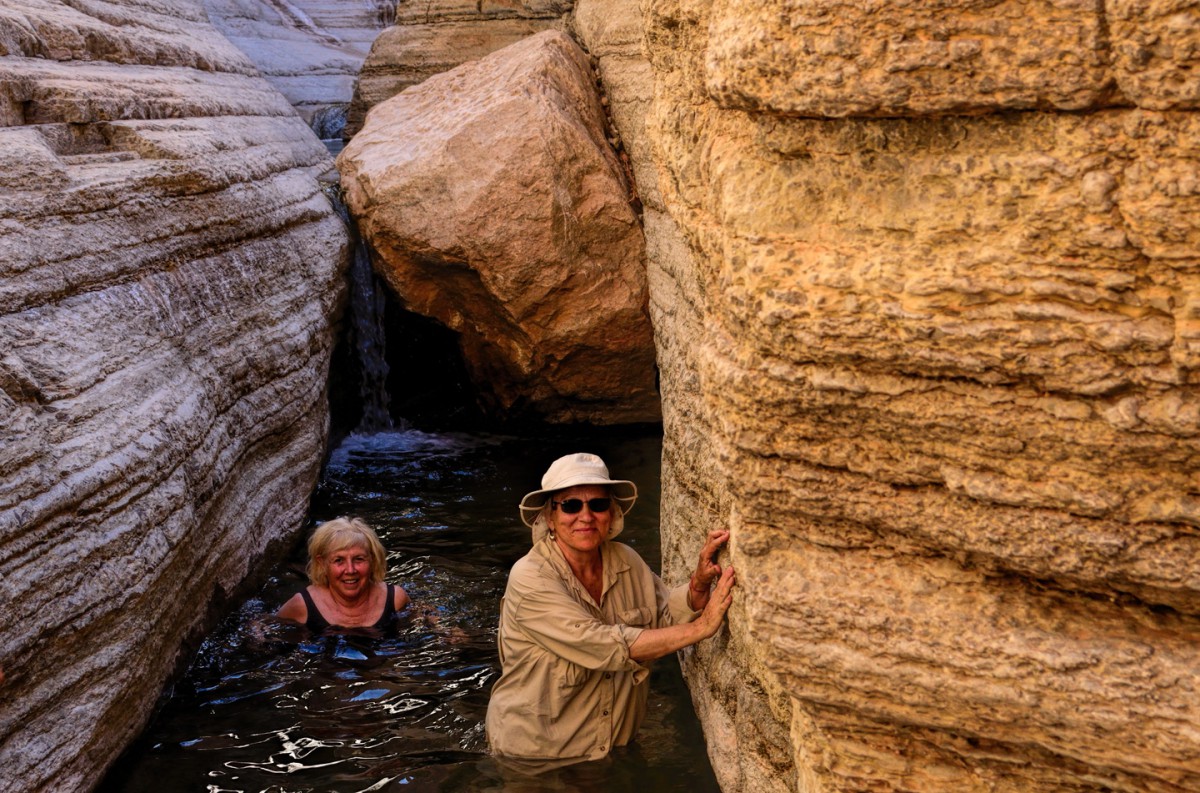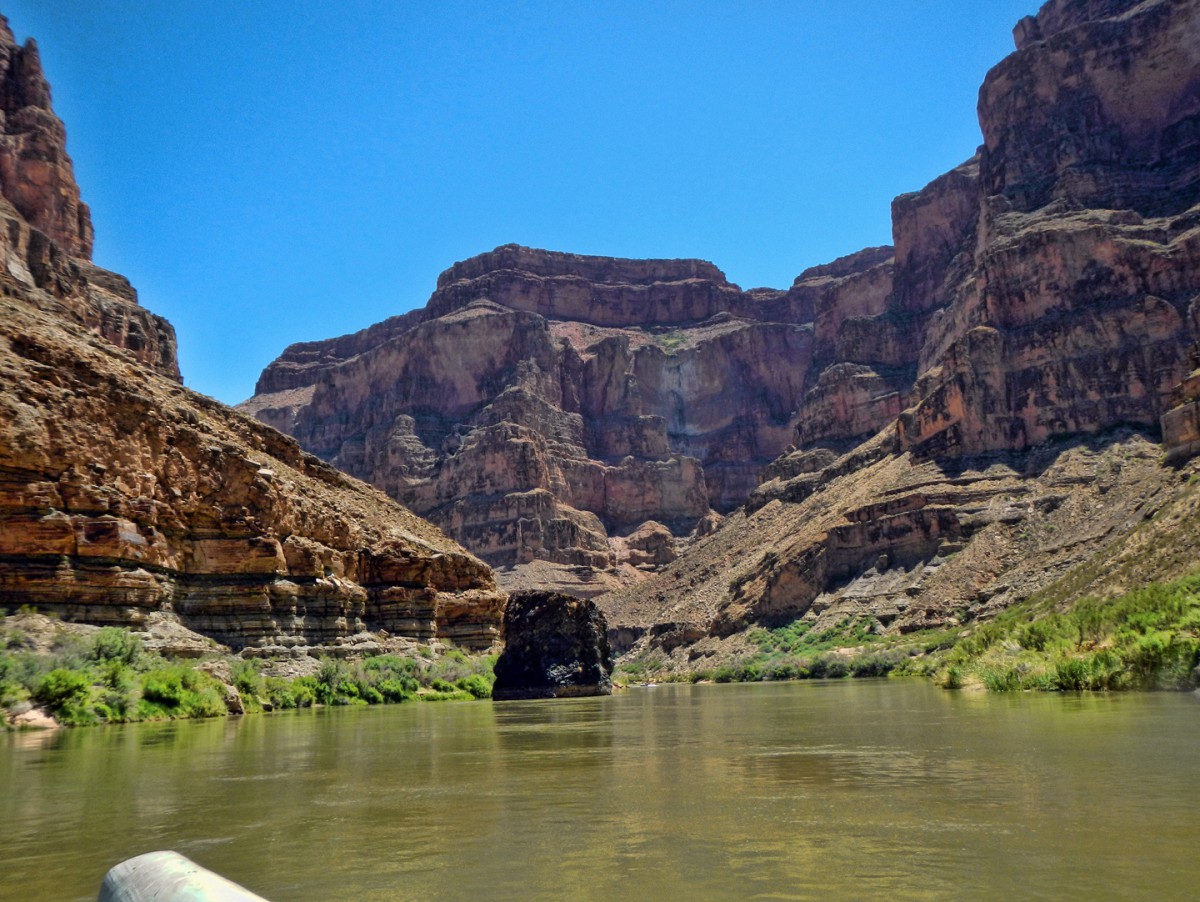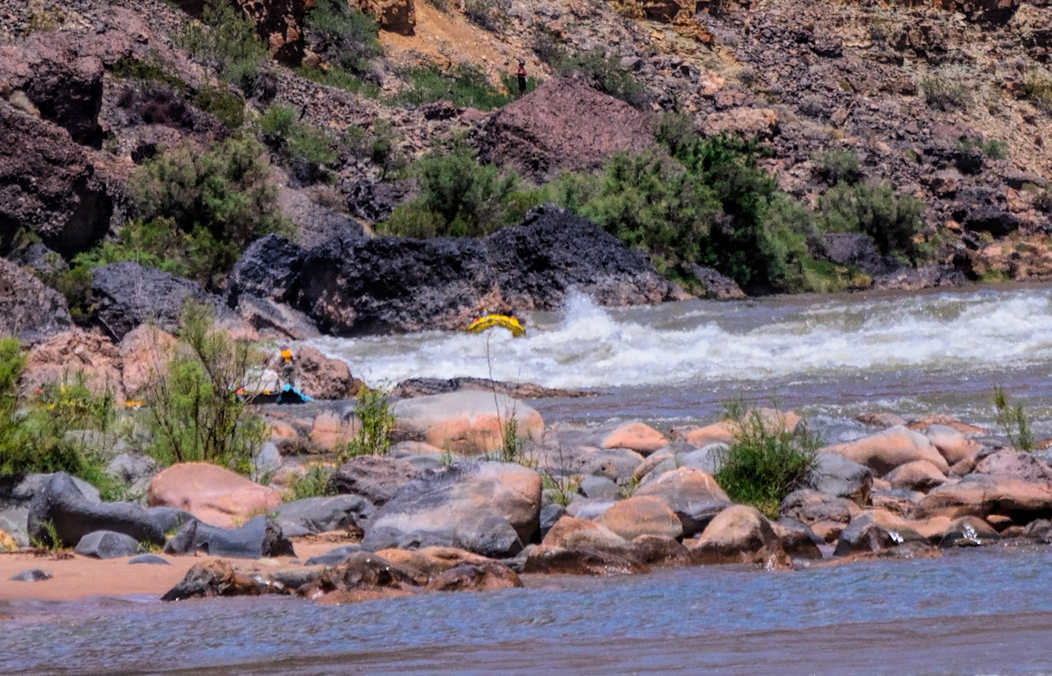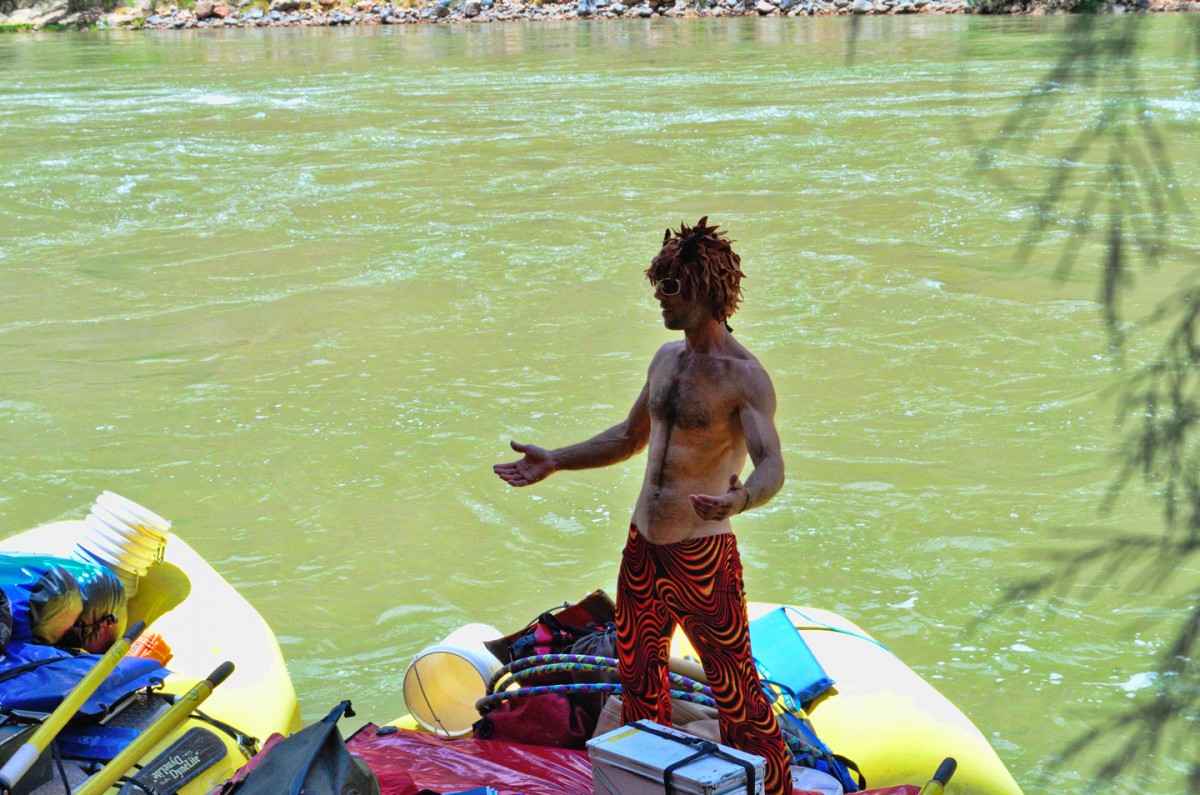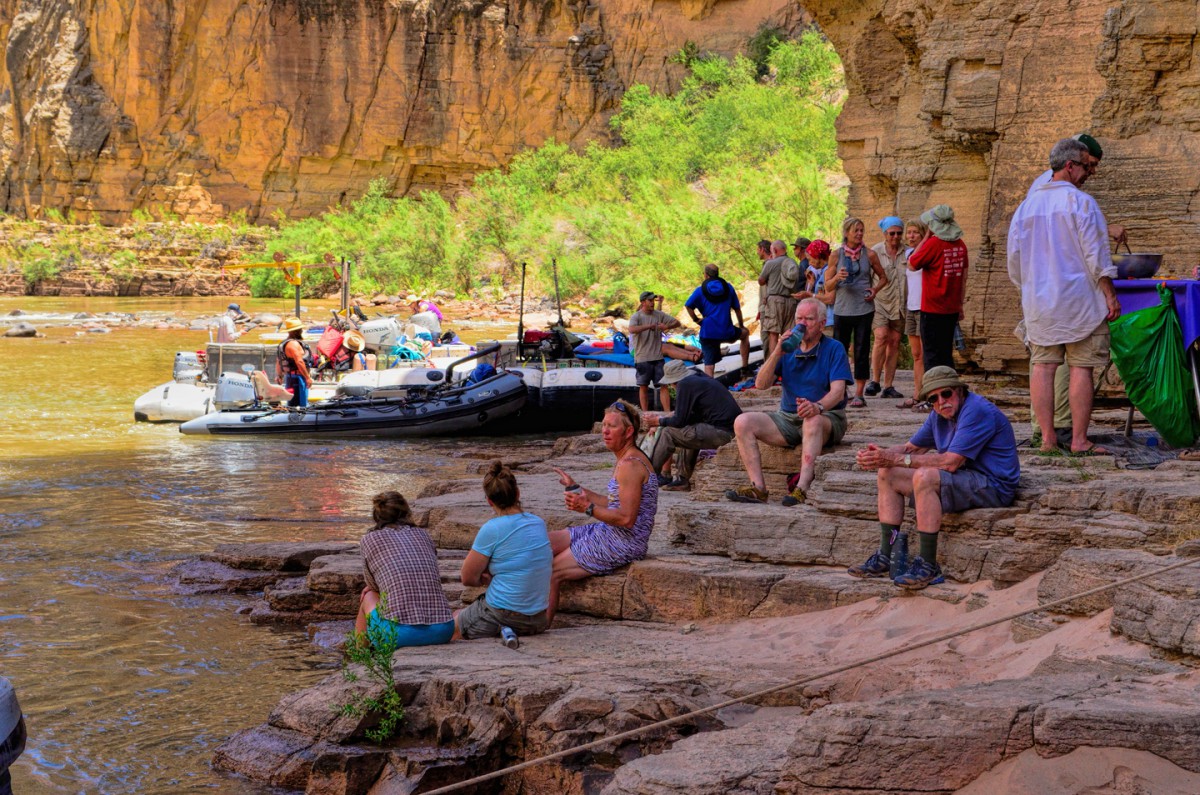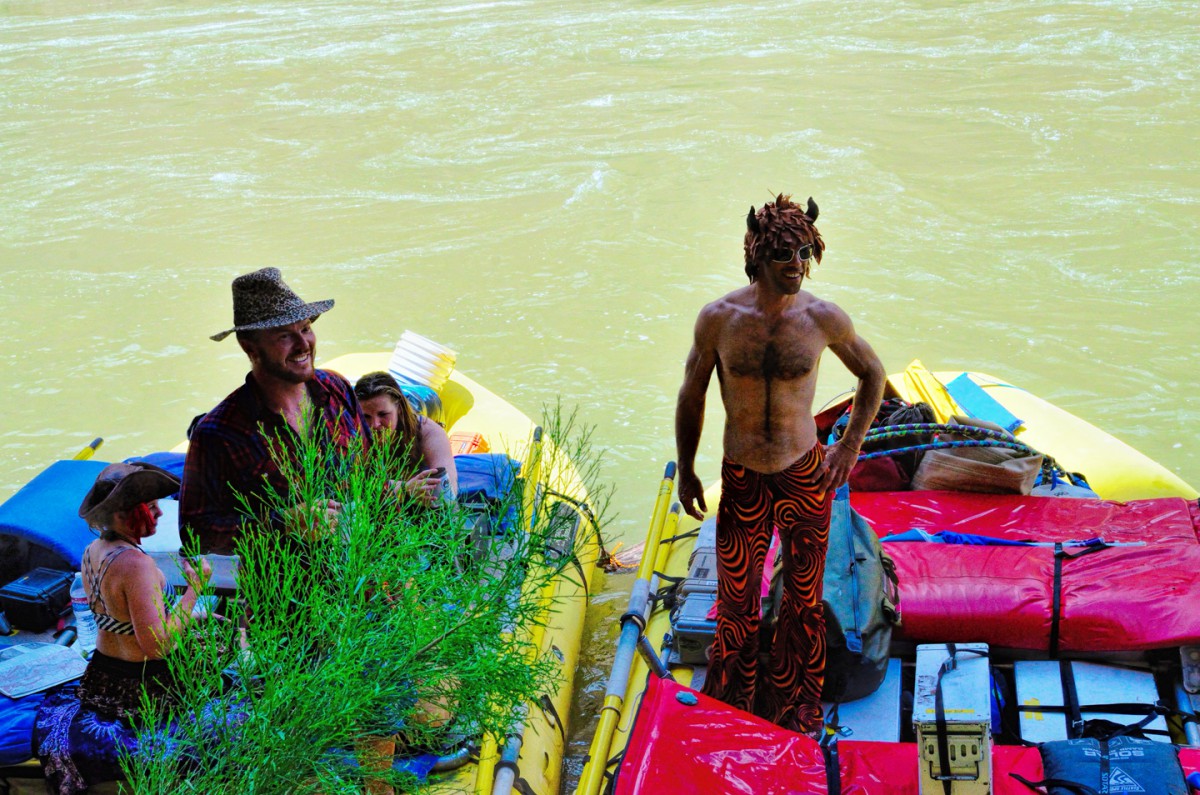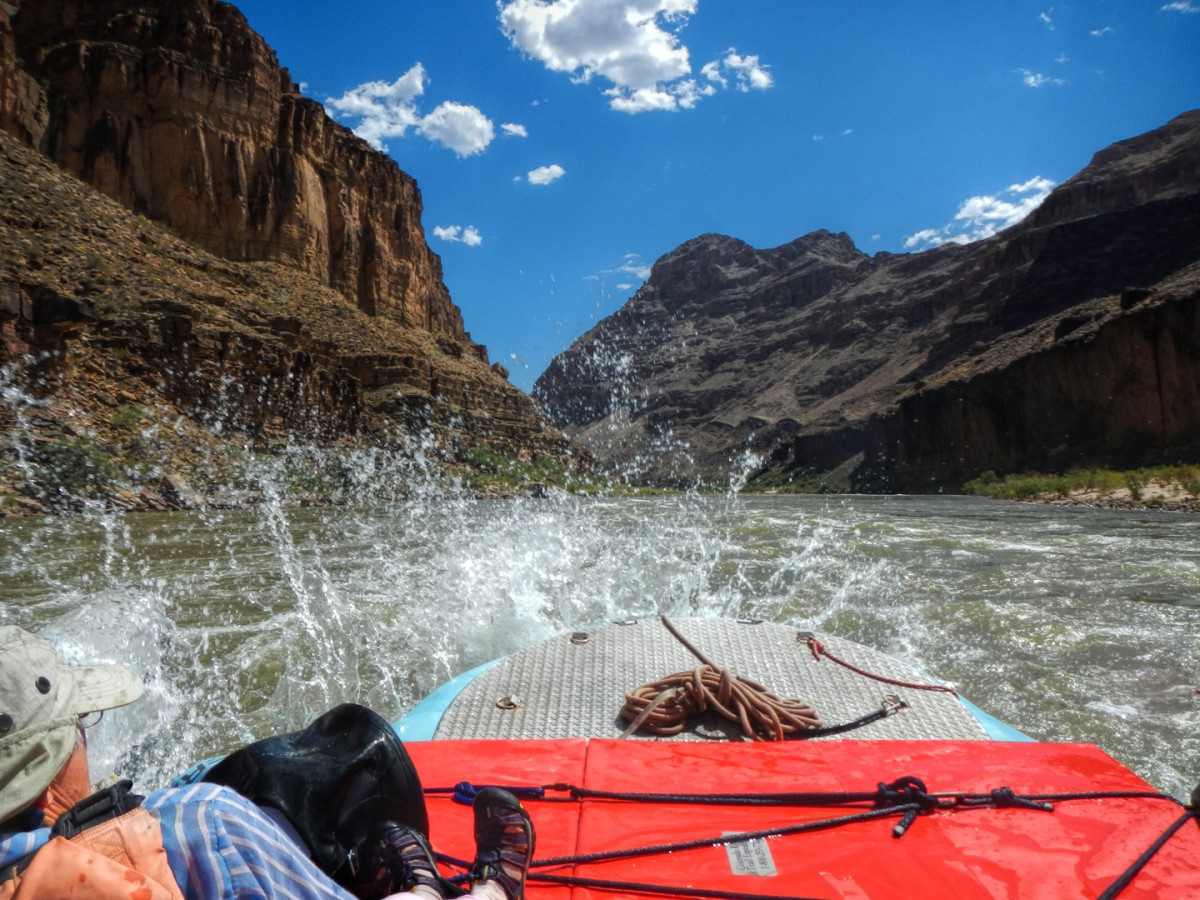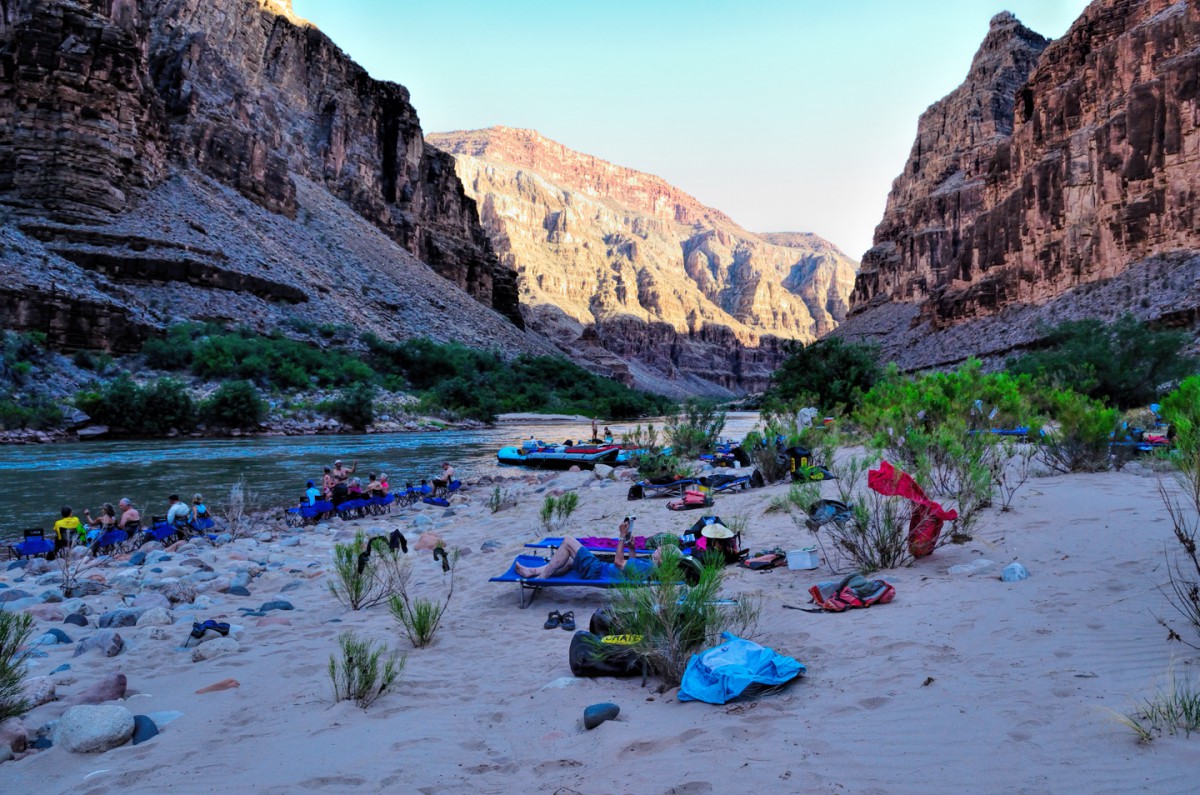There are hundreds (if not thousands) of posts on this forum that mention the Grand Canyon. It’s one of the most popular Road Trip destinations in the U.S., if not on the entire planet, and it’s well deserving of all that praise and attention. The Grand Canyon is incomprehensibly huge: 277 miles long, 18 miles wide, and as much as a mile deep, filled with buttressed palaces of angular multi-colored stone, stacked in layers upon layers that ripple off into the distance, as far as the eye can see. It’s tough to wrap your head around anything quite that big, so most of the millions of people who see it every year don’t even try. To the typical visitor, the Grand Canyon is nothing but a spectacular panorama. They stop at one or more of the viewpoints on the north or south rim, marvel at the one-of-a-kind landscape, and take their photos. Then they drive away happy, because they’ve “done” the Grand Canyon.
Would it surprise you to hear that there’s quite a bit more to this certified wonder of the world than the sliver of a slice that’s visible from Mather Point, or Desert View, or Point Imperial, or any of those arbitrary spots along the rim roads where parking is provided? No need to answer that question; we all know that it’s true. There are many intrepid souls who explore the depths of the canyon on foot, following an extensive network of trails, but let’s face it, not everyone is physically capable of such a strenuous hike. What goes down must come back up, and that slog of a climb back up is a killer!
Is there any other way to get into the heart of the Grand Canyon? Yes, indeed. The Grand Canyon is threaded along its entire length by the Colorado River. You can ride that river on a raft—but, fair warning; it’s not a leisurely float. There are more than 100 named rapids along that stretch, including some of the most thrilling whitewater in the world. If you want to see ALL of the Grand Canyon? The Colorado River will take you there, but in the process, you’re going to get really WET! (And it might just change your life!) Want to know what it’s like? Read on!
THE BEGINNING:
I’ve never been big on the thrill sports, at least, not personally. Ski jumping, big wave surfing, skydiving? (To name just a few). I’ll watch other people do those things, but I’ve never been tempted to so much as try any of that crazy stuff myself. Life in general is risky enough for my taste, and large jolts of adrenaline tend to give me the jitters.
A few years back, my friend Rick (yes, there’s another Rick) cornered me at work, and asked me if I’d be interested in joining a Grand Canyon River trip that he was organizing. He must have caught me in an unusual mood, because I surprised the heck out of both of us by NOT turning him down flat. Instead, I asked him, “When?”
"June of next year," was the reply. That was more than a year away! I have trouble planning ahead for the weekend, much less planning an elaborate trip a whole year ahead of time, but my friend pressed me. "If I can sign up enough people," he said, "we'll get a group rate, a terrific discount, and by planning it now, we'll be going at the absolute best time of year." He knew these things, as he explained, because this was going to be his third river trip through the Grand Canyon, and he had the inside track.
"How much?" I asked. And he told me. It was a lot, of course, but I was still intrigued.
"If you want to go," he urged, "you'll need to put up a $300 deposit before the end of this month. And the balance by March 1st of next year, 90 days in advance of our launch date."
"Let me think about it," I countered.
"Don't think too long," he said, "or you'll miss out." He gave me a link to the website of the rafting company--CRATE, Colorado River And Trail Expeditions. "They're the best", Rick said. "If you decide to go, I can guarantee you won't be sorry. My first river trip was the most amazing thing I've ever done. The second trip was even better. I can hardly wait to get back out there again."
I did my research, I really liked what I saw, and, long story short, I wrote out the check for the deposit. March 1st of the next year was still a long way off, so I tucked the notion of a rafting trip into the back of my brain and went on about my business. Time flew, as time tends to do, and when I received notice that the balance was suddenly payable in full, it actually caught me by surprise. "Whoa," I said, looking at the invoice. "That's a lot of money!" Was I having second thoughts? I checked the CRATE website again, looked at the amazing pictures, read the testimonials. "Life changing" was a recurring theme. So the answer was: No! I was not having second thoughts. I wrote out another, much bigger check, signed all the release forms and other paperwork, and formally booked my place on the raft, leaving from Lee's Ferry on the 1st of June, just 90 days away. At that point I was committed, and I started getting excited about it. "I'm really doing this thing!" I said to myself. "Damn! This is going to be great!"
When the day arrived, I was ready. I'd been to the sporting goods store, bought a floppy hat and the right kind of outerwear and waterproof shoes. I'd bought a waterproof camera as a backup to my big Nikon, something I could use even with waves crashing across the deck. I bought extra batteries, extra memory cards, sunscreen, salt tablets, and a leash that strapped my glasses to my head. "Bring it on," I said smugly, to nobody in particular.
We were to meet our group at a hotel in Las Vegas, the night before the trip began, and everyone would ride together on a chartered bus from Vegas to Lee's Ferry. Rick and I drove from Phoenix to Vegas in his pickup, arriving at the hotel just in time for the meet and greet. Despite having organized the trip, Rick only knew two of the people, a couple from Seattle. The rest were friends of theirs, and friends of their friends, and friends of their friend's friends, some two dozen in all, counting Rick and I. Most of the group was retired, or close to it, and pretty much all of them were from the Seattle area. These folks were veteran travelers, hikers, trekkers, and every one of them was every bit as ready for this as I was.
DAY ONE: We’re off, into the enchanted depths of the Grand Canyon!
The bus left the hotel quite early--Lee's Ferry was five hours away, and the sooner we got there, the sooner we'd be on the river. We made time on Interstate 15, through flat, scrubby desert east of Vegas, passed the town of Mesquite, crossed the Arizona strip (the isolated northwest corner of the state), on up to St. George, Utah. We left the Interstate just beyond St. George, drove east to Hurricane, then followed UT 59 southeast back into Arizona again, passing through the infamous community of Colorado City. (I won't describe that place here, but you can click the link if you're curious). A bit further down the road, we stopped in the tiny town of Fredonia, where CRATE has a small warehouse facility. We had lunch there, bought some T-Shirts, and picked up two of our guides, who rode with us the rest of the way to the put-in. The scenery started getting a lot more interesting past Fredonia, as we drove up and over a ridge of mountains cloaked in pine forest. A side road to the south off Highway 89A led to the North Rim of the Grand Canyon, but we kept going, past the Vermilion Cliffs National Monument, past Navajo Bridge, where we got our first glimpse of the river, then on down to the Lee's Ferry camp ground, right on the river bank. Our two big pontoon rafts were pulled partway onto the beach, and our other two guides were already there, loading the gear.
The rafts had to carry enough food and water to last two dozen people for more than a week, not to mention camping gear, an extra outboard motor, and everything else we were likely to need, because once we got on the river we were on our own, at least as far as Phantom Ranch, which we wouldn't hit until the end of day three. The guides gave us an orientation of sorts, showed us how to set up the cots we'd be using, how to properly seal the watertight duffel bags we'd be using for our personal gear, then pretty well ran through the checklist of how things worked and what we should expect, and what would be expected of us.
Everyone donned an orange life preserver; we all climbed aboard one raft or the other, and found a spot to sit. The two rafts were shoved away from the beach until they floated free, and the boat drivers eased them into the middle of the channel.
We were mostly moving with the current, but the beach dropped behind us pretty quickly, and in a matter of minutes we were out there, rafting down the Colorado River, heading squarely into the enchanted depths of the Grand Canyon!
We passed by a flotilla of slower moving oar boats, smaller craft that hold, on average, four to six people.
With the oar boat expeditions, you get a lot more intimate with the river, but if you care at all about comfort? The pontoon rafts are like floating palaces by comparison, and they're a heck of a lot safer in the rapids. At mile four we passed underneath Navajo Bridge, where Highway 89A crosses the Colorado River headed south toward Flagstaff.
That's the only crossing of the river for automobiles between Glen Canyon Dam and Boulder Dam, the entire length of the canyon, so once you cross that line, that's where the trip really begins. We hit our first real rapid just four miles later: Badger Creek, and three miles after that another, Soap Creek, followed by yet another called the Sheer Wall Rapid. We were feeling pretty smug about it--already almost veterans, when Mikenna, the driver of our boat, gave us sobering instructions: "If I yell out 'two-hander'" she said, her tone quite serious, "that means you'd best find the nearest rope, or whatever you can grab, and hold on with both hands! I really mean that. Both hands!" The instruction was timely, because the next rapid, House Rock, was a two-hander. The raft started bucking the moment we hit the whitecaps. There was a good-sized hole, a whirlpool, on the left side of the river, so we ran to the right, chopping across waves that splashed over the deck and gave us a good soaking. Twice. Or maybe it was three times? Ha! It was an absolute hoot!
"YEAH!" my friend Rick yelled aloud. "That's what I'm talking about!"
Beyond the rapid we were floating serenely once again--such a sharp contrast! One minute we're peacefully floating, basking in sunshine; the next minute we're crashing and thrashing though standing waves higher than our heads! Next? We're calmly floating again past the beautiful rock walls of the canyon--but now, we're wide-eyed, pumped, sputtering, and soaking wet all the way to our skivvies!
It was already getting on toward late afternoon, so at mile 19 we pulled over and anchored the rafts by a wide beach, our camp site for the first night. The waterproof black rubber duffels, nearly fifty in all, were unloaded by a human chain, the bags passed from hand to hand and piled up well away from the water's edge. Each of us located the two that were emblazoned with our assigned number, in my case, the blue #5 with my personal gear, and the yellow #5 with my personal sleeping kit--a folding cot, a sleeping bag, and a tarp. There were tents stowed separately on the rafts in case of inclement weather, but we didn't need them on this first night--or on any other night, as it turned out, because (spoiler alert!) the weather proved to be perfect for us throughout the entire trip. The next step was critical: staking out the perfect spot to set yourself up. Had to be flat, preferably not too rocky, and with enough separation from the other campers to lend a modicum of privacy. The cots were a challenge at first. They unfolded a particular way, and the legs had to be inserted into carefully aligned holes in the frame a particular way and everything stretched tight. If you got the sequence wrong you had to start over, and there was quite a bit of fumbling and scratching of heads until we figured out for ourselves exactly how the danged things went together. Personally, I hadn't been camping in years, and I hadn't slept tentless under the stars since I was a kid. This was likely to be a very long night--but I was ready for it. At least, I hoped that I was.
While the passengers were busy messing around with our cots and whatnot, the crew was busy setting up tables and cooking equipment, getting started on our dinner, the first of the many great meals prepared for us alfresco on isolated Grand Canyon beaches.
When the food was ready, we all straggled over to the buffet and served ourselves. I can't recall exactly what we ate that first night, but I do remember that it was good stuff. It's a universal truth that everything tastes better on a camping trip--and this was truly the ultimate camping trip. After dinner we sat around in folding camp chairs, getting acquainted, sharing travel stories, some of us drinking canned beer that was reasonably cold from being suspended in net bags, towed behind the rafts in the icy water. By 8:00 or so, the last of the light was fading. It seemed a bit early to be going to bed, but we were all tired from the journey, and once the last of the light was gone, there was really nothing else to do. Campfires aren't allowed on the Grand Canyon beaches. If they were, the available fuel would soon be exhausted, and the pristine nature of these wilderness camp sites would ultimately be spoiled. The goal was to leave the camp site exactly as we found it, no trace of our stay in that spot, aside from our footprints in the sand. That meant that if you had to relieve yourself, you did so in the river (seriously), or you used one of the two portable toilets that were set up each time we made camp. Those things were a story unto themselves, but it was all part of a routine that became very familiar by the end of the trip.
When darkness fell, it fell like a brick. I laid on my cot, staring up at the stars, the multitude of stars, ALL of the stars. I listened to the small sounds and quiet conversations going on around me until they faded away, leaving nothing but the sounds of the river, surging steadily past, leaving me drifting...
Next up: Day 2: The Roaring Twenties, Redwall Cavern, and the Bridge of Sighs



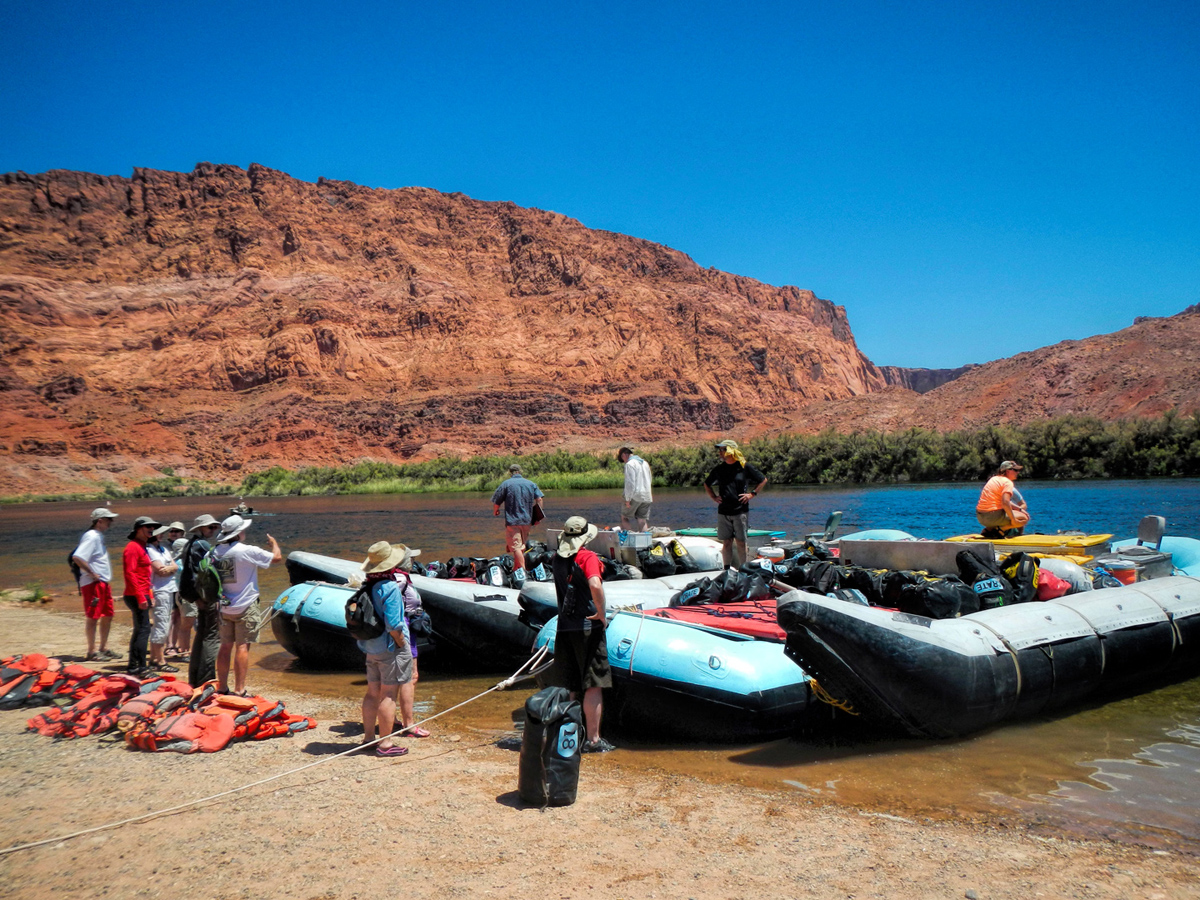
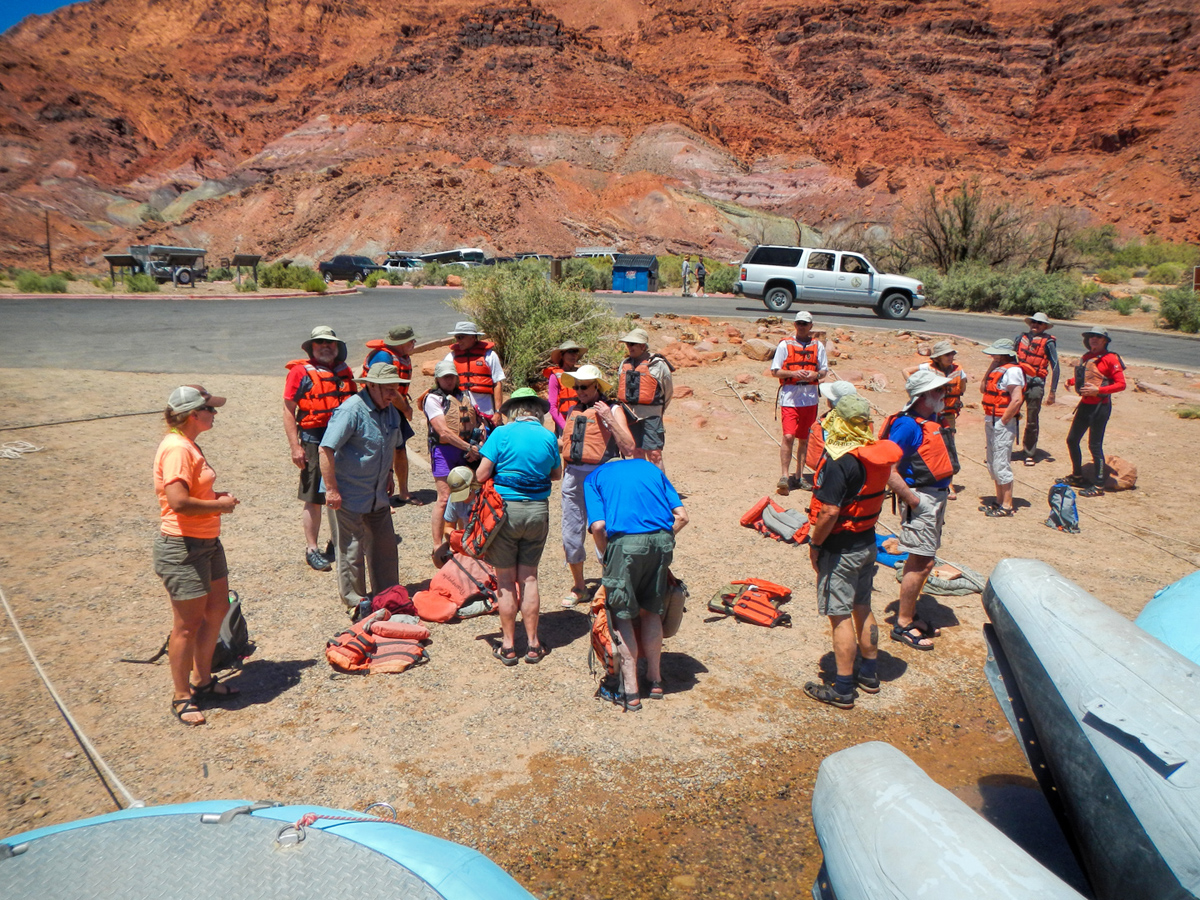
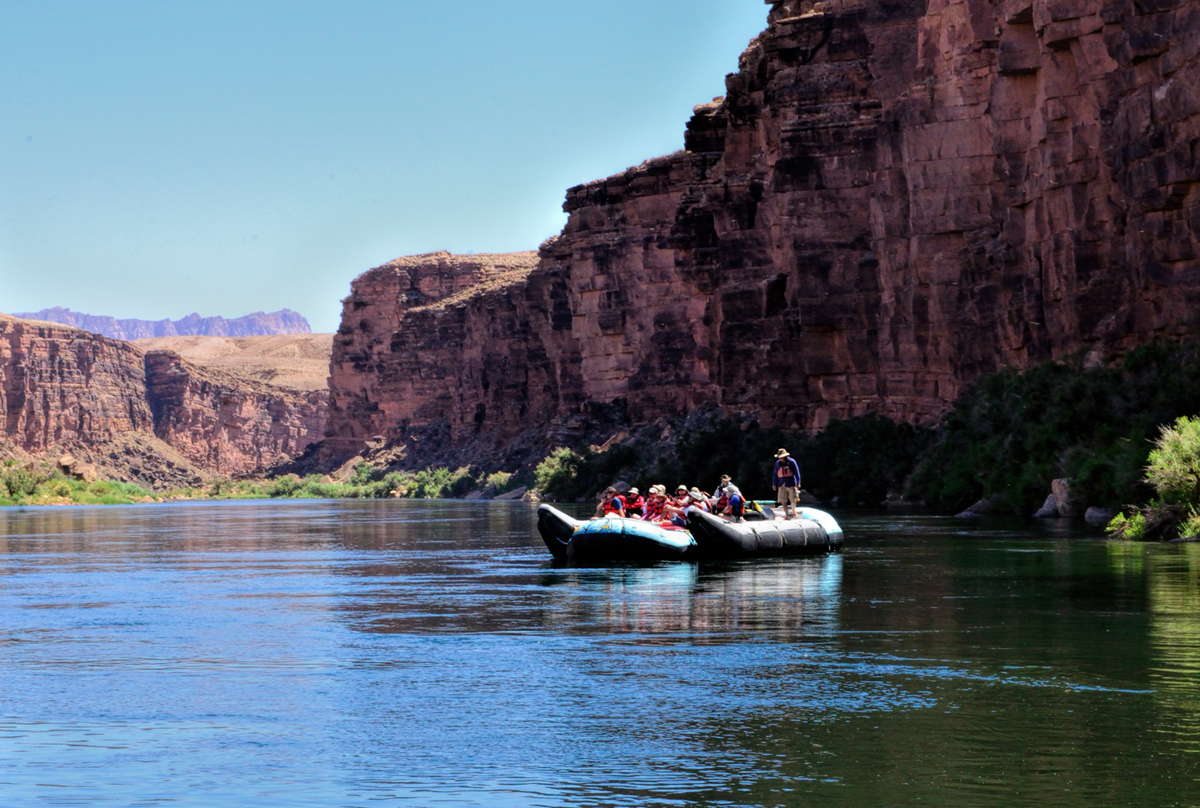
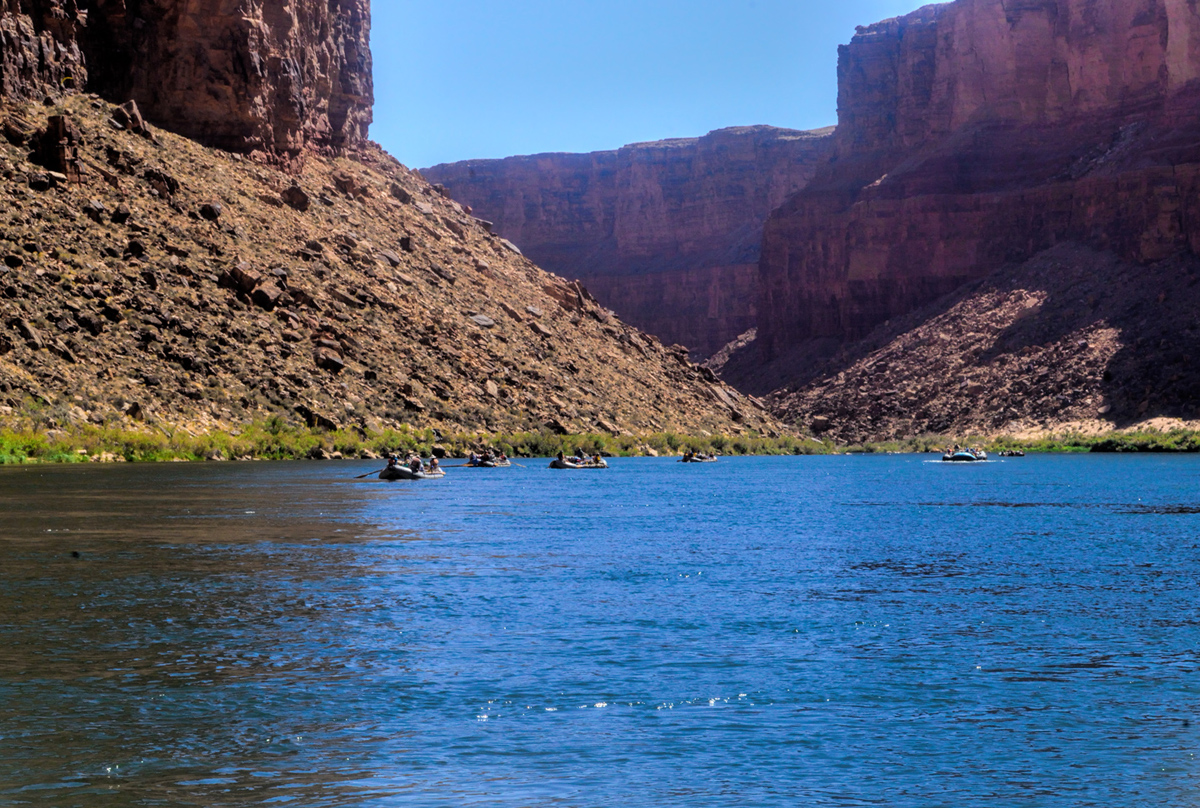
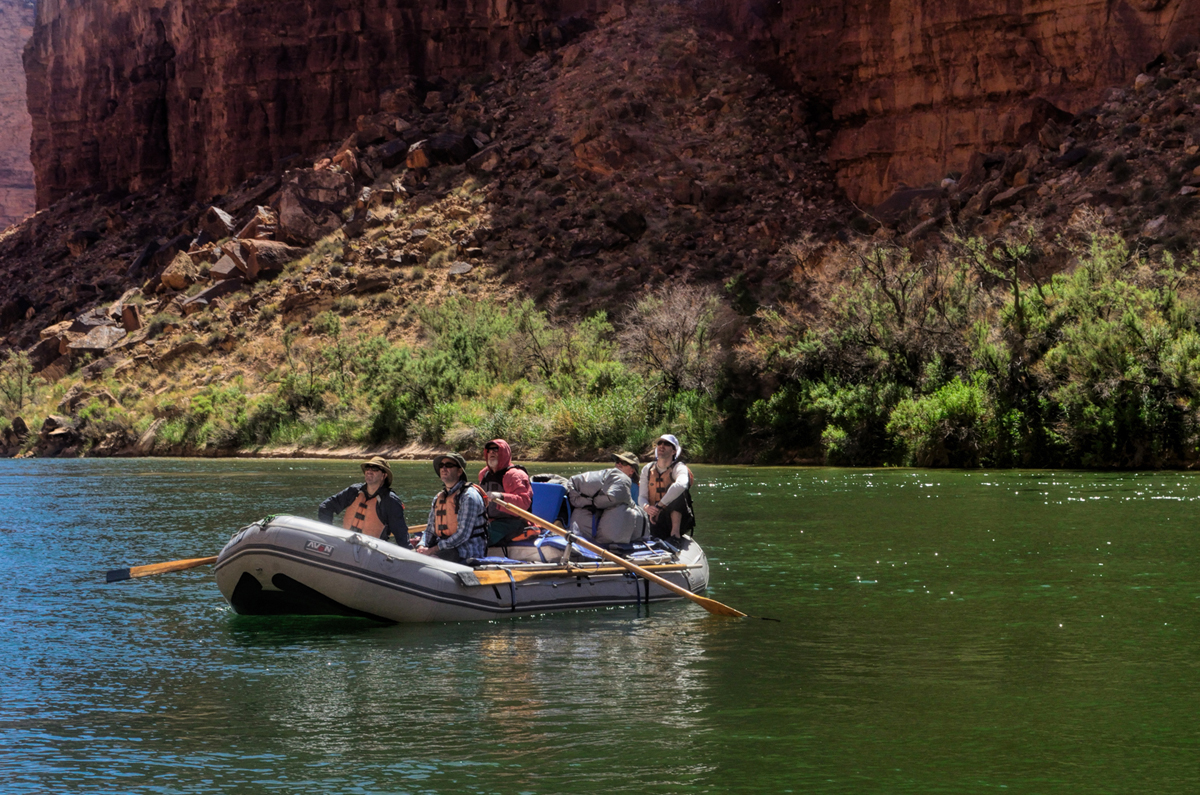
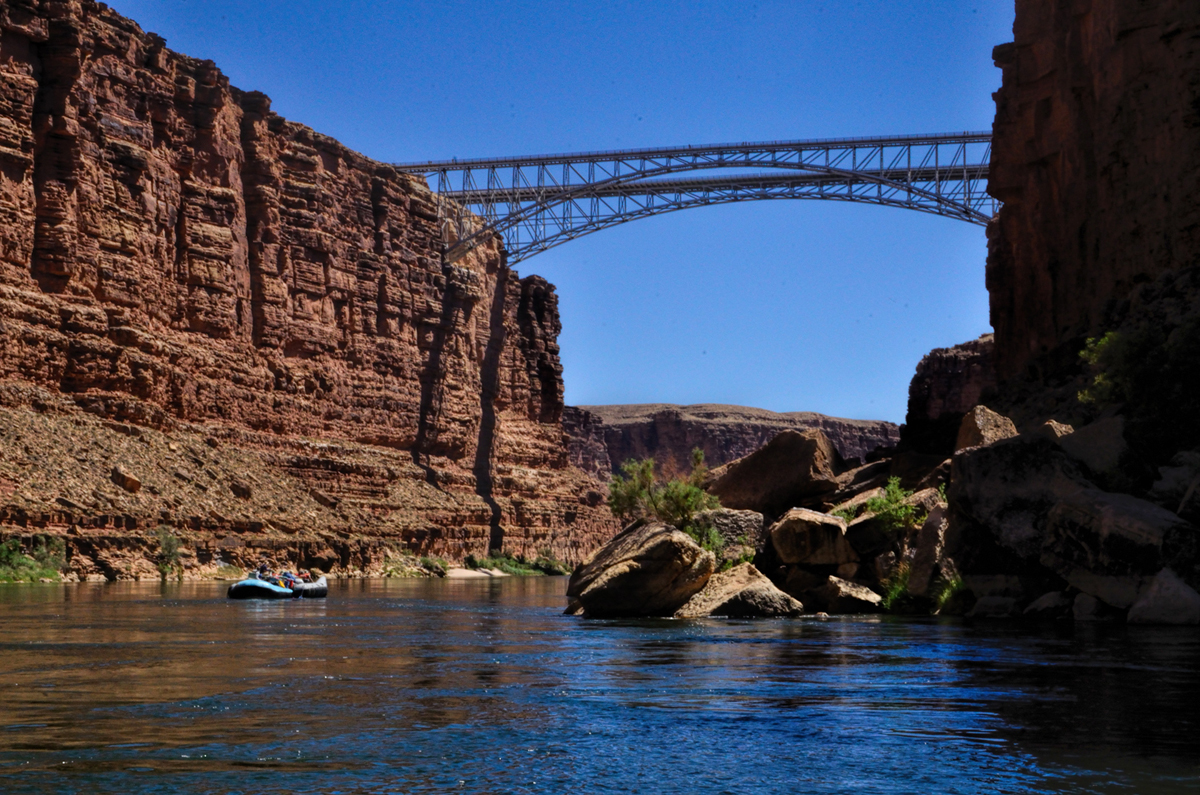
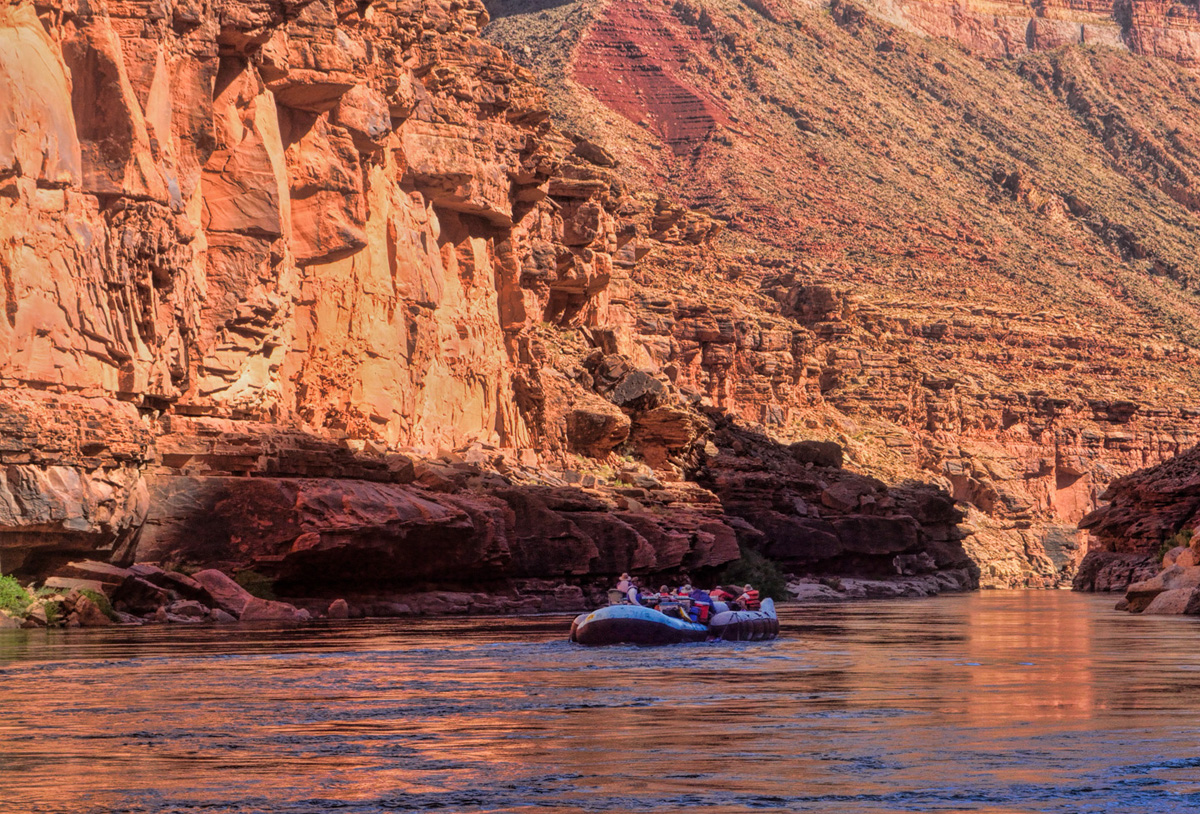
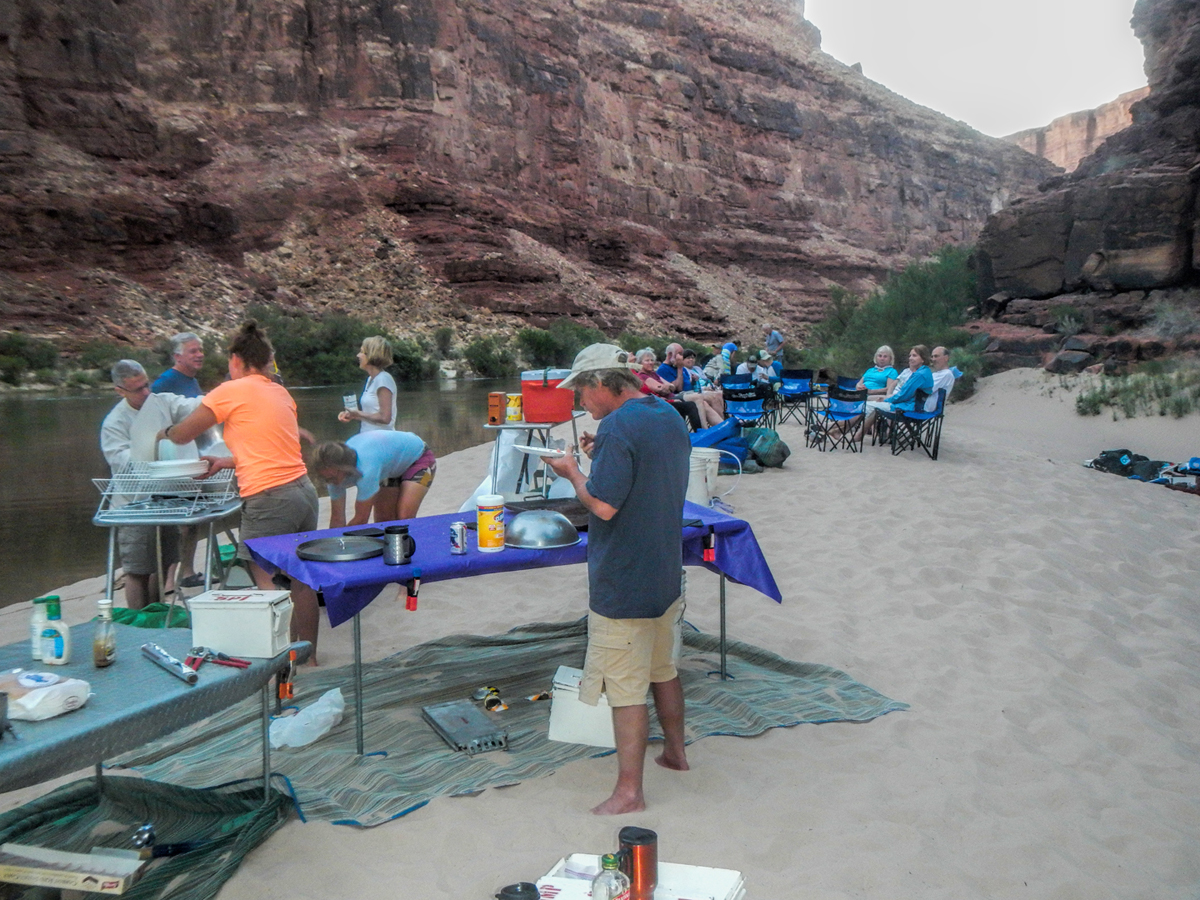

 Reply With Quote
Reply With Quote
